COURAGE
Encounters With
Female Self-confidence
MONA SIMON
SEPT. 2 — OCT. 1, 2023
Foreword
The exhibition series Courage presents photographer-artist Mona Simon’s intensive engagement over several years with the topic of female self-confidence. During this period, she encountered women of different generations and origins, and diverse cultural and religious backgrounds.
Simon explores the question of what it means to be a woman in times of global change – and all the women portrayed over the years seem to have one thing in common: They show courage on their way to self-determination and self-confidence. This powerful concept is the title and leitmotif of the exhibition.
In her work, Simon creates a space of encounter with others – and with ourselves. As viewers, we are asked to become aware of our personal, as well as our collective, history through the art of observation.
With a serial exhibition format divided into several stages, we invite you to participate in the multifaceted encounters – between retrospect and the present, between the foreign and the private. In doing so, we would like to encourage an exchange about self- determination and identity. And we want to show the connection between transculturality and traditional gender roles in the age of diversity, as well as open a dialogue for mutual, cross-gender and cross-cultural appreciation.
Leila Cheraghi and team
courage
An introduction by Leonie Pfennig (translated from German)
What am I worth, and who besides me is allowed to determine that? This question has accompanied photographer Mona Simon since her childhood, sometimes more, sometimes less consciously, and like a loosely spun thread, it links the individual works in the exhibition “Courage,” which were created over a period of 15 years. “With photography, I sought out a medium that allows encounters,” says Mona Simon about her work, and so, on her travels and stays abroad, she encountered women from a wide variety of cultures, religions, and social and political backgrounds. Inspired by the question of what it means to be a woman and to learn what self-confidence is, she has listened to the women with her camera, always careful to meet them at eye level.
What does it mean to be a mother, a woman, a daughter, a wife? Who am I? And what am I worth? The question of one’s own identity is also central in Mona Simon’s life due to her personal migration experience. She came to Germany when she was ten years old; her family belongs to the Transylvanian Saxon minority in Romania. In the patriarchal society she observed a lower esteem for women, unequal treatment of girls compared to boys, but also the power and strength that can develop out of this unequal situation. Influenced by this observation, which she also particularly admired in her own mother, Mona Simon set out on her own search for the image of female self-empowerment and its many facets in the world.
The exhibition is designed as a four-part cycle of photographic meetings: Each week, with its four opening days, is dedicated to a word that describes the respective encounter. Women from different geographical and social contexts meet in the exhibition episodes, but what they all have in common is an expression of strength, a special presence, and an awareness of the self.
#1 CONNECTION
Sep 2-6, 2023
The Determination of the Mosuo Women | China
The Pride of the Căldărari Women | Romania
In the first set encounters, Mona Simon juxtaposes portraits of Romanian minority Căldărari women with those of Chinese Mosuo women under the theme “Connection.” The Căldărari (English: Kalderash) are members of a Roma sub-minority originally native to southeastern Europe, many of whom originally worked as blacksmiths or boilermakers. Like many Roma and Sinti, they are viewed with suspicion and defamed in Romania, and as in many Roma communities, Căldărari societies are strongly patriarchal. Young girls are married off by their parents, only male family members are allowed to inherit, and schooling is not a high priority for girls. Within this unequal society, Mona Simon met women who, despite the oppression under which they live, are proud and carry this pride outwardly, who feel connected to their culture and their tradition, and radiate a self- confidence that no one can take away from them. Connection is also shown through the patterns and fabrics of their clothing, which are passed down from generation to generation like patterns for their preordained life paths.
This is juxtaposed with photographs of Mosuo women from the Yunnan Province of China – a matriarchal society in which women call the shots, and also bear most of the responsibility. Women and men live separately; marriages have only existed since the Cultural Revolution in the 1960s. These women also have self-confidence written all over their faces which goes unquestioned. A text by Fiona MacGregor on the website gives a deeper insight into this series.
The Pride of the Căldărari Women
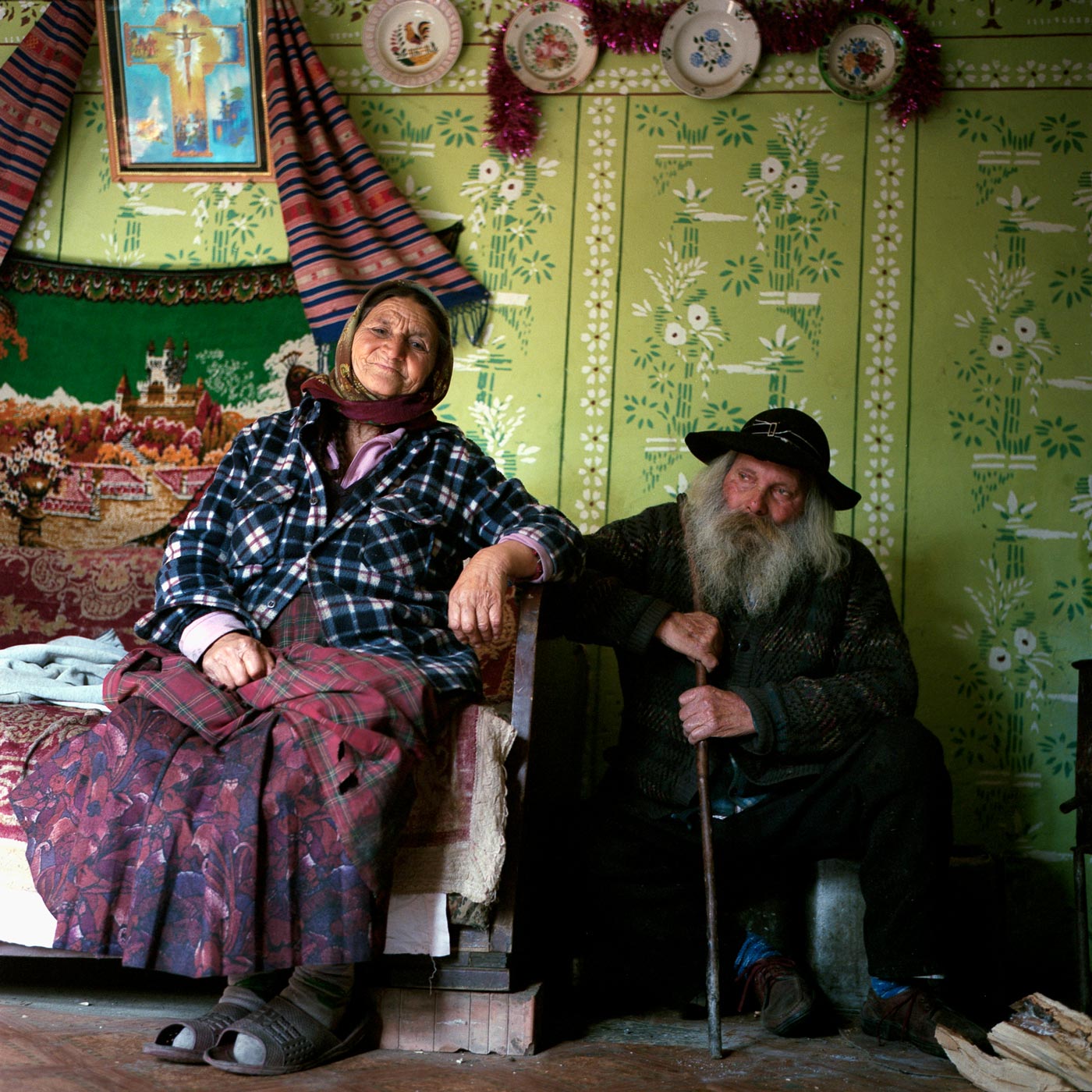



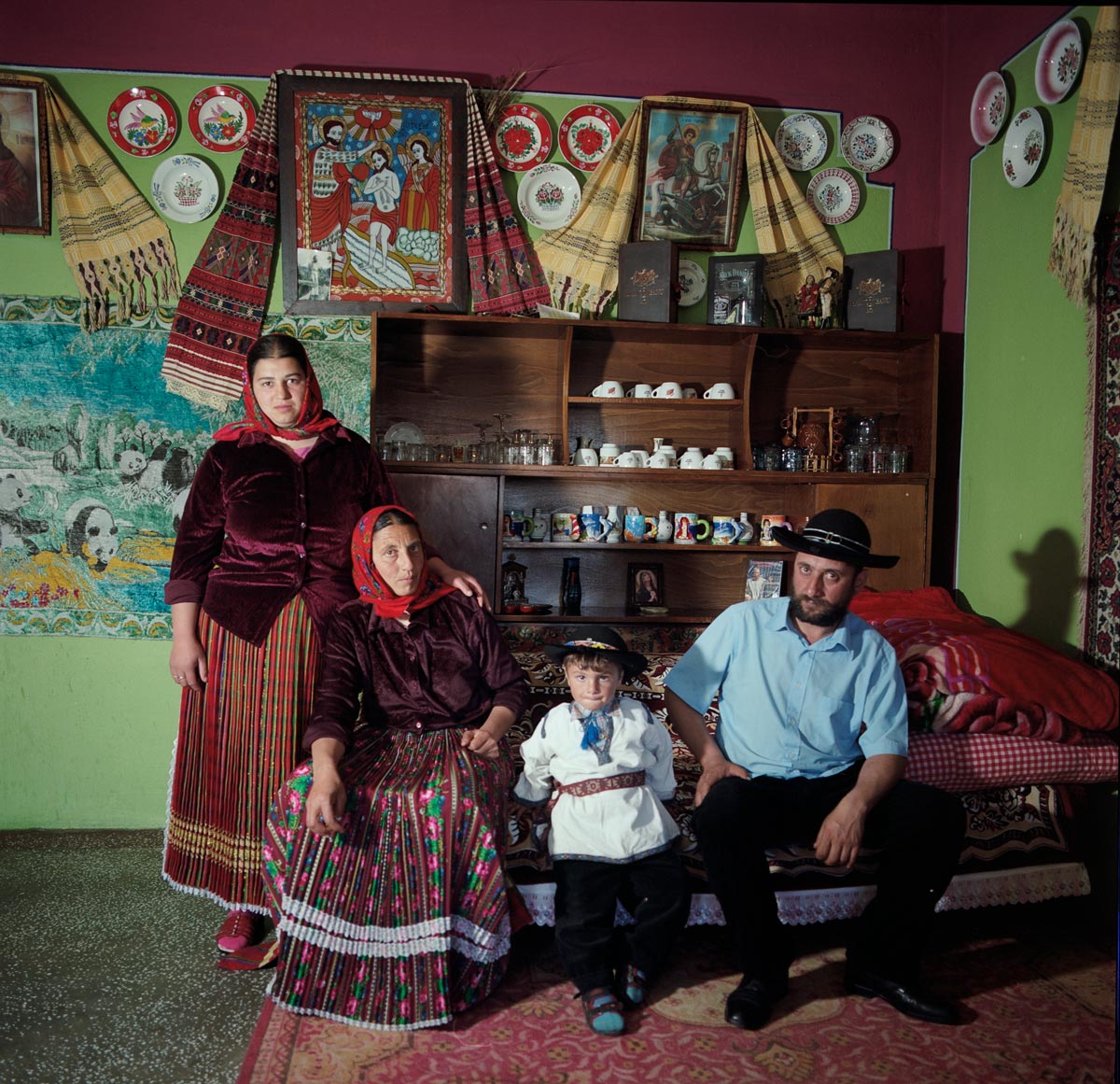
The Determination of the Mosuo Women
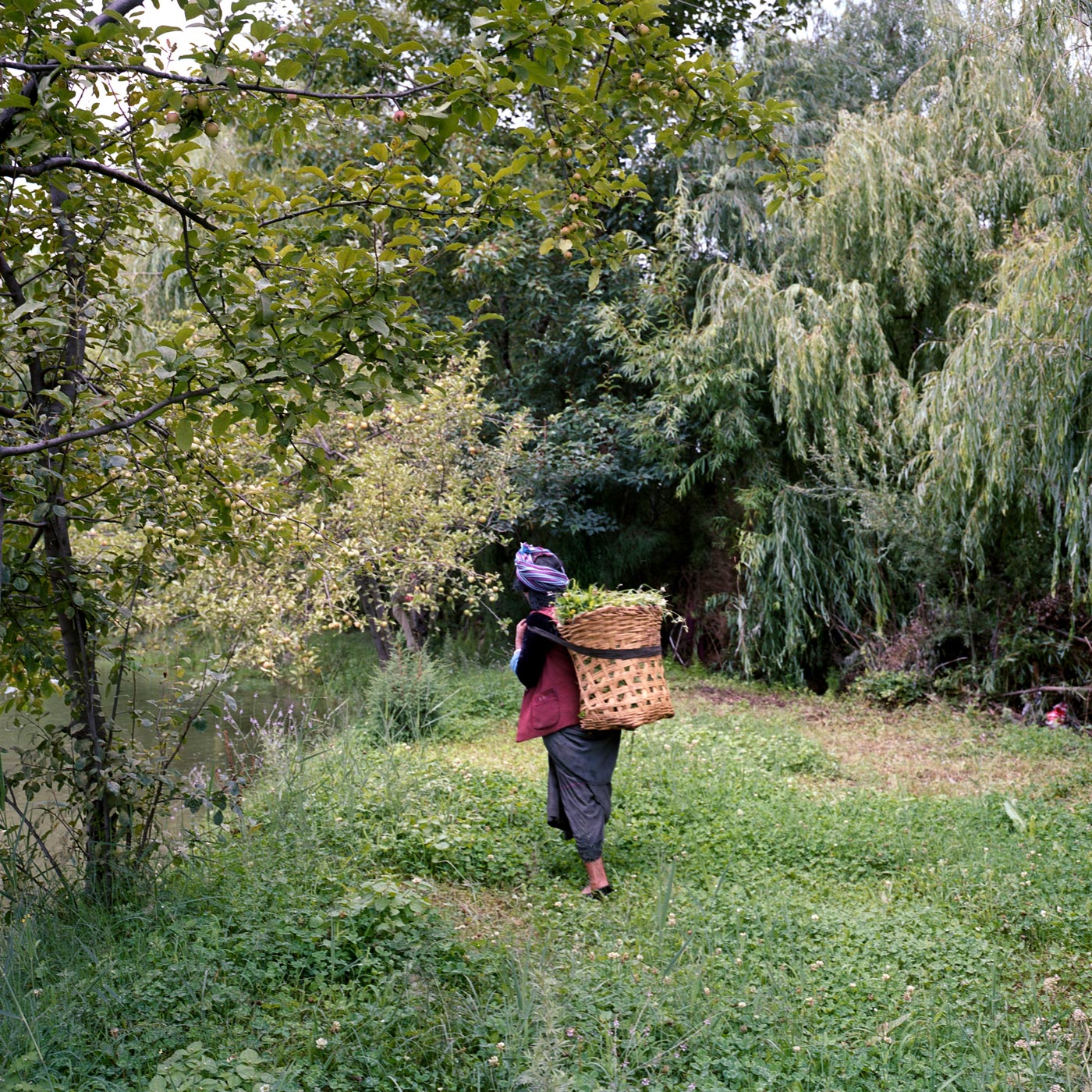



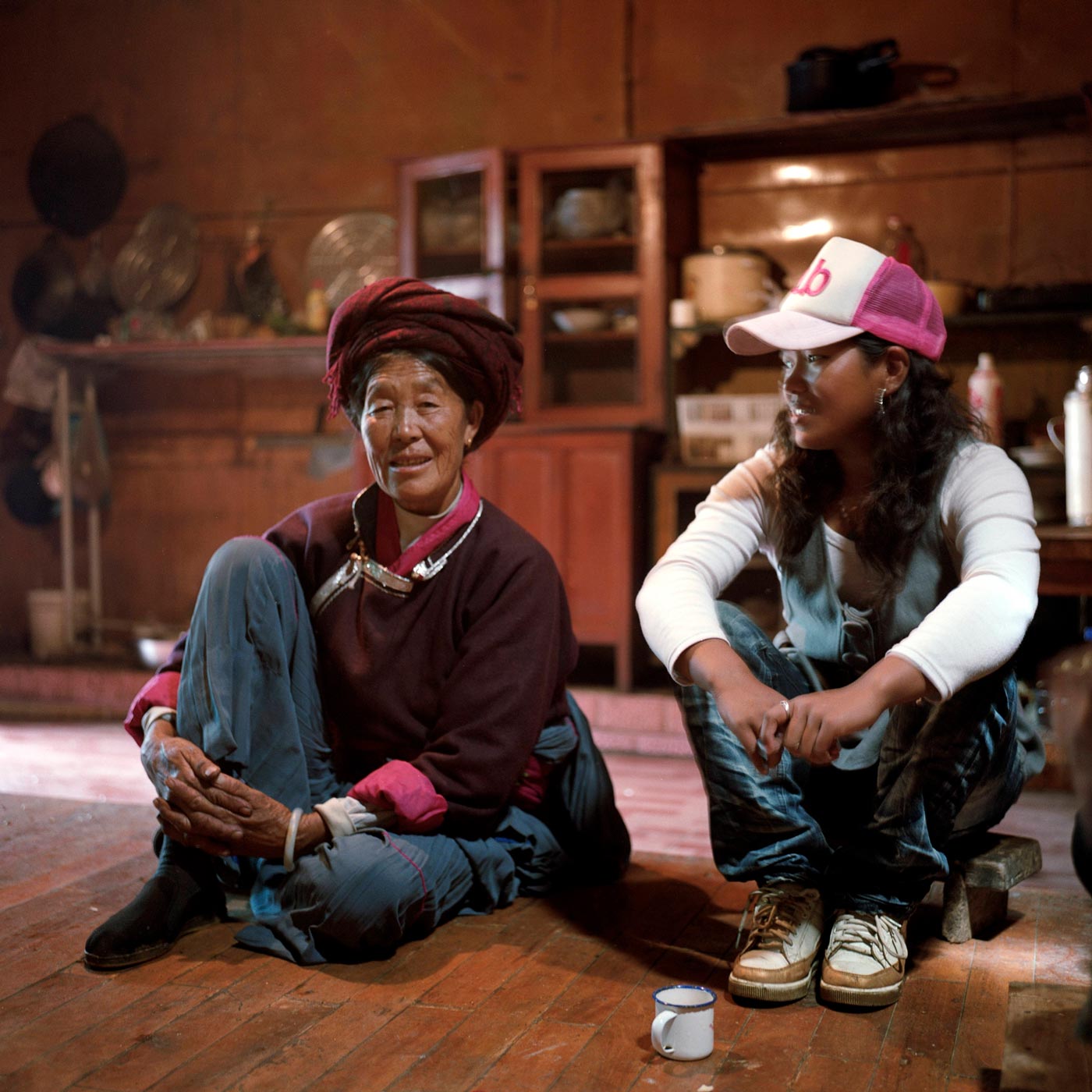
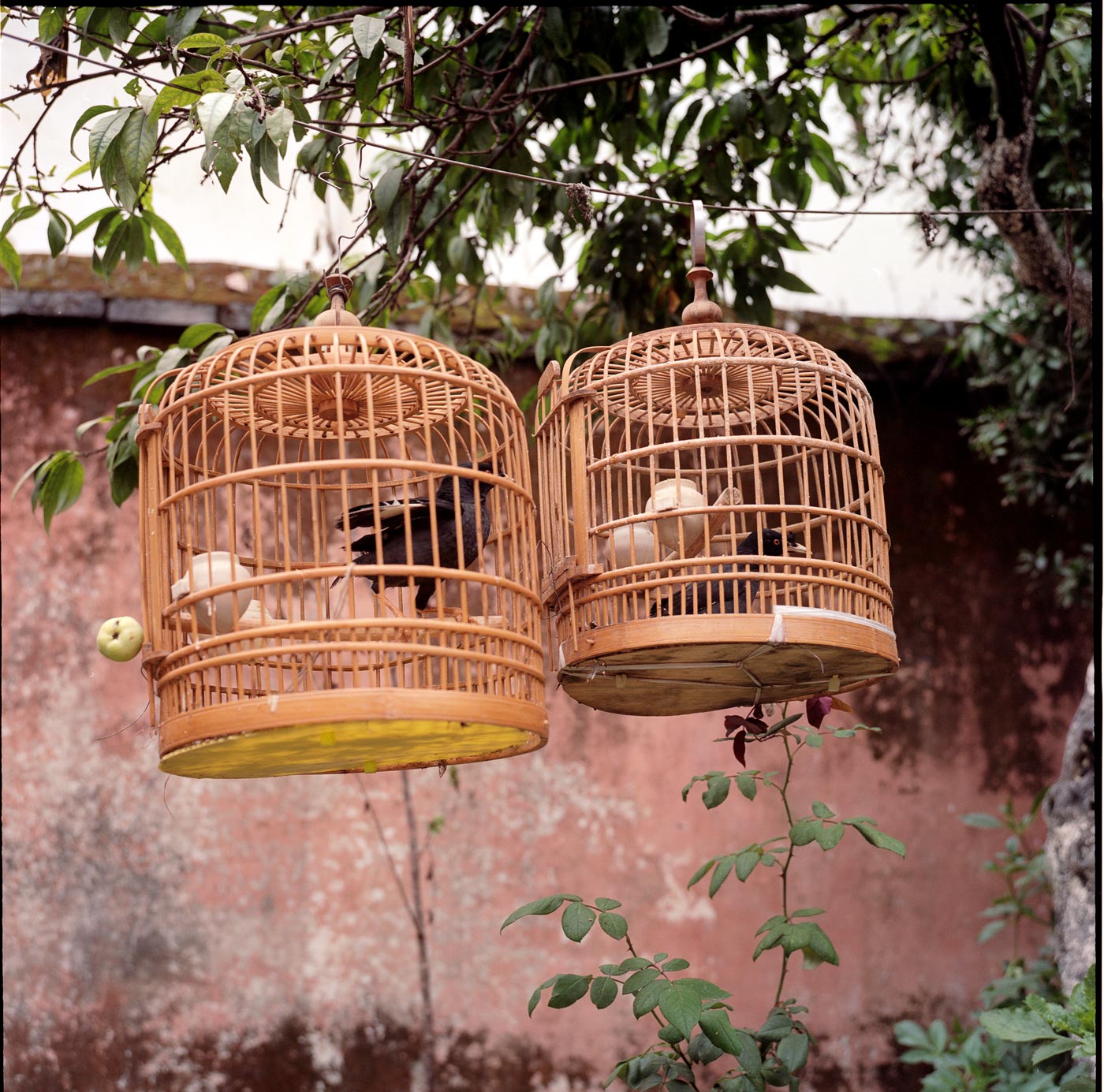
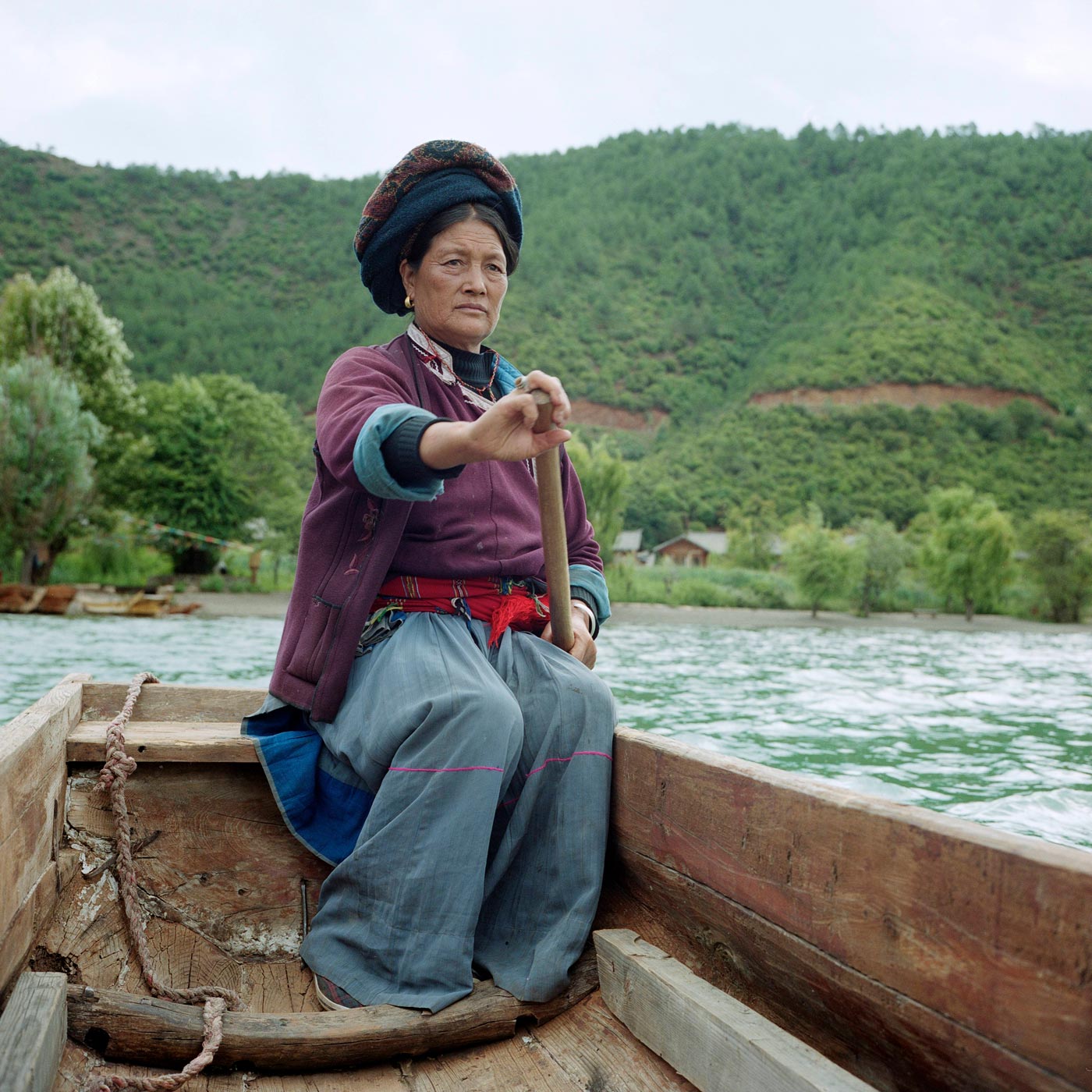
We really don’t need husbands
Fiona MacGregor
Among the Mosuo people of China’s Yunnan Province, tradition dictates that women call the shots, there are no marriages and sexual partners lead separate lives, even if they have children together.
That their birth family is far more reliable than families formed by marriage. ‘We have a saying that explains it,’ says Qi Du back at the wooden farmhouse where she lives with her extended family. She’s stirring up a potent concoction of fermented rice and fried egg in a wok over the open fire that she says will help fend off the bitter, clate-Autumn cold. ‘A man and a woman are like two trees growing side by side: their roots are separate, but their branches overlap. A Mosuo saying goes something like this: ‘If you [a woman] are lying dead by the road and your love-friend walks past, he will keep walking. If your little brother sees you there, he will stop and cry.
Qi Du is a chatty, smiling woman in her early 40s with a passion for gambling on card games. She sees no reason to live with a long-term partner to achieve happiness in love, sex and child-rearing. We really don’t need a husband because in every household, you have a brother and a lama [a male family member who has been educated at the local temple and lives as a monk],’ she says. Marriage, in the conventional Western sense, didn’t exist among the Mosuo until new rules were imposed in the mid-1960s during Mao Zedong’s Cultural Revolution, forcing couples to enter official marriages in the same way as the nation’s Han majority. Until then, if a woman and man wanted to start a sexual relationship, he would start to visit her house at night. When one or both partners wanted to end relations, he would simply stop visiting.
UPHOLDING TRADITION
Today, life around the lake is changing rapidly due to increased exposure to outside cultures. But ‘It’s better for men and women to live apart because there is less conflict. If you and your love-friend live together, it will lead to arguments about lots of small things. It’s 8pm, and the moon is full behind the jagged peaks that encircle Lake Lugu like dragons’ teeth. The white eye of a motorbike headlight approaches and then passes into the blackness. Walking beside me on our return from the market, Gongts Dash Duma, or Qi Du as she is known, looks back along the road the bike rider has taken. ‘Didi – my little brother,’ she says with a grin. ‘He’s going to see his aipengyou.’ A few minutes later, a second bike bumps past on the pock-marked road, then a third. There’s a slow but steady stream of riders now and most are on their way to visit their aipengyous – sexual partners whom they usually only meet at night – travelling to their lovers’ home after sunset and returning to their own houses at first light.
Earlier visitors to this mountainous region of southwest China named such relationships ‘walking marriages’. Now, the men of Yunnan Province’s minority Mosuo people use speedier methods of travel to get to their loved ones. But the principle remains the same: when a man and a woman begin a physical relationship, neither of them has any expectation that they will share daily life or a home – even if they have children together.
SEPARATE LIVES
Here, in one of the world’s last remaining matriarchies, Mosuo men and women usually live in their mothers’ houses their entire lives, believing with the rules less rigidly enforced by the current government, many in the 50,000-strong Mosuo community choose to follow their culture’s traditions. ‘People [lovers] don’t get angry with each other, because we don’t have to get a divorce,’ explains Qi Du. ‘If we don’t get along, we don’t get along and simply stop seeing each other.’
And, she adds, since most Mosuo people remain living with their birth family rather than their spouse, break-ups are less disruptive than in other cultures. ‘The men don’t tell the women what to do, the women just do it,’ she explains. ‘If the women don’t want to do something, we won’t. If we do, we do. Qi Du’s grandmother, Gonts Bima, in common with other Mosuo grannies, is the household’s matriarch and responsible for making all the family’s major decisions. Gonts Bima, whose face is as wrinkled as the plump brown walnuts that are being harvested around the lake, is sitting by the fire cracking up with laughter at her own jokes. She gives a comic performance of charades behind her son’s back. He’s a quiet man in his early 40s with a tolerant smile. Her gestures are funny, but clearly not particularly complimentary. She’s suggesting that he doesn’t bring home enough money for the extended family’s expenses. Yet for all her daft-old-lady antics, Gonts Bima, or Ama as she is known to the family, really does hold the power in this household. The land, property and possessions all belong to her. ‘If we need money for something or want to buy something important, we have to ask Ama,’ explains Qi Du. It’s also Gonts Bima to whom family members turn for advice. ‘When you were younger, didn’t you feel embarrassed speaking to your grandmother about personal matters to do with being a boy or becoming a man?’ I ask LiJia Zuay, 35. ‘Of course not,’ he replies, looking puzzled. ‘I am never embarrassed with Ama.’
A HARD LIFE
Kuma, a bustling grandmother in her early 60s just laughs when asked if the men know that the women are in charge. ‘Of course they know. They know we are too important,’ she says. ‘Our culture is a good one, because women are free to make choices in love. The women have high status.’ But power brings responsibilities, and Kuma, in common with other Mosuo women to whom I speak, believes that a woman’s life is much harder than a man’s. ‘The women do everything, it can be very hard,’ she says with a sigh. ‘The men say they are full [after dinner] and don’t want to do anything.’ Modern life is also bringing changes to how Mosuo women feel about their power. Traditionally, men have taken little responsibility for raising their own children. In general, this hasn’t been seen as a negative. ‘Mosuo men are a lot less selfish than Han men because Han men only care about themselves and their immediate families, but Mosuo men care about everyone,’ says Kuma. Male role models are traditionally provided by the children’s maternal uncles, who live in the family home. But the traditional system means that the burden for providing most of a child’s physical and material needs lies with its mother, and the cost of raising a child alone is the most frequen tcomplaint raised by Mosuo women when discussing their matriarchal lifestyle. ‘It can be very difficult,’ explains Qi Du. ‘The men have labouring jobs, but often they won’t give money for the children.’ In the past, when the Mosuo lived a more subsistence existence, a child’s material needs were relatively basic. Now, with more exposure to the outside world through tourism, television, commerce and schools, women here say that they feel pressure to buy things for their children. This is one of the main reasons many women now prefer to have longer-term relationships with the father of their children and encourage them to be more involved in parenting. Older Mosuo women understand why the change is happening.
MOVE TO MONOGOMY
Ja Shima, a remarkably sprightly woman of 86 with a distinct fondness for baiju (the local rice spirit), had six husbands and six children by different fathers. Each relationship lasted between one and four years. ‘Three of them left me, and I left the other three,’ she says of her former husbands. ‘It was a hard life, because we never had enough food in those days and often the men didn’t contribute to the children’s upbringing. But if a man was no good in that way, I would just get another one.’ However, she thinks that it’s better now for women to stick with one man, at least while the are growing up. ‘Children were easier in the past. They didn’t need so many things and you could just make things for them,’ she says. ‘Now it’s harder for mothers if the men don’t contribute.’ Her neighbour, Li Hua, an efficient, handsome woman in her early 30s, agrees. She’s the only woman in the village who lives full time with her husband, the pair running a small guesthouse for the few Chinese tourists prepared to venture this far into the Yunnan–Schezchuan border region. ‘People think I am odd,’ she says with a sigh. ‘But it’s much better if you live with your partner. Many of the women with love-friends don’t get enough help to get things for the children.’ As if on cue, her husband arrives home from the market bearing several tiny pairs of socks and other clothes for their ten-month-old baby boy, who sits on the earth floor playing with sticks from the fire. The Chinese government’s one-child policy doesn’t apply to many of the country’s minority peoples, who generally live in less-populated rural areas. Mosuo women are allowed two or three children depending on which province they live in. Unlike the Han, who generally value boys above girls, Mosuo are happy to have daughters.
DESTINED FOR DIVORCE
Most Mosuo women still prefer to live apart from their lovers, even if they’re in a long-term relationship. One morning, as Qi Du prepares breakfast of black pudding and fried flat-bread, there’s an old man sitting beside Gonts Bima at the fire. I ask who he is, and Gonts Bima giggles like a schoolgirl, quickly makes a cross sign with her fingers to indicate that he is her love-friend, and then gestures that it should be a secret, although clearly everyone in the room knows exactly who he is. The pair have been together for decades, but generally it isn’t considered polite to discuss personal relationships in front of the men. Later, Gonts Bima explains that during the Cultural Revolution, she and her love-friend were told they had to live together as man and wife, but as soon as it was over, they went back to living apart. ‘We prefer it this way,’ she says, grinning. ‘We get on better. ’And younger Mosuo woman can also find it difficult to settle into sharing their home with a husband. Kuma tells me that, quite often, Mosuo women who travel to the nearest city, Lijiang, for work will marry a man they meet there, but such relationships often end in divorce. ‘I wasn’t happy living with him, we weren’t getting along,’ says 19-year-old Xiao-Juan, who married and had a baby with a Tibetan man she met there 18 months ago. Her baby still spends time with his father, but Xiao-Juan has returned to her village and already has a new love-friend. ‘I am happier now,’ she says. The intrusion of the wider world is also changing attitudes. There are still a few Mosuo villages without electricity, but in the majority, television has taken over from local dances as the evening entertainment of choice. With it has come the ubiquitous Han-Chinese soap operas – implausible dramas in which submissive female characters seek lifetime happiness with their hero of choice. It may be a coincidence, but Mosuo women, self-reliant for so long, now also speak about how nice it would be to have one man there to look after them during difficult times, but the pace of change is slow and most prefer the old ways.
#1 CONNECTION
EXHIBITION GALLERY
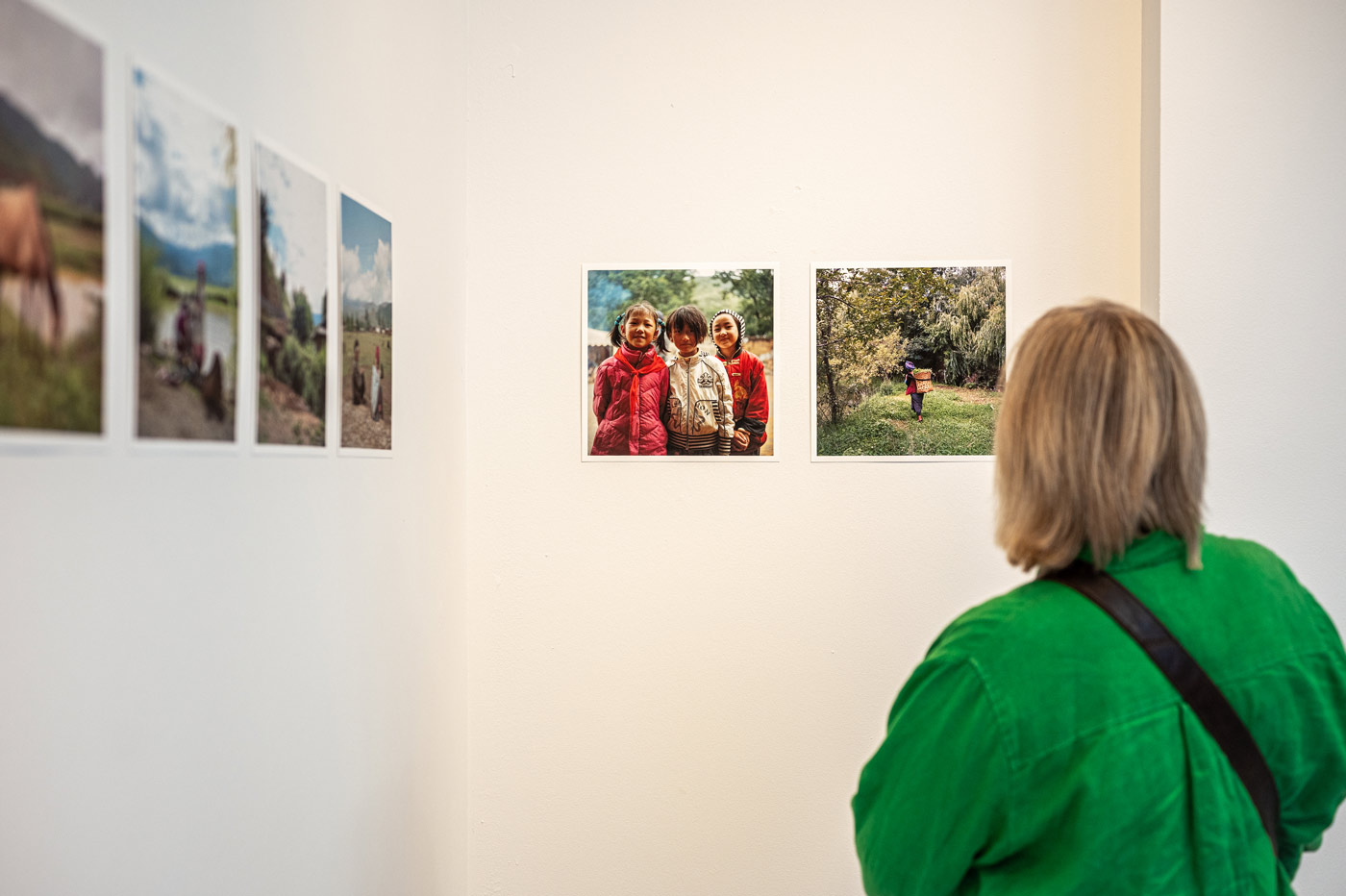

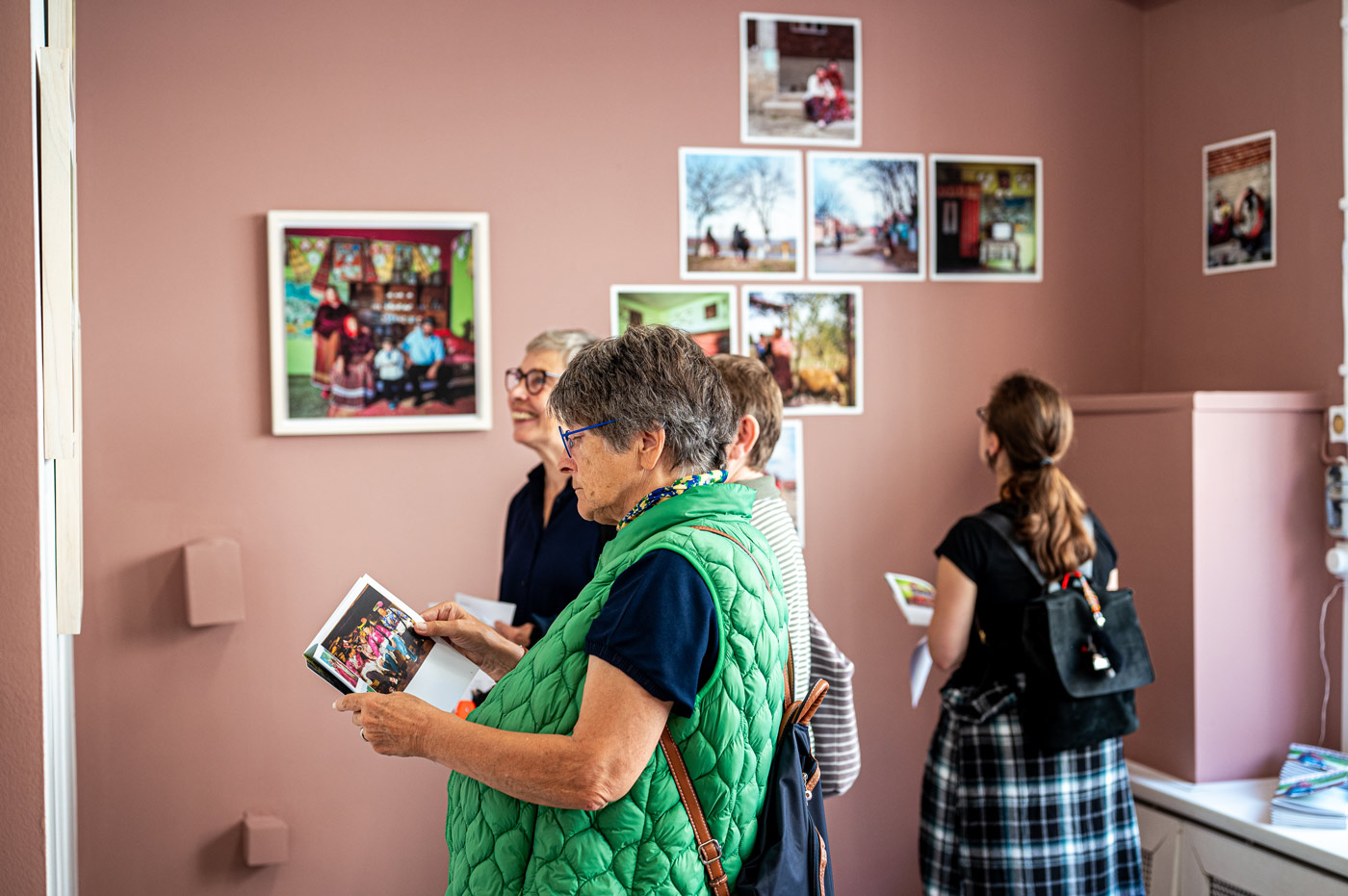
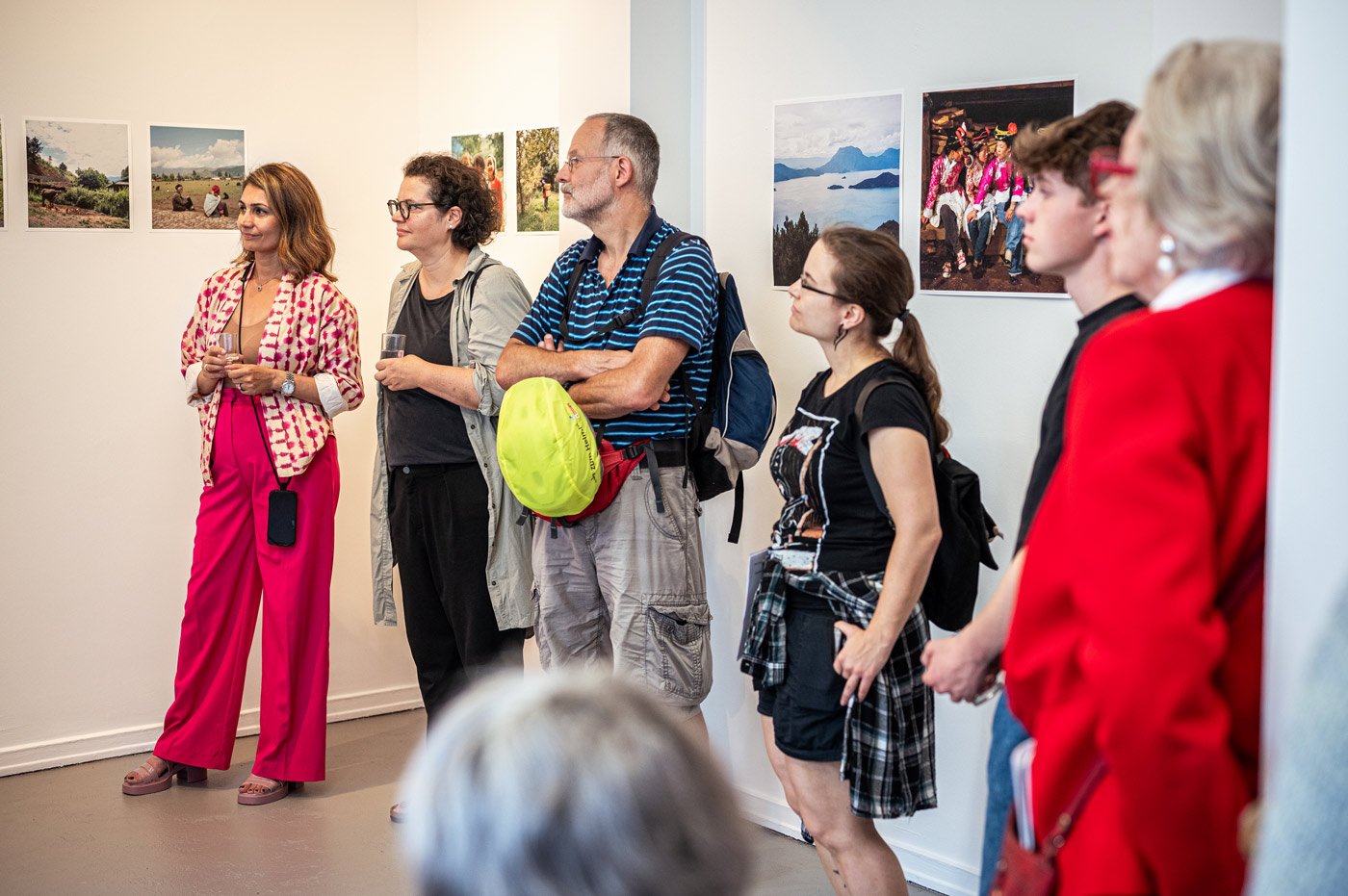
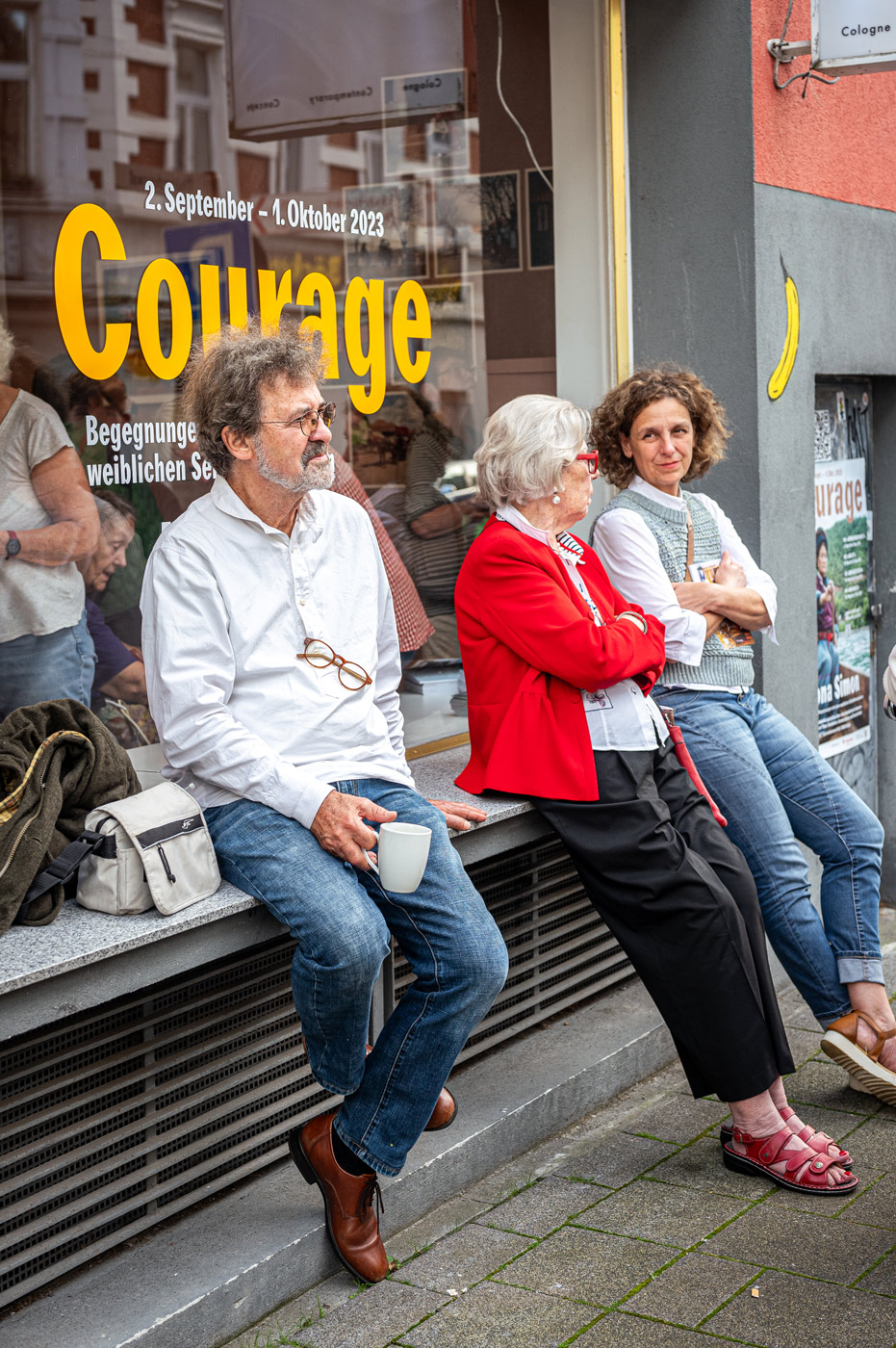
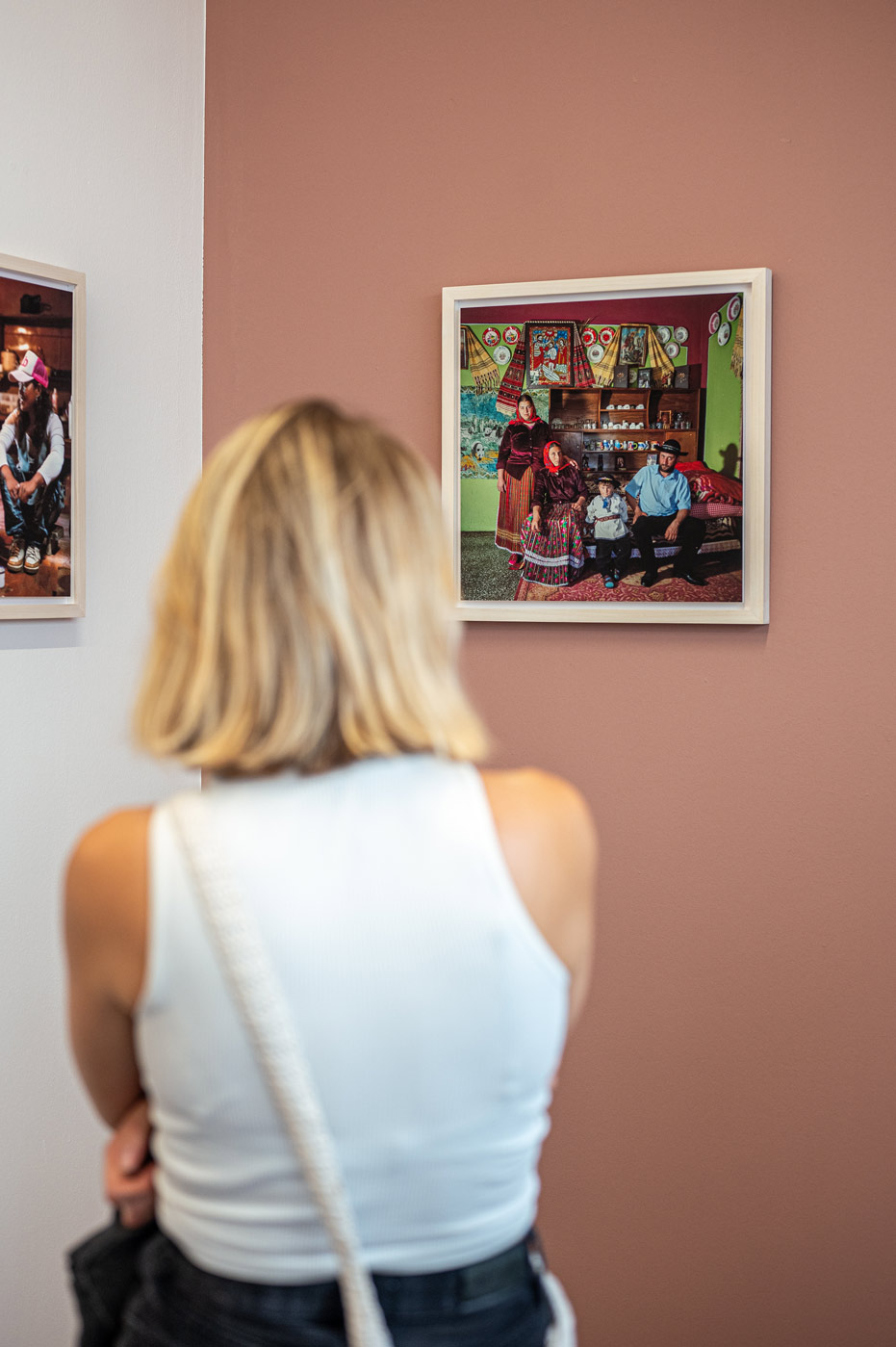
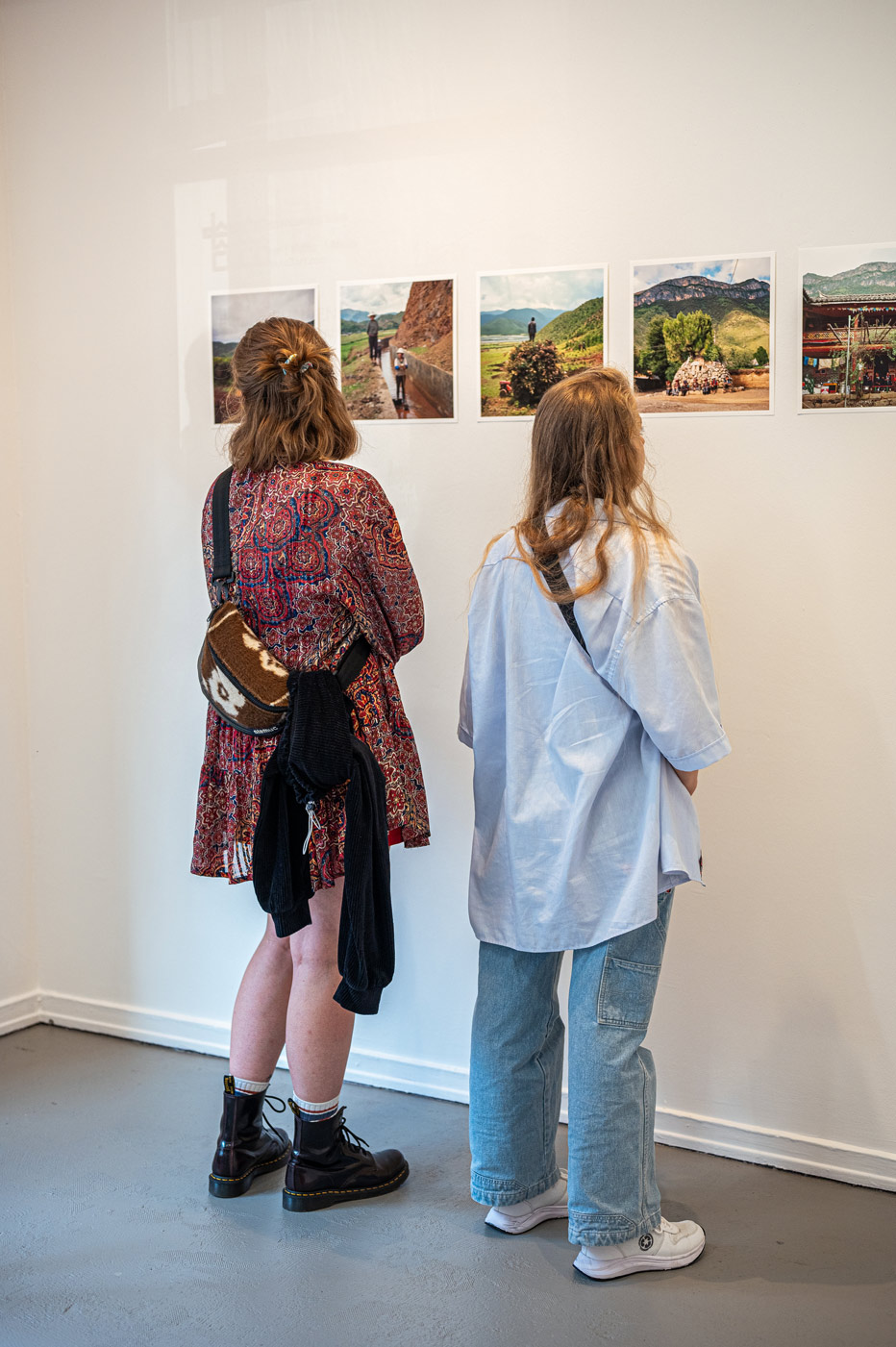
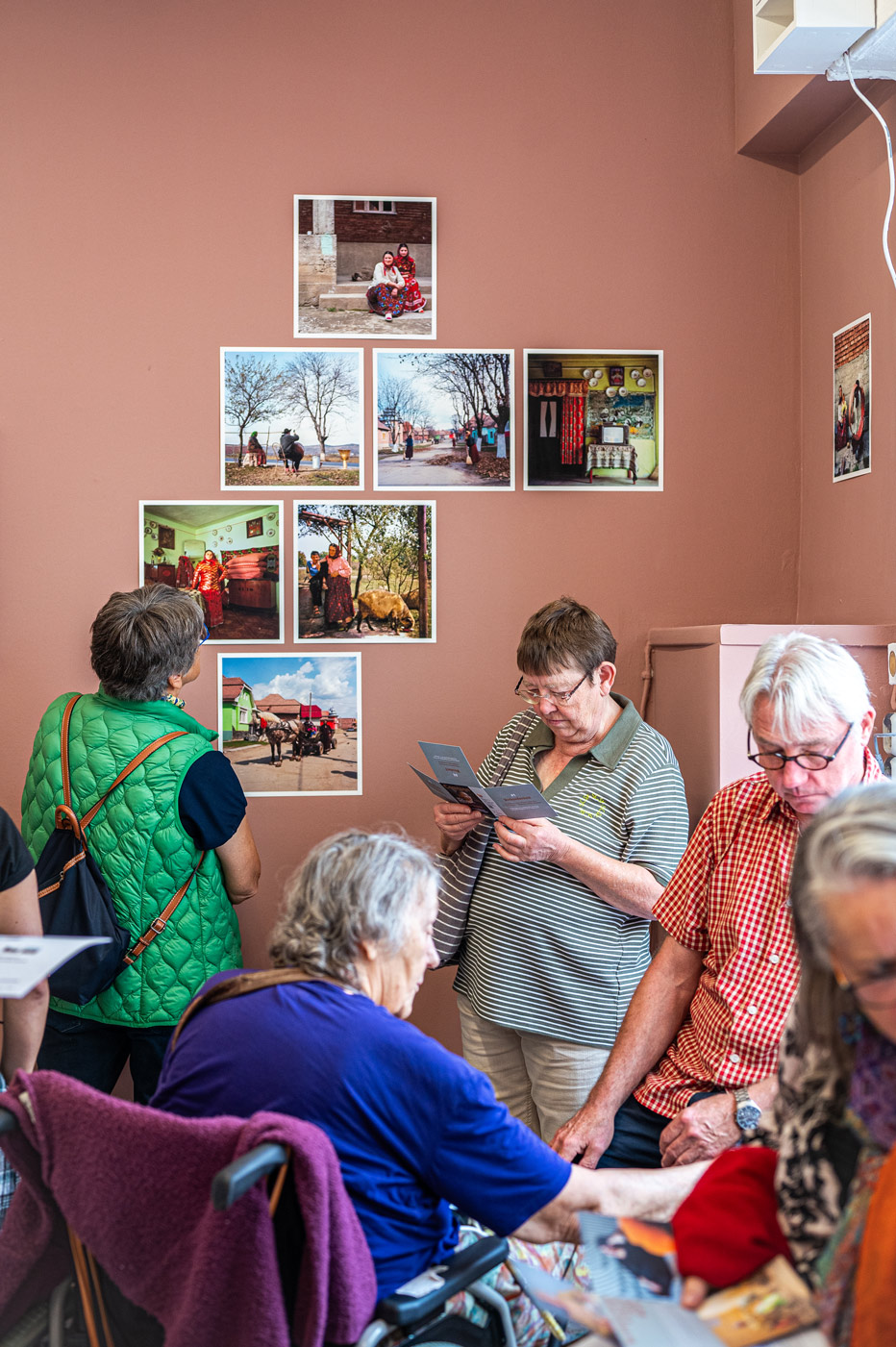
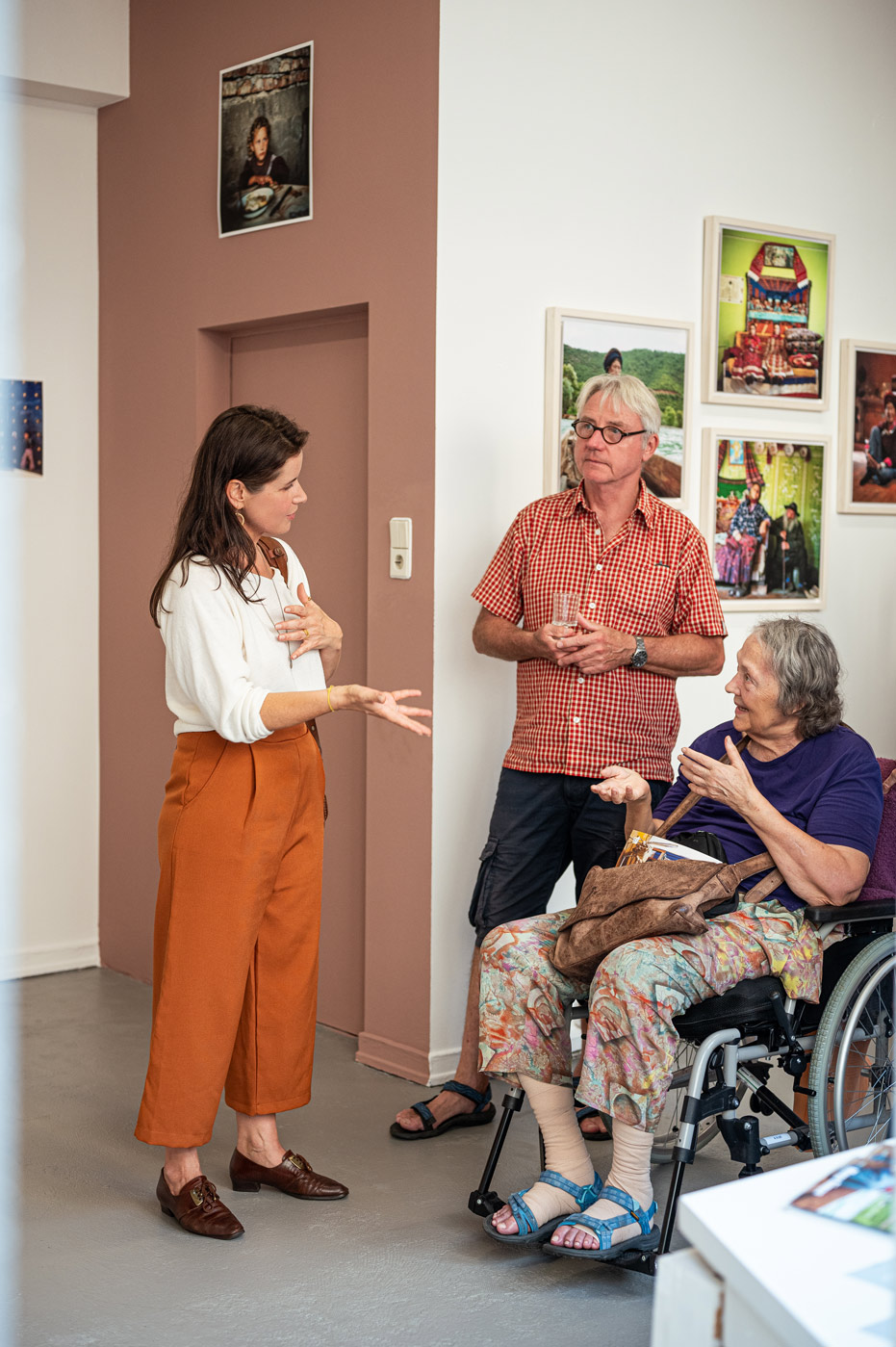

#2 POWER
Sep 9-13, 2023
In their Hands | Cambodia
Women are Gold | Cambodia
The second theme of the series, entitled “Power,” focuses on women from Cambodia, where Mona Simon lived for several years. Here she brings businesswomen, who work on the streets of the capital Phnom Penh as traders or cooks and independently provide for themselves and their families, side by side with women who have experienced the violence of the patriarchy firsthand and tell their stories of physical and psychological abuse. In cooperation with the NGO CEDAW, Mona Simon initiated the “Dignity Project”, which gives victims of domestic violence in Cambodia a voice and a dignified face. For this, she met victims in photo studios in Phnom Penh, normally the settings for opulently staged wedding photos. The women were elaborately made up and coiffed and present themselves in precious golden dresses: Alone, without their husbands, self-empowered. “The girl is a white cloth, the boy is gold” is a well-known Cambodian proverb, which Mona Simon uses as a basis here and flips around. As part of the “Dignity Project,” the women are allowed to shine, to make their stories public, and to experience respect and appreciation instead of the ridicule and condemnation they so often face from their families and society. The marks and scars of their experiences of violence are visible, even if they are obscured by golden trim, but the self-empowerment they have reclaimed through sharing their stories speaks from their faces.
WOMEN ARE GOLD
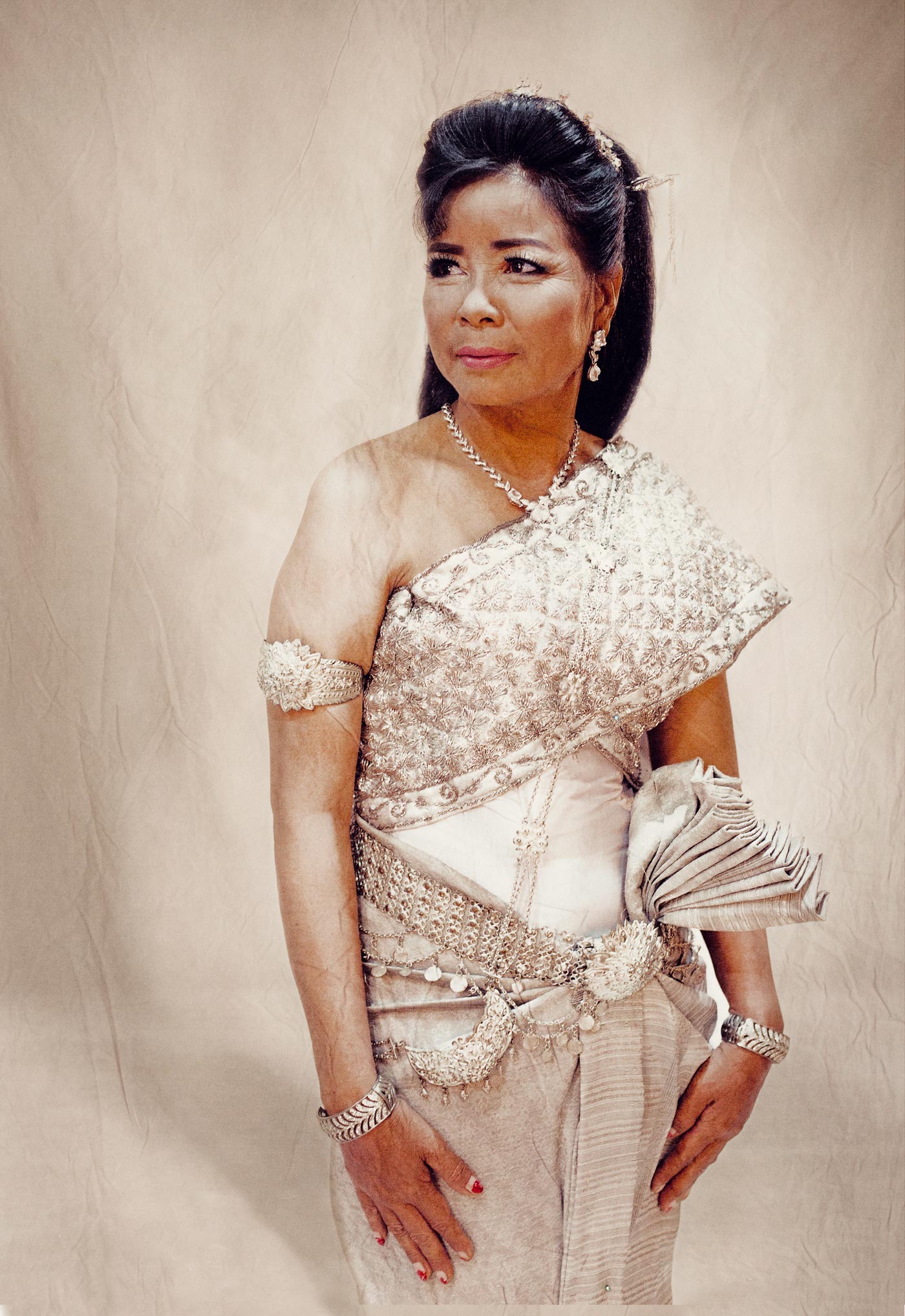
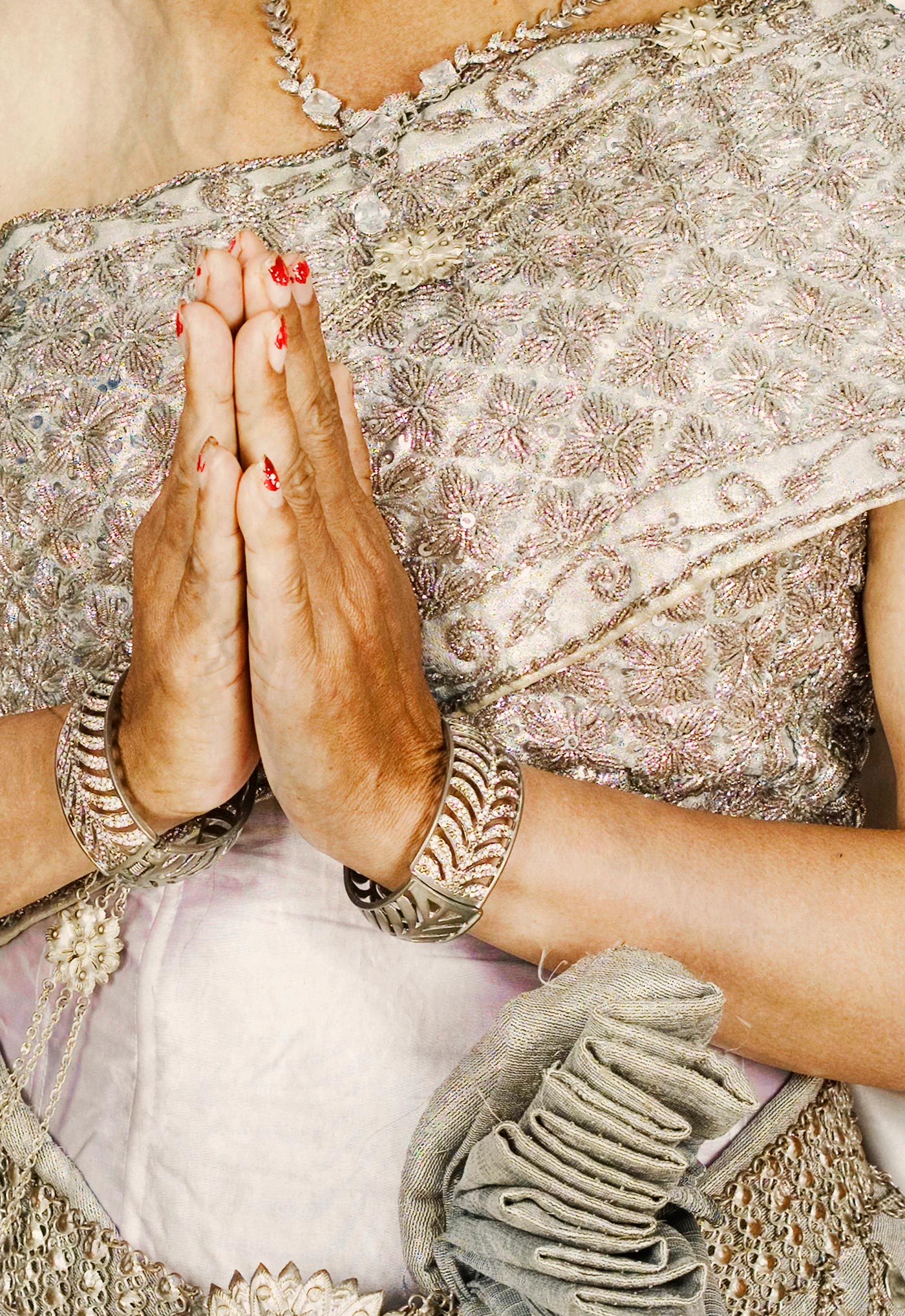

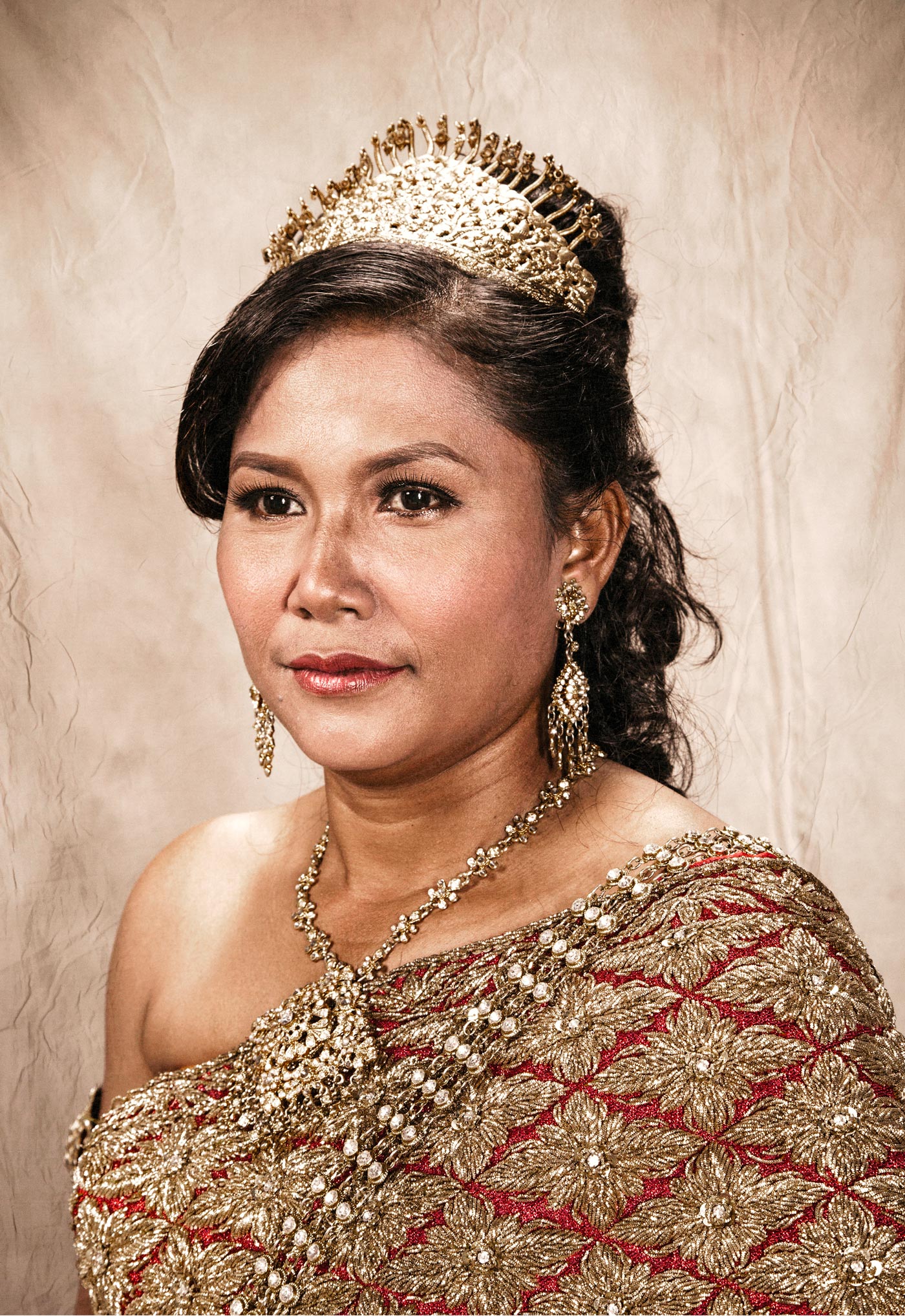
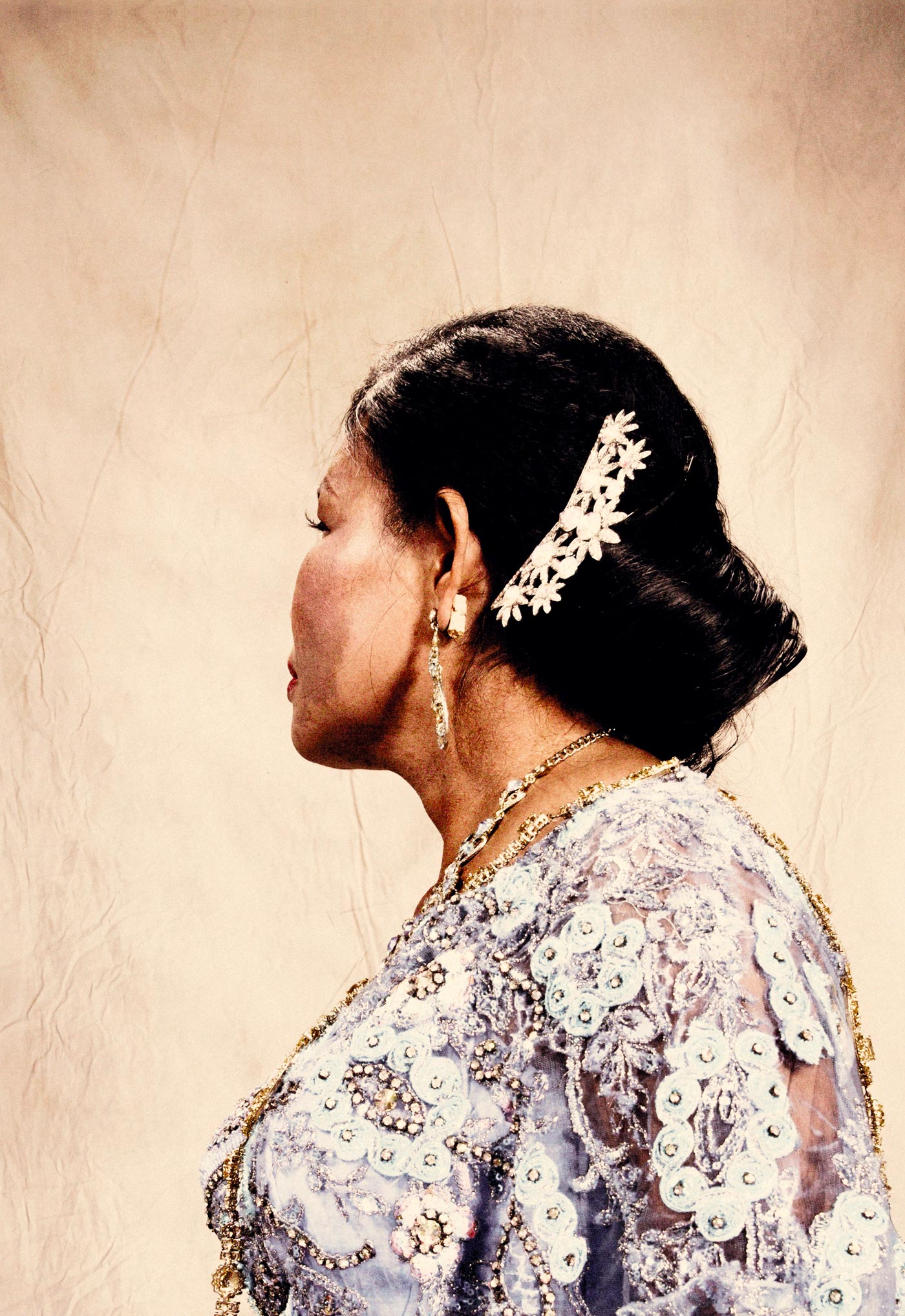
IN THEIR HANDS
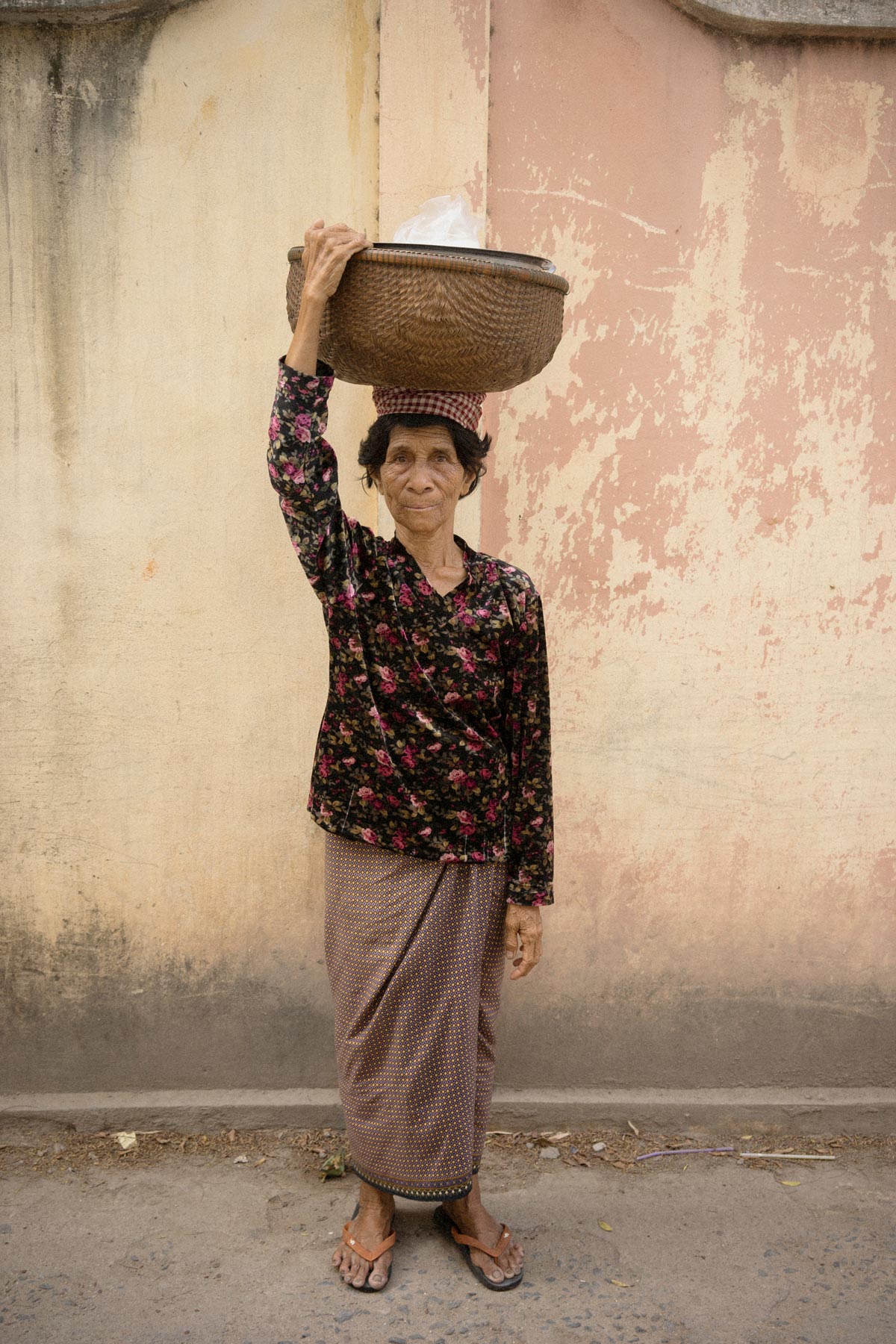



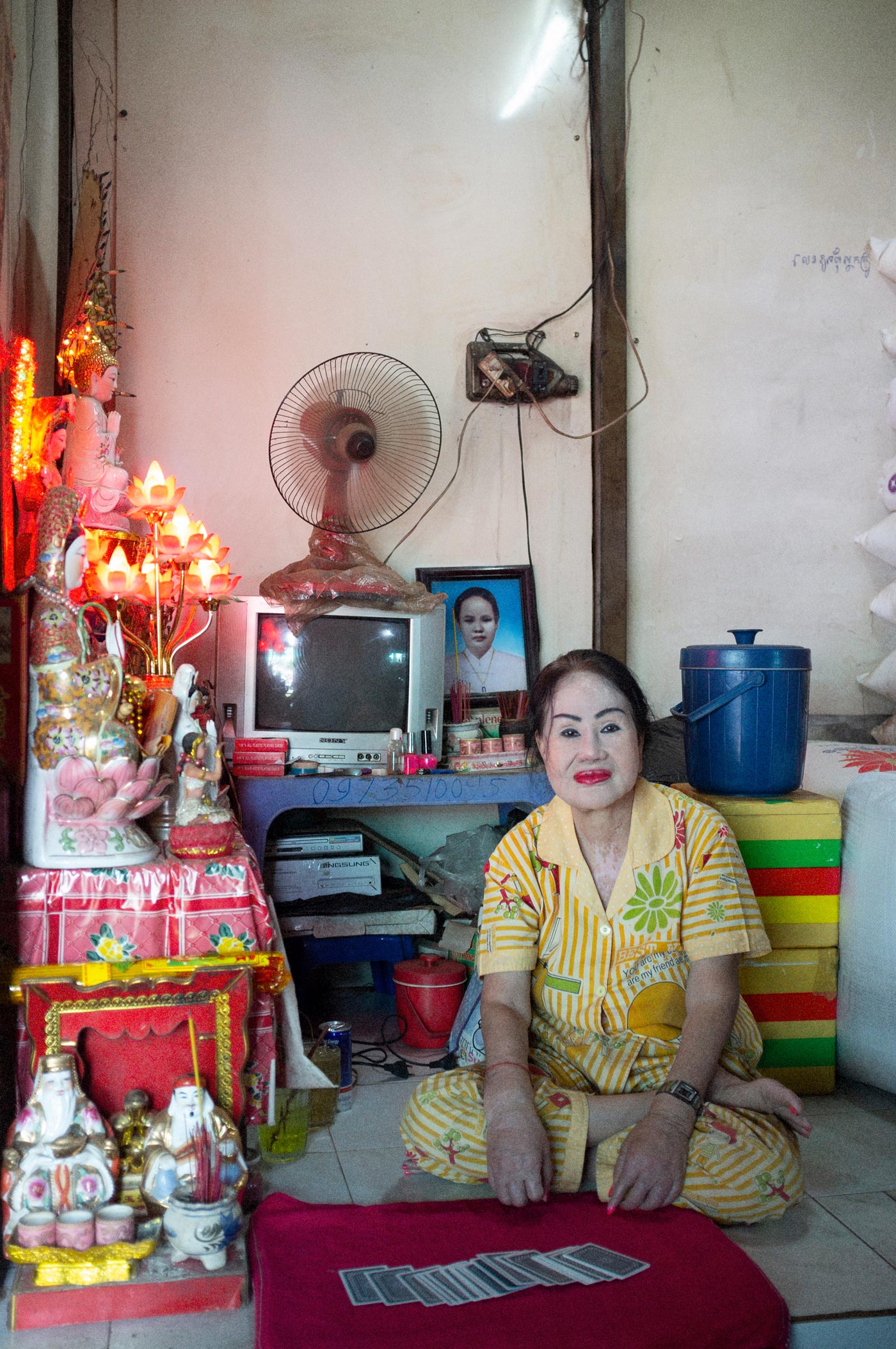
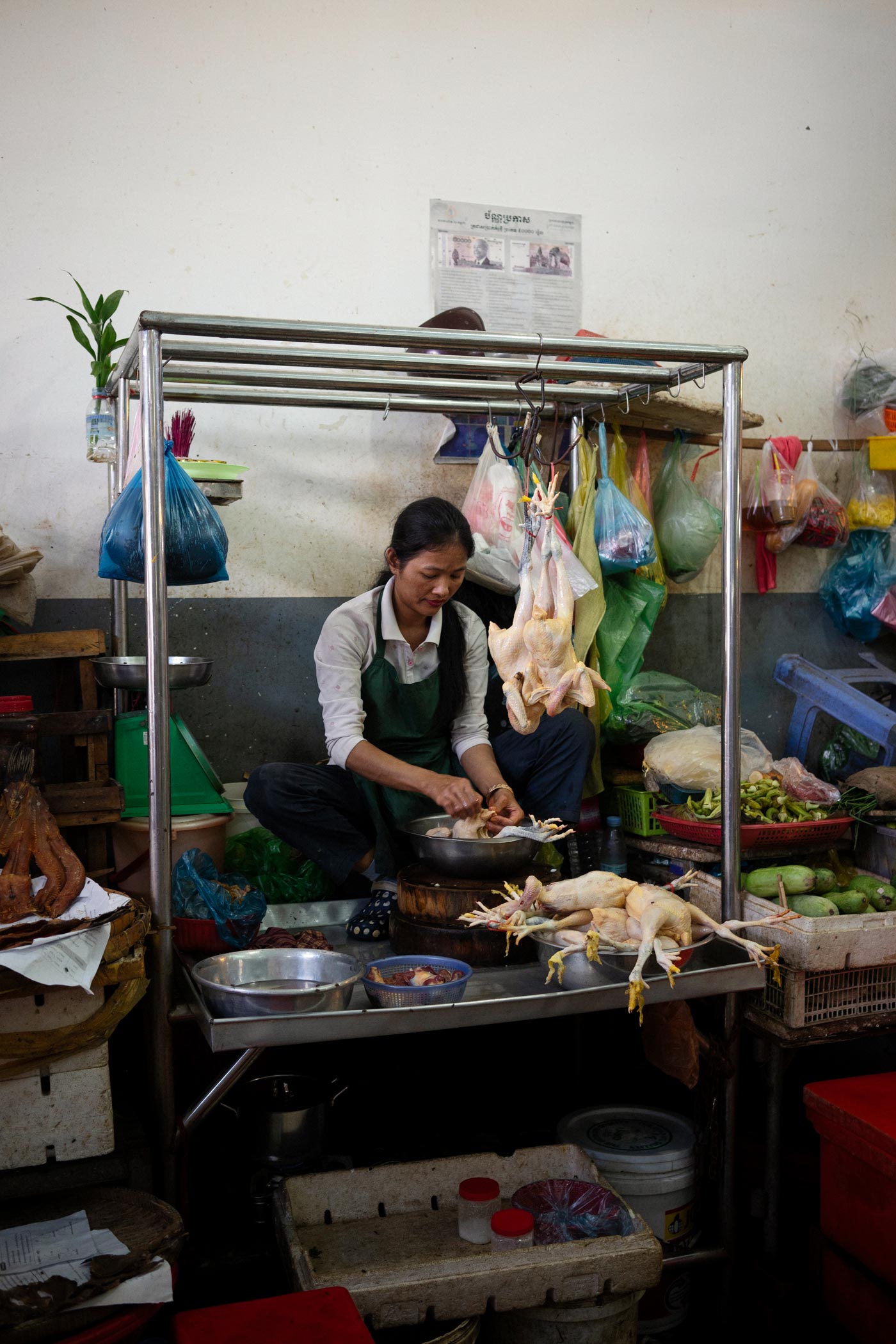

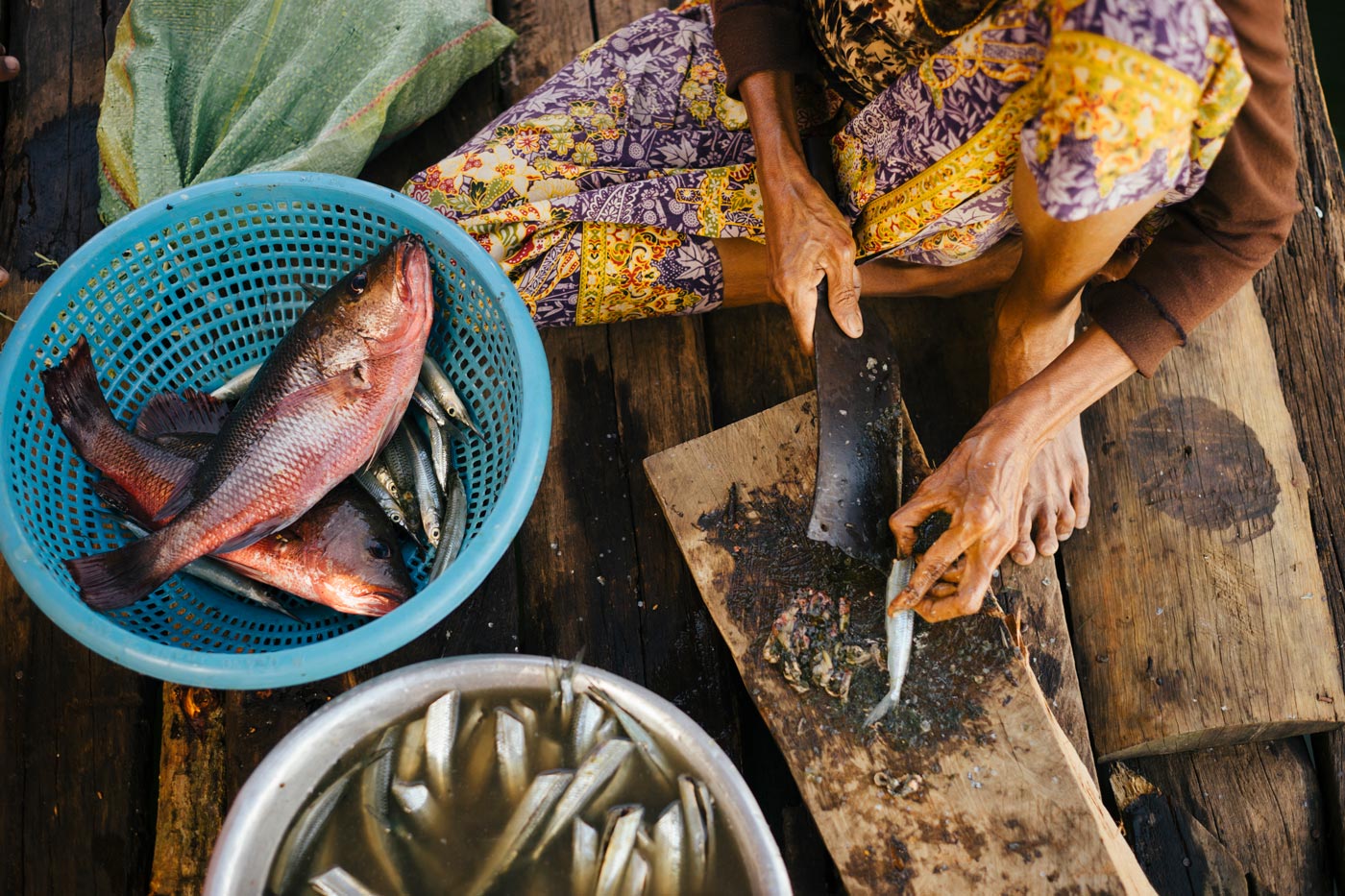

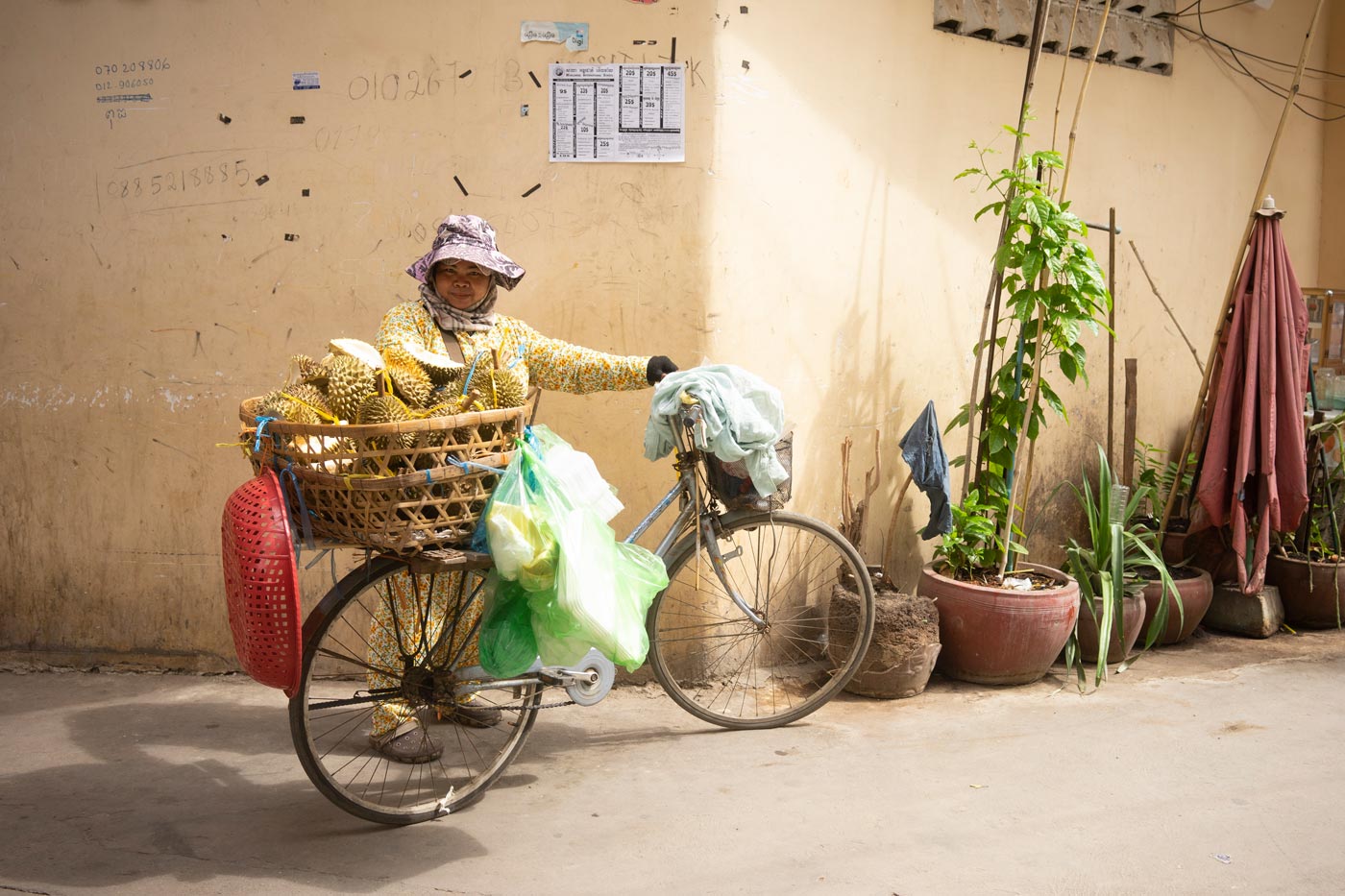

#2 POWER
EXHIBITION GALLERY

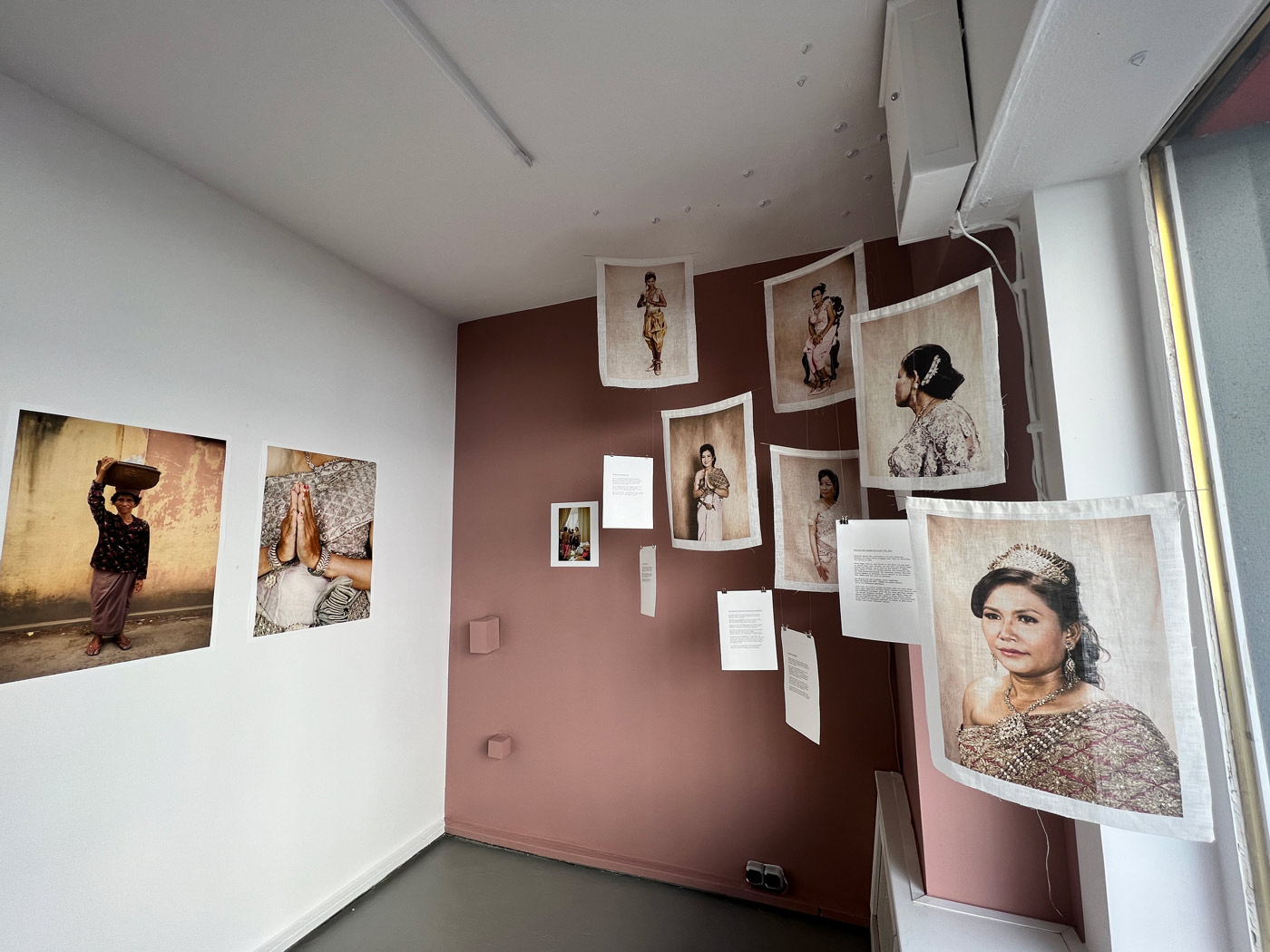
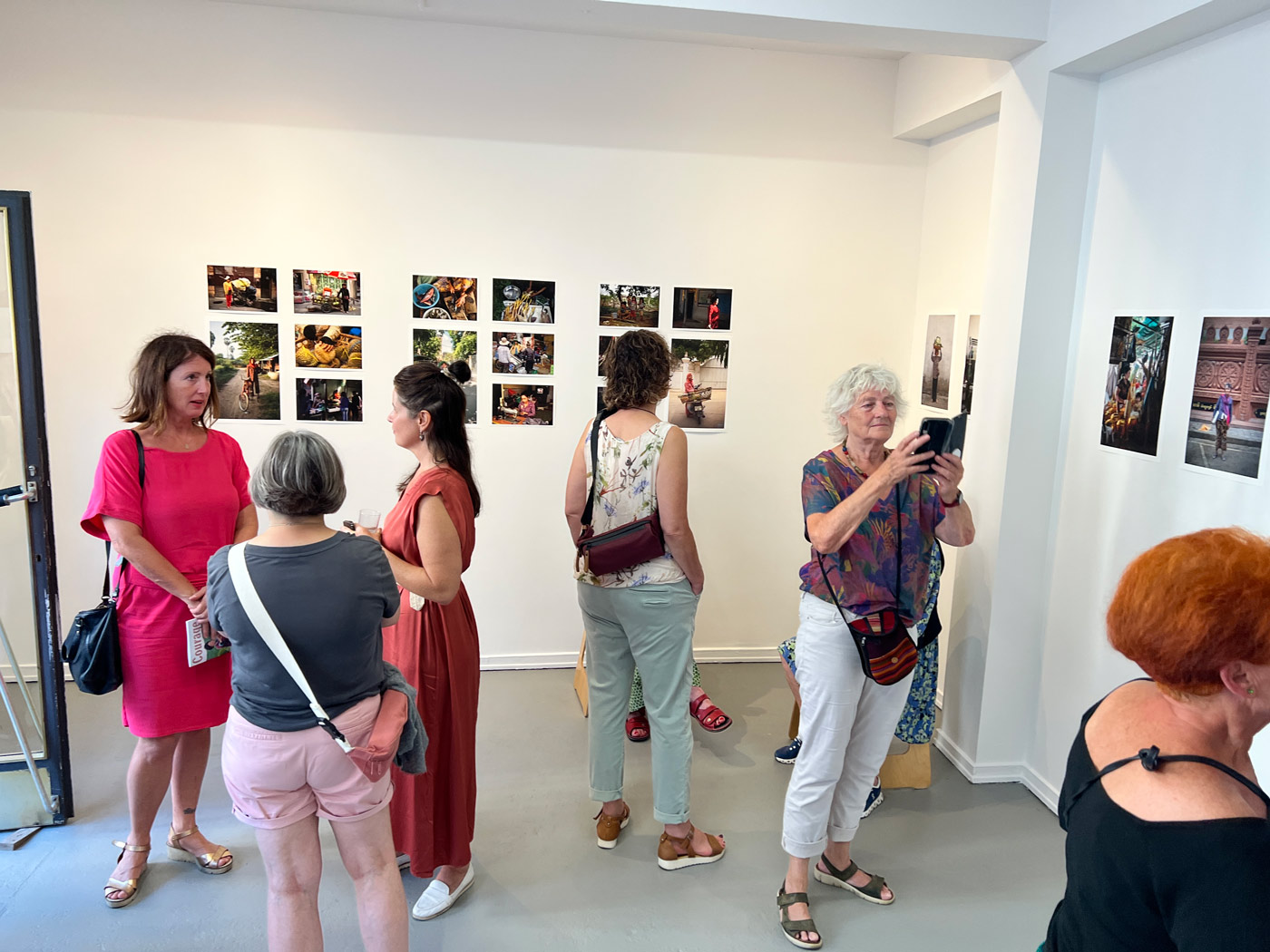







#3 AWARENESS
Sep 16-20, 2023
Nuns Path | Cambodia
The encounters | International
The encounters and meetings of the third theme are titled “Awareness”. The images of the young Buddhist nun Kosorl, whom Mona Simon met in Cambodia in 2012, are an expression of awareness of one’s own power and the questioning of common conventions. In Buddhism, female nuns have the function of supporting the male monks to live their spiritual lives – they are servants, workers or caregivers. The young woman, through whom Mona Simon gained insight into the life of a Buddhist nun, questions this system and searches for an alternative in order to be able to play a self-confident role in her spiritual life. She naturally takes the liberty to consider her way the right one. Since then, a convent purely for women in Cambodia has formed, even if the recognition of nuns in the spiritual order is still far from being equal to that of monks.
The search for one’s own right path is also at the forefront of the portraits of the women who are shown in the exhibition in relation to those of the nuns – women whom Mona Simon met on her travels around the world. Among them is Blaise, a young New Zealander who has been criticized and ostracized all her life because of her bodyweight, and who has set out to travel the world regardless. She defies this discrimination in a poem that is also presented in the exhibition as well as in the self-confident photographs that Mona Simon has taken of her.
THE ENCOUNTERS

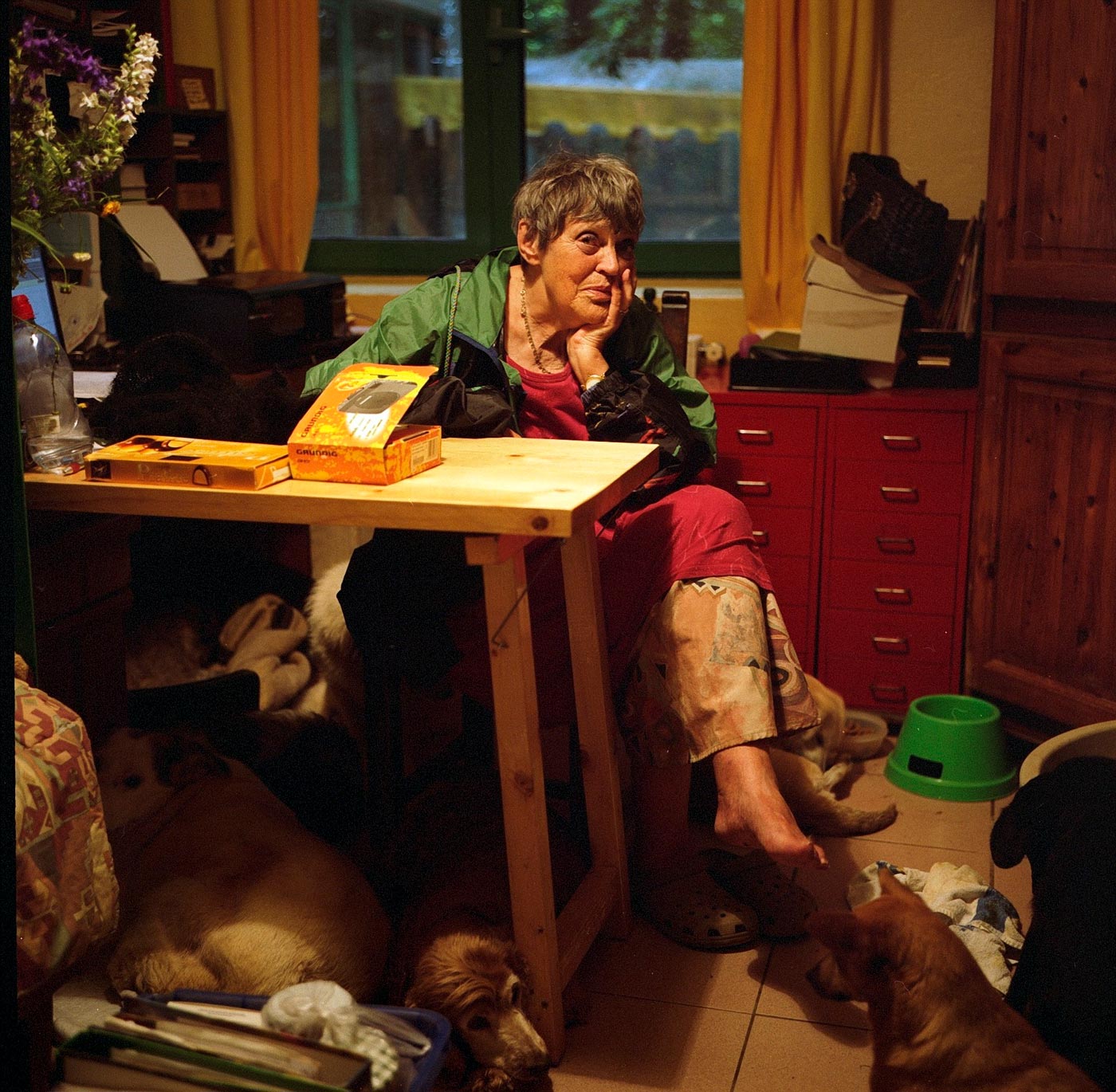
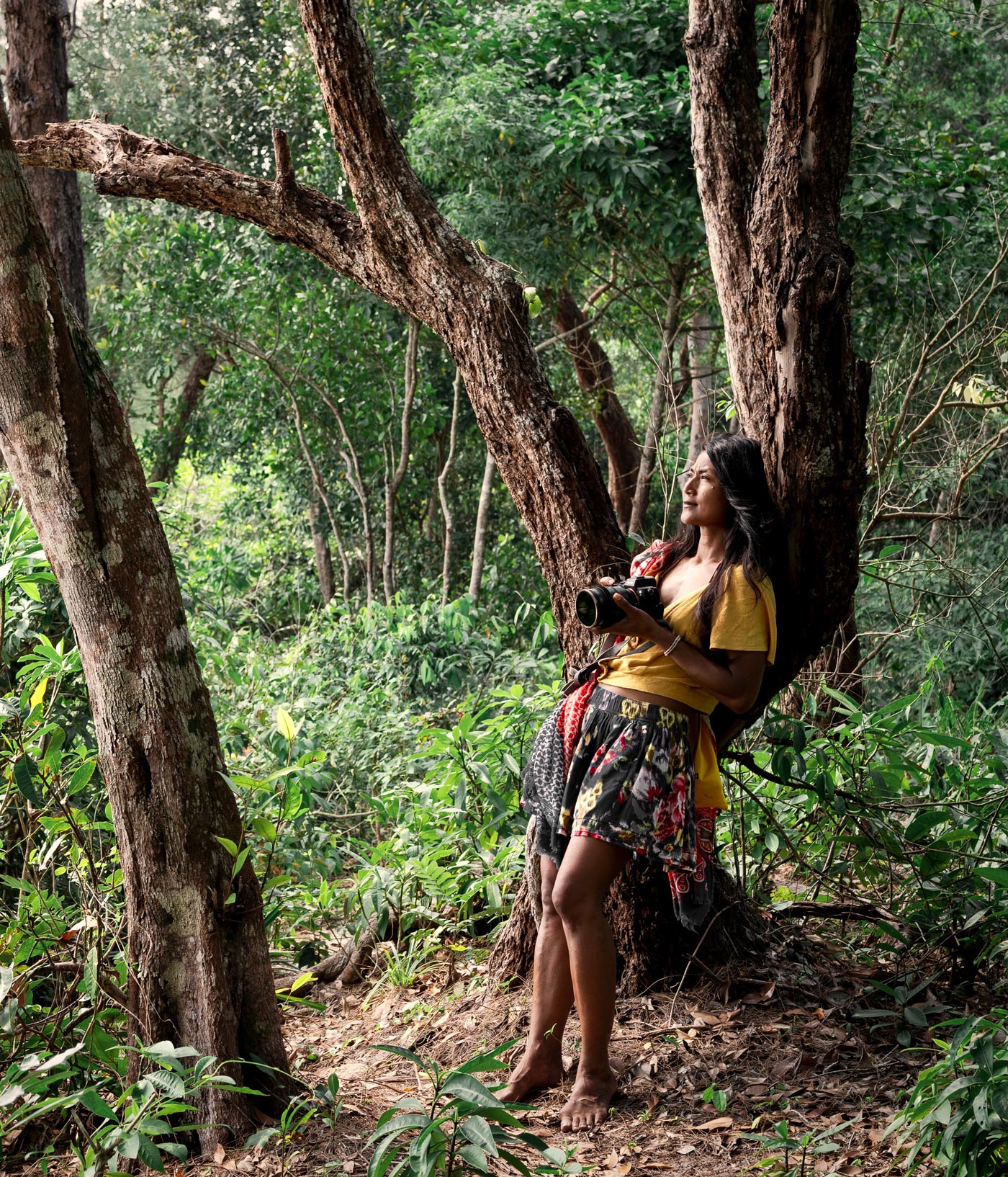


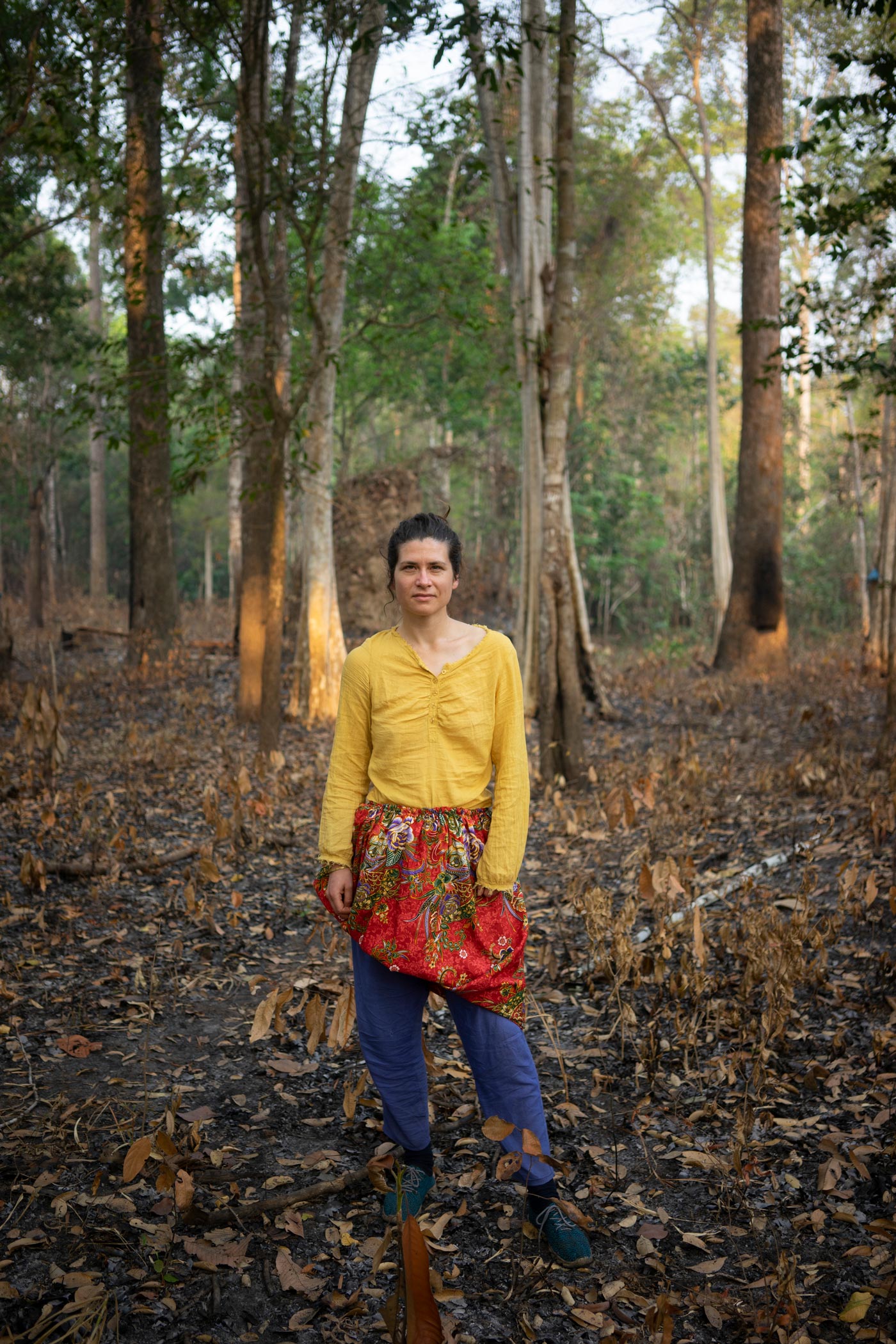
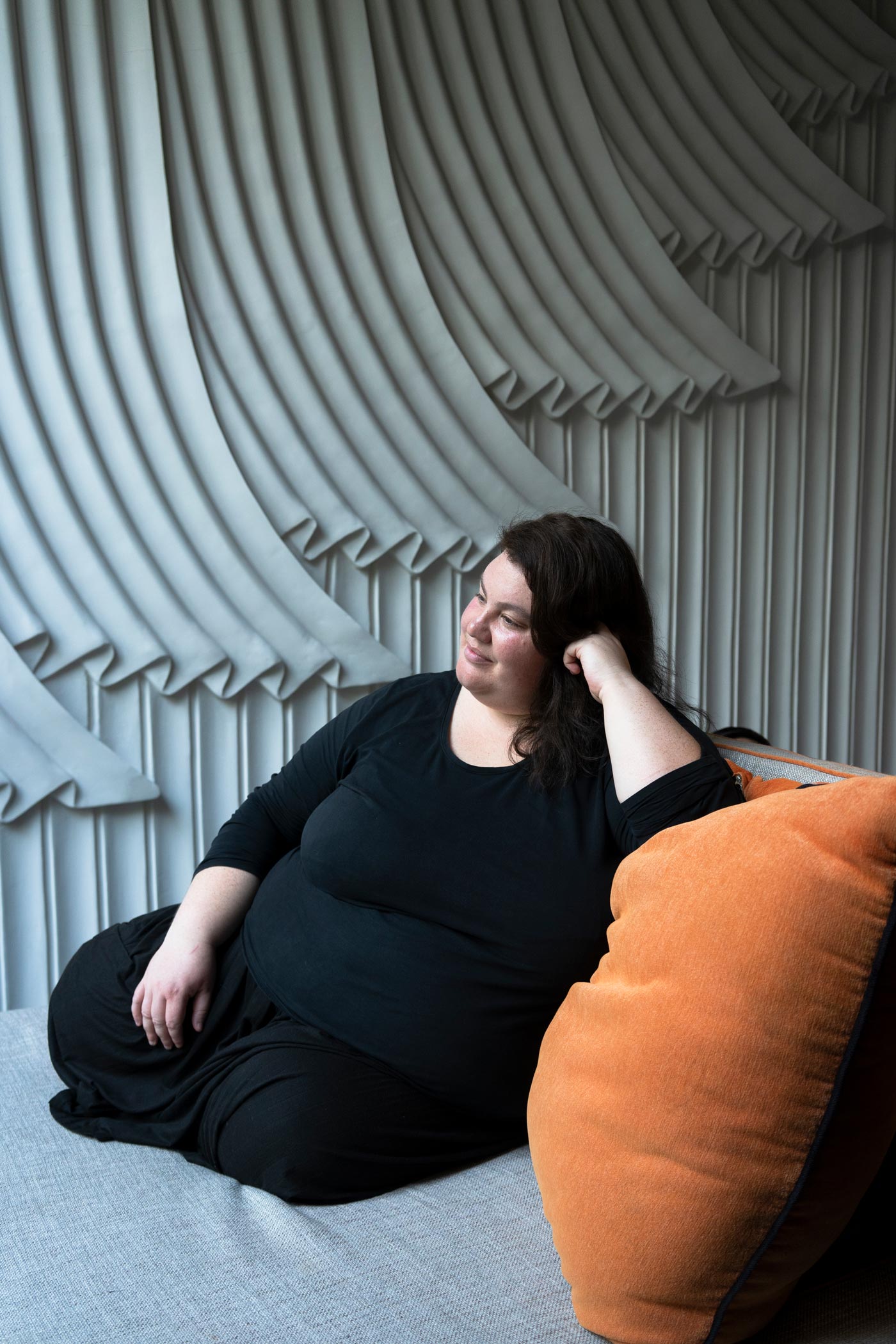
NUNS PATH
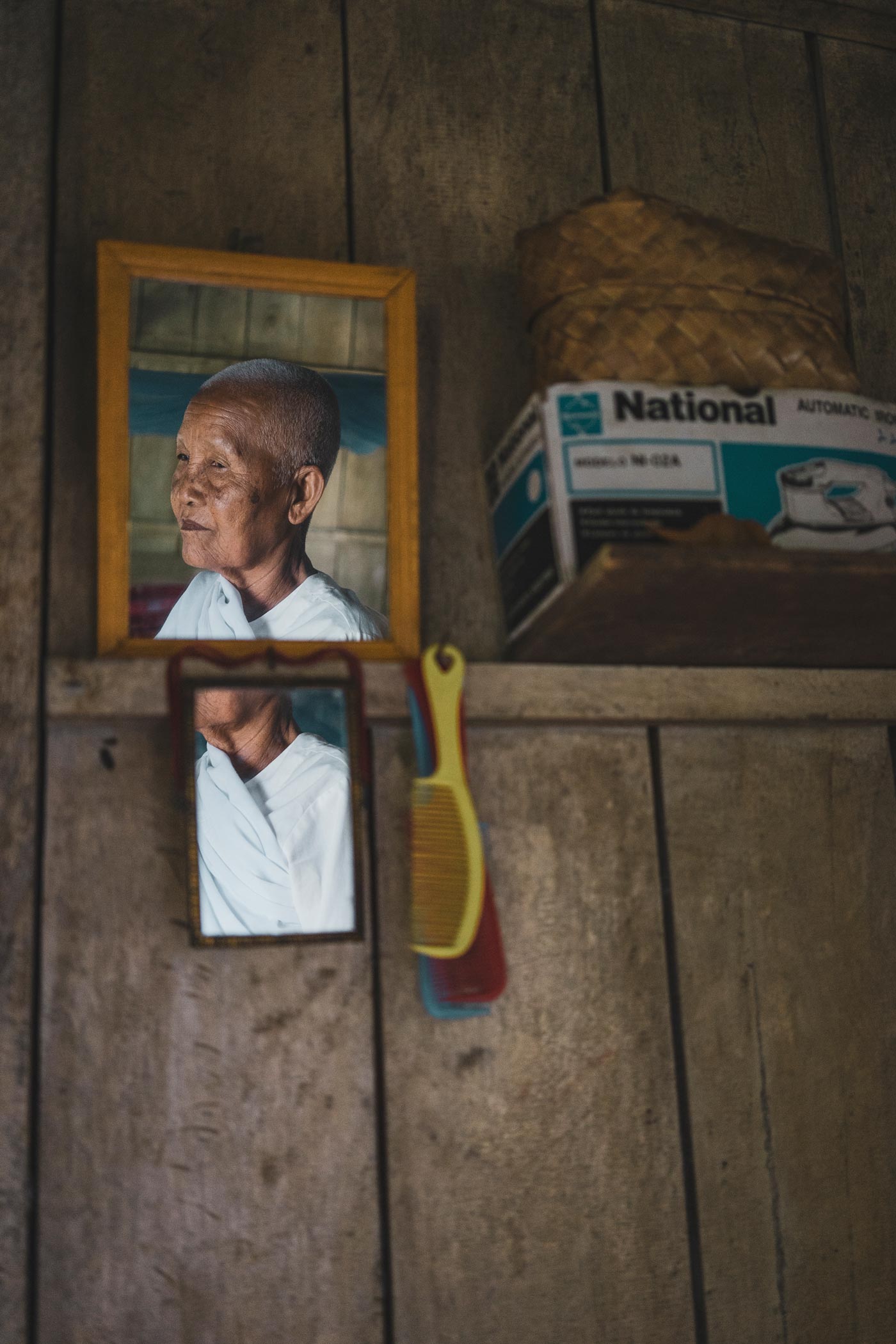


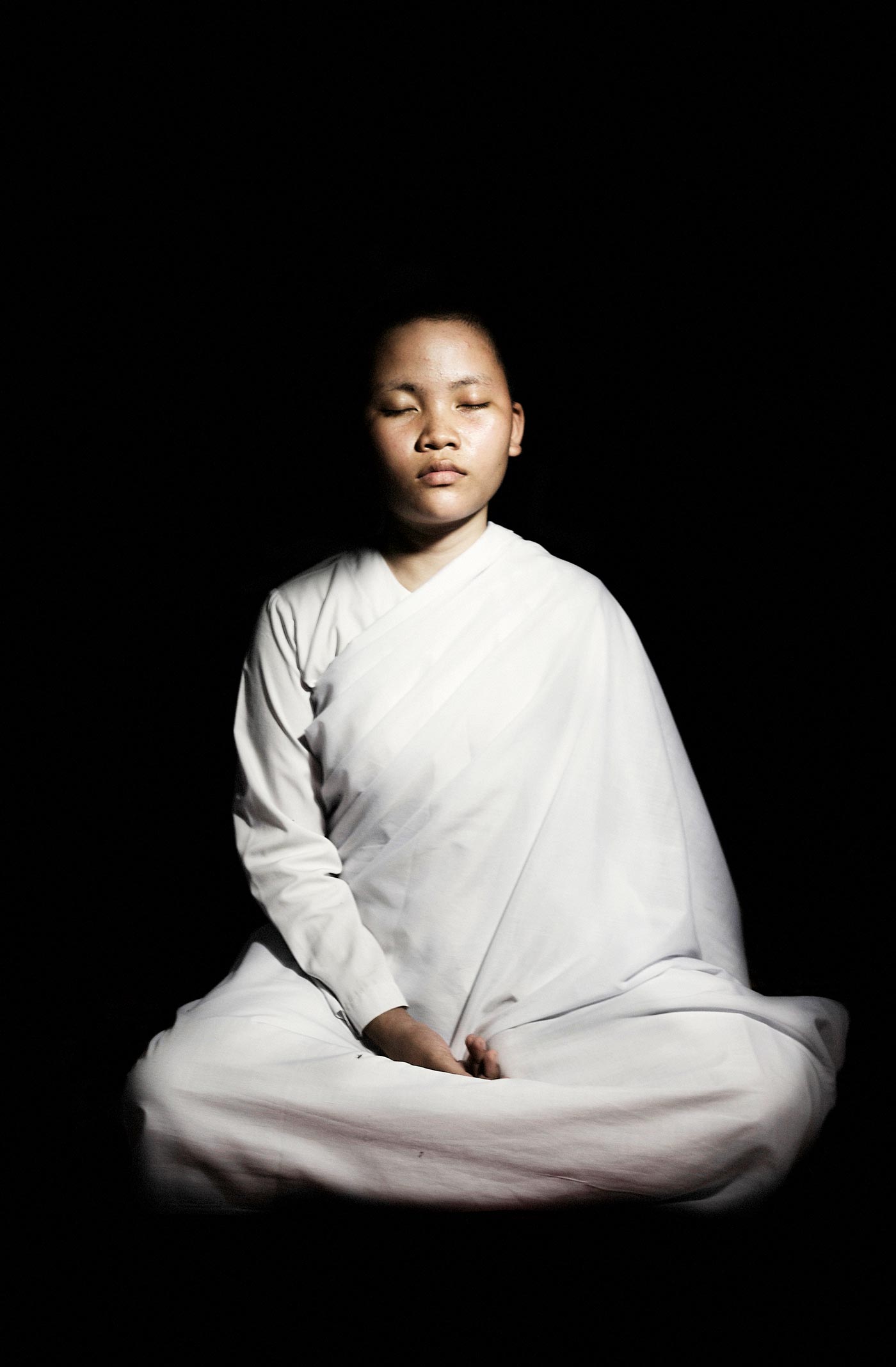



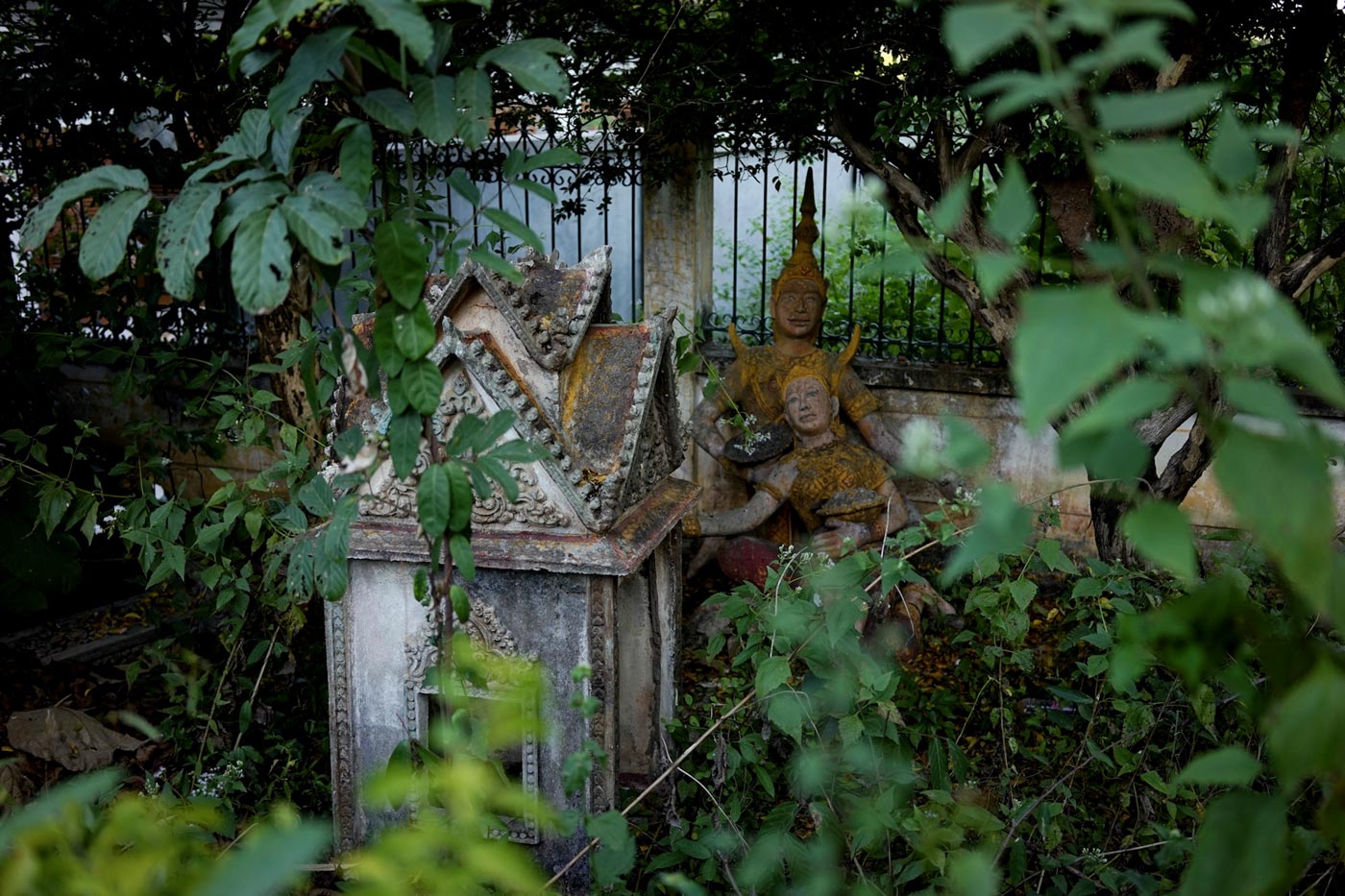

I am trying to love myself in a world where I am not enough
But in the next breath I am told I’m actually just too much
A world where it seems insincere when I’m positive and sunny
A world where if I’m being quiet, I’m asked why aren’t you being funny
A world where I had my first kiss at 12 which I stopped when he touched my boob
A world where 12-year-old me apologised to him for ruining the mood
A world where I’m called a bitch when I’m humorous and witty
A world where I am often told if I lost some weight, I’d actually be quite pretty
A world where it seems a safe space is impossible to find
A world where you can trust no one, not even your own mind
A world where self-worth and confidence seem like something to fear
A world where I make resolutions and break them at the start of the new year
A world where I feel exhausted and run down and always on the go
A world where I constantly say sorry and feel bad for saying no
So I have decided to just be who I am, exist and try my best
And give my weary mind, body and my bruised heart some very much needed rest.
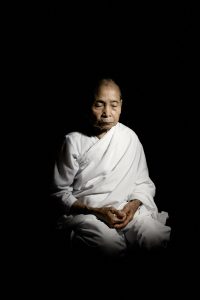
Dounji Muon,
Born 1938
Cambodia, 2014
It is still dark when Dounji Muon wakes up. Like the other nuns, she starts her day at 4 a.m. with meditation and prayers, then helps clean and prepare meals. Dounji Muon, however, spends the bulk of her day tending to the garden. Here, she says, she has found peace and tranquility, in part by giving her vegetables and fruits to the monks.
After her husband was killed and her 1,000 orange trees destroyed, Srey Moan, along with her mother and then young daughter, were captured by the Kmehr Rouge and held as laborers in the jungle for several years. In 1982, after the death of her mother, she and her daughter, then in her early 20s, came to Battambang and found a peaceful life in this monastery where they left behind the torment they had endured in their turbulent lives. Mother and daughter have since shared a small hut, and spend their lives together with the other nuns in the daily rhythm of the pagoda.
I understand that the monks remind us of the greatness of Buddha. In a way, serving them is like serving Buddha, says Dounji Muon.

Dharma
Kosorl, Born 1996
Cambodia, 2014
Kosorl, whose name means “virtue” in Pali, knew even as a child that she wanted to become a nun. After her parents separated, her mother decided to live in the pagoda, taking her young son with her, but her daughter stayed with her grandmother and was not allowed to follow the rest of her family into the monastery until she was 13. Kosorl remembers her first encounter with little monks well, who awakened in her the desire to be a child-monk as well. However, she was denied this wish because she was a girl. Despite this experience, or perhaps because of it, she held on to her desire to become a nun, but not like her mother, who, after separating from her father, decided to dedicate her life to monastic life and monks.
“Being a nun in Cambodia is not easy,” Kosorl says. Unlike the monks, the nuns here are hardly appreciated by society, although the nuns devote their time and dedication to them. Kosorl, like the monks, wants to follow her own path of knowledge, not the servant’s path.
She is the first Cambodian nun to go to Sri Lanka and study Pali and Buddhism at the university in Colombo. She also decided there to change the color of her robe from Cambodian white to Sri Lankan sapphire red. There she experienced a new form of equality. In the meantime, she is back in Cambodia, where she teaches and considers the lives of Cambodian nuns through her master’s thesis.
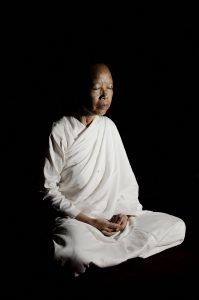
Mae,
Nat Nari, Born. 1953
Cambodia, 2014
Nun Superior Nat Nari, known as Mae (Khmer for “mother”), is the leader of the nuns at Andeuk Pagoda in Battambang, Cambodia.
After her family died in the war, she found refuge here as a nun. This was a life-decision that the then 27- year-old made, although the monks she served were not very happy about having a young woman in the pagoda for they feared she would be harmed by being there, especially by the Vietnamese soldiers who occupied the area at the time. The monks eventually agreed to share what little food and shelter they had while Nat Nari, along with five elderly women who were living in the pagoda at the time, would care for them.
Now, in addition to the 50 monks, the Turtle Pagoda also houses 40 nuns who are allowed to devote time to their spiritual development in addition to their daily chores. They owe this to Mae, who has led this pagoda to be one of the very few in Cambodia to offer nuns space for meditation and Dharma instruction.
Mae, who never wanted to be a wife and mother, imagines such a life to be far too exhausting because it is exclusively dedicated to the welfare of the family and offers no room for self-development. No “wonder women have never become Buddhas, she says, women simply have far too much to do and no time f
#3 AWARENESS
EXHIBITION GALLERY
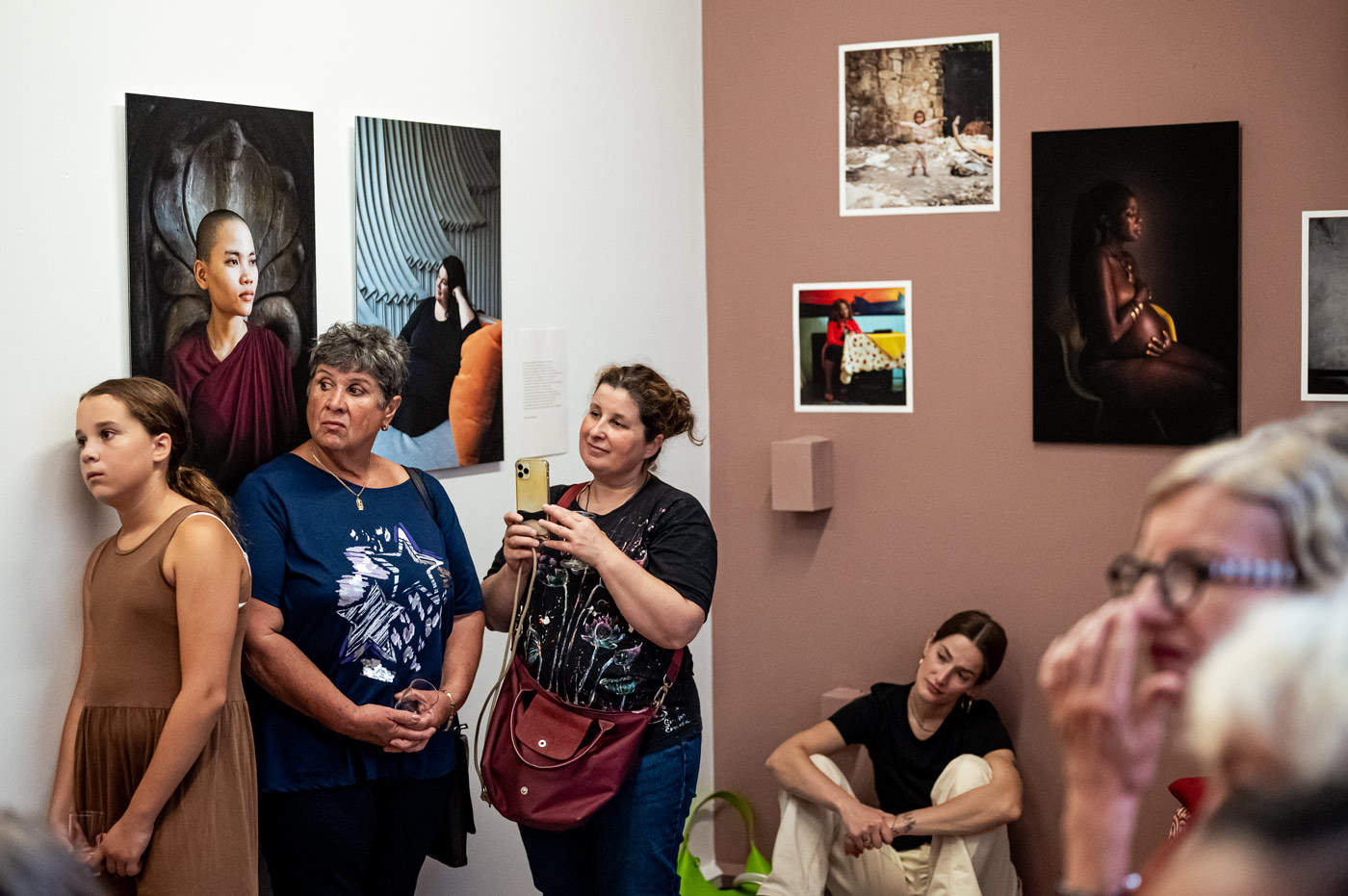
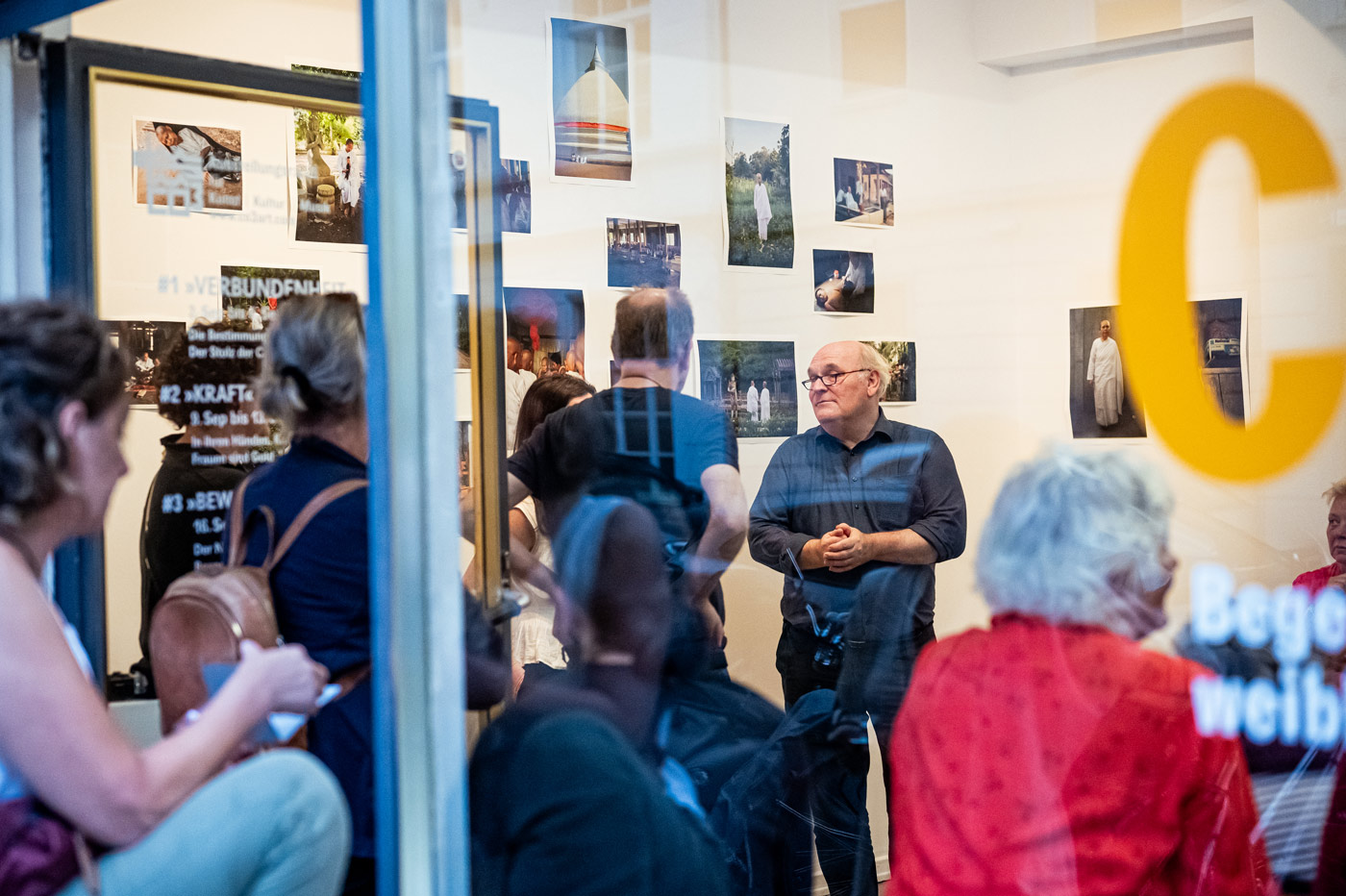
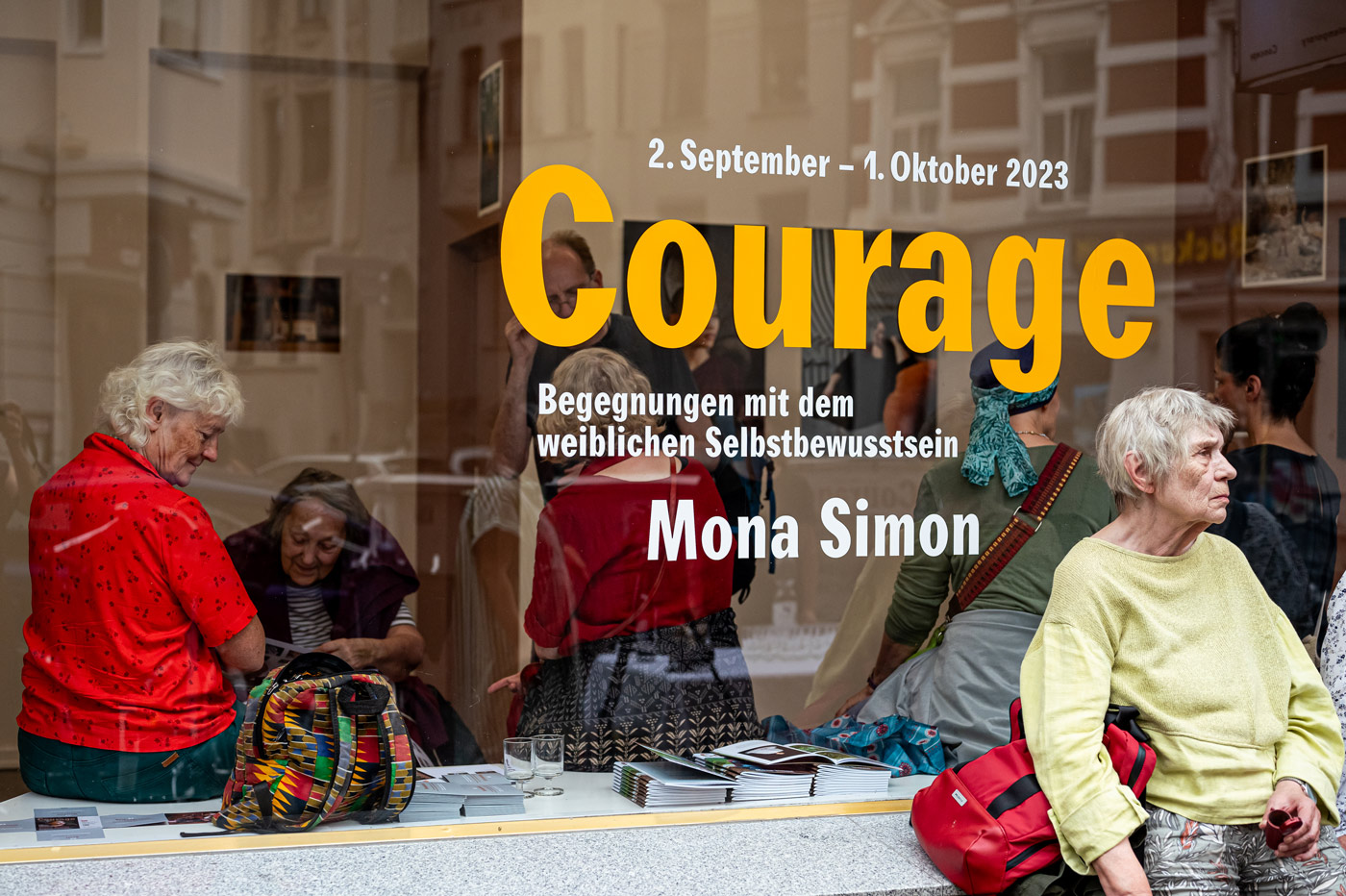
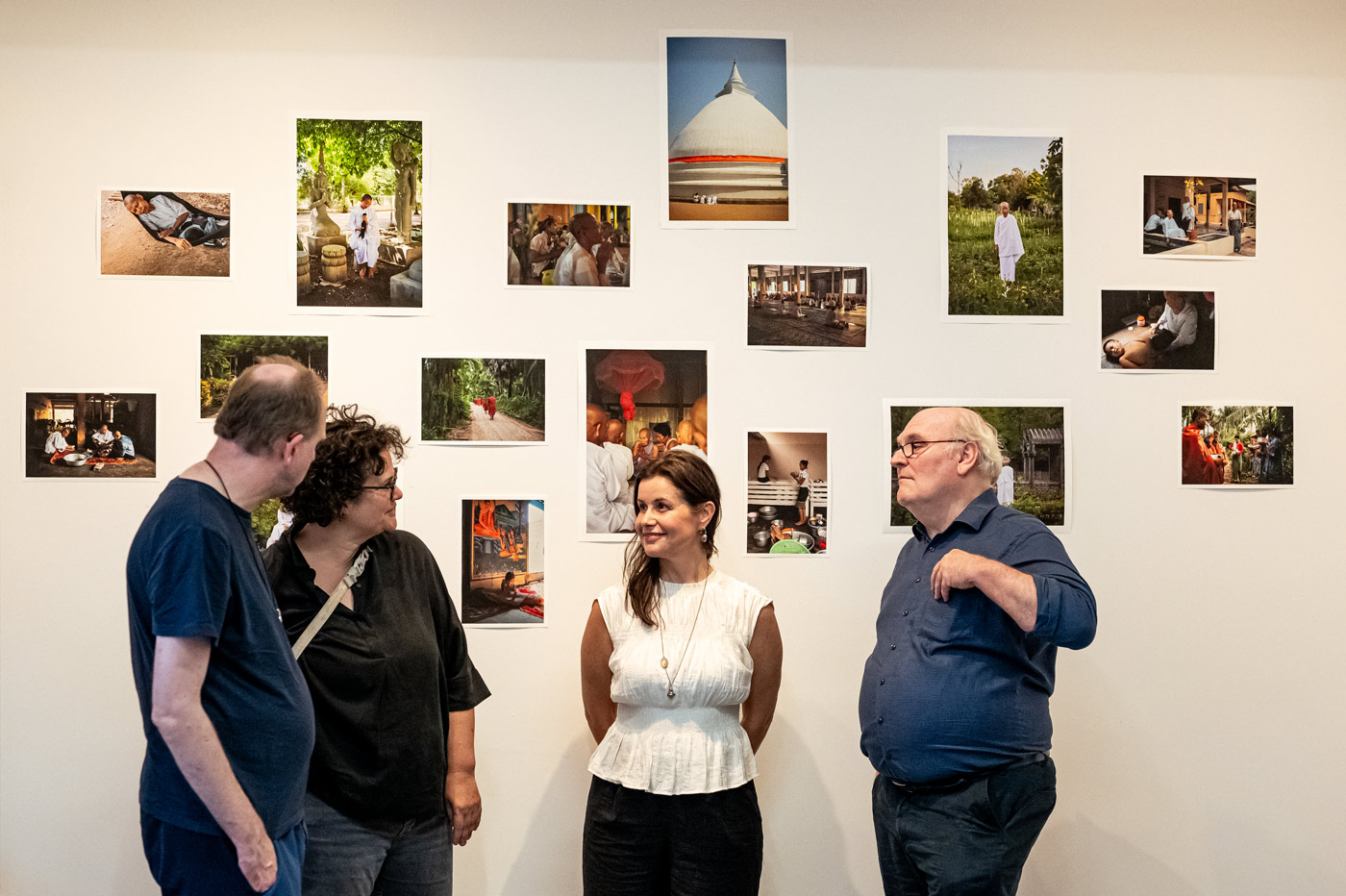

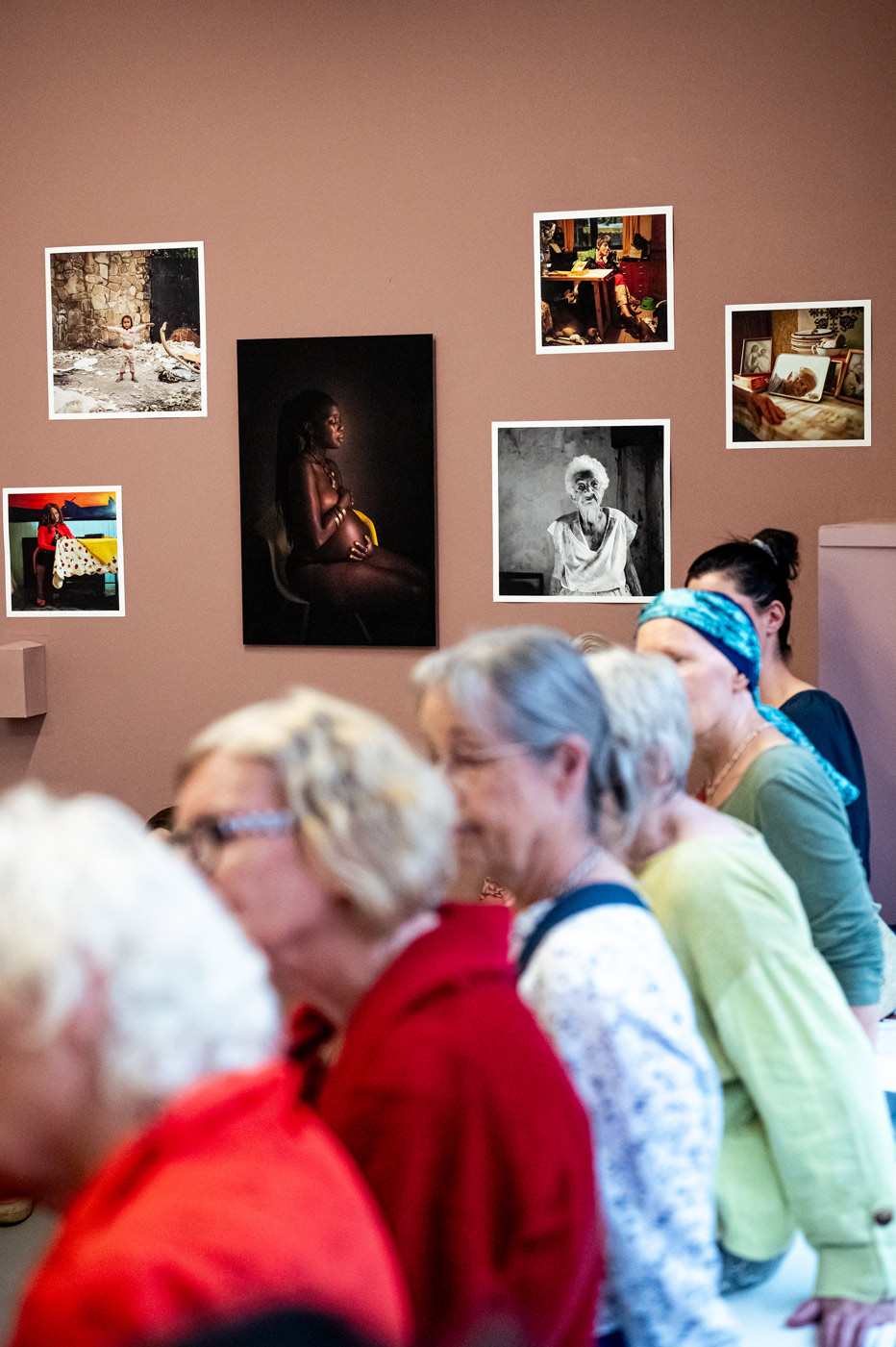
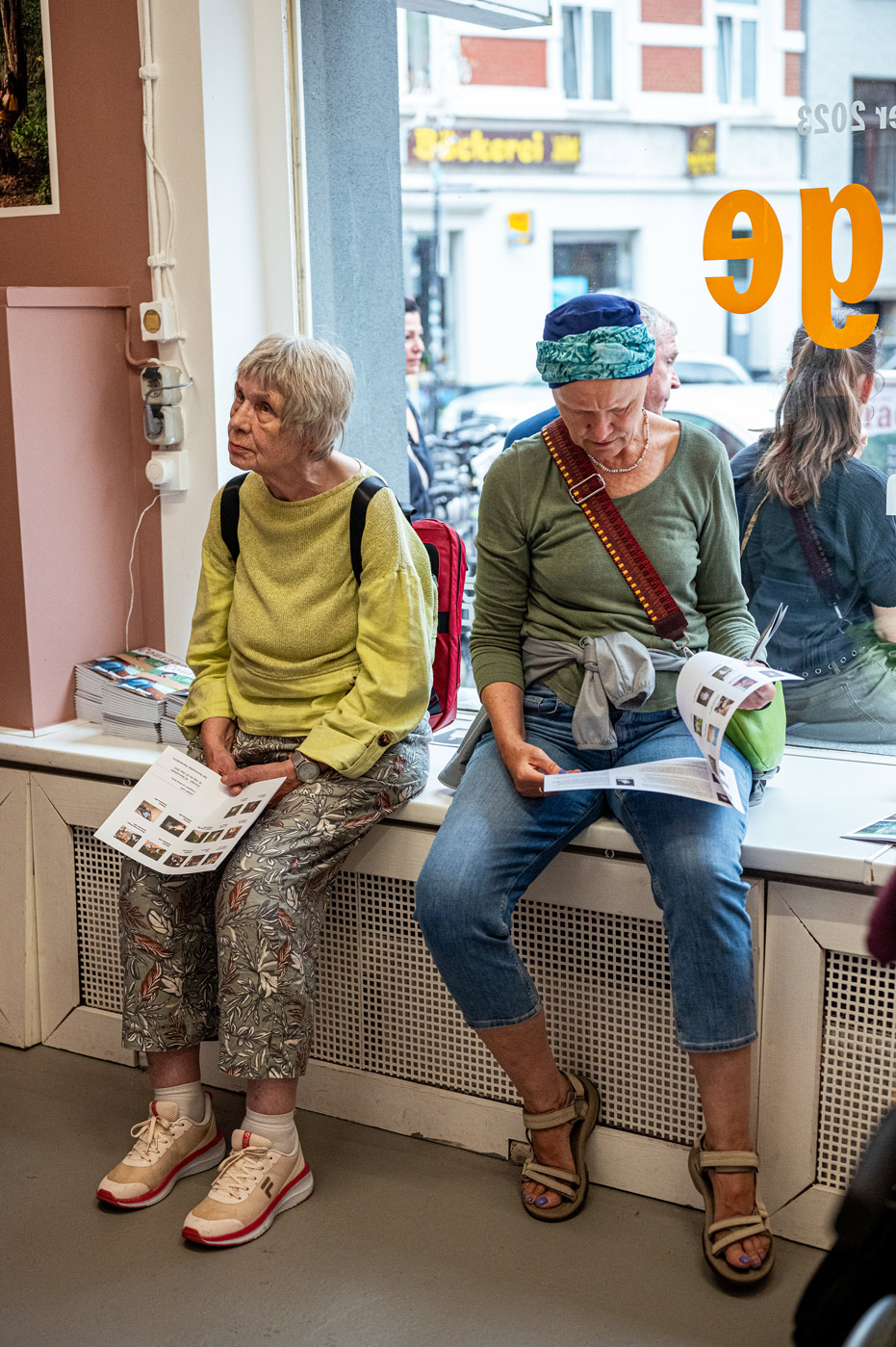

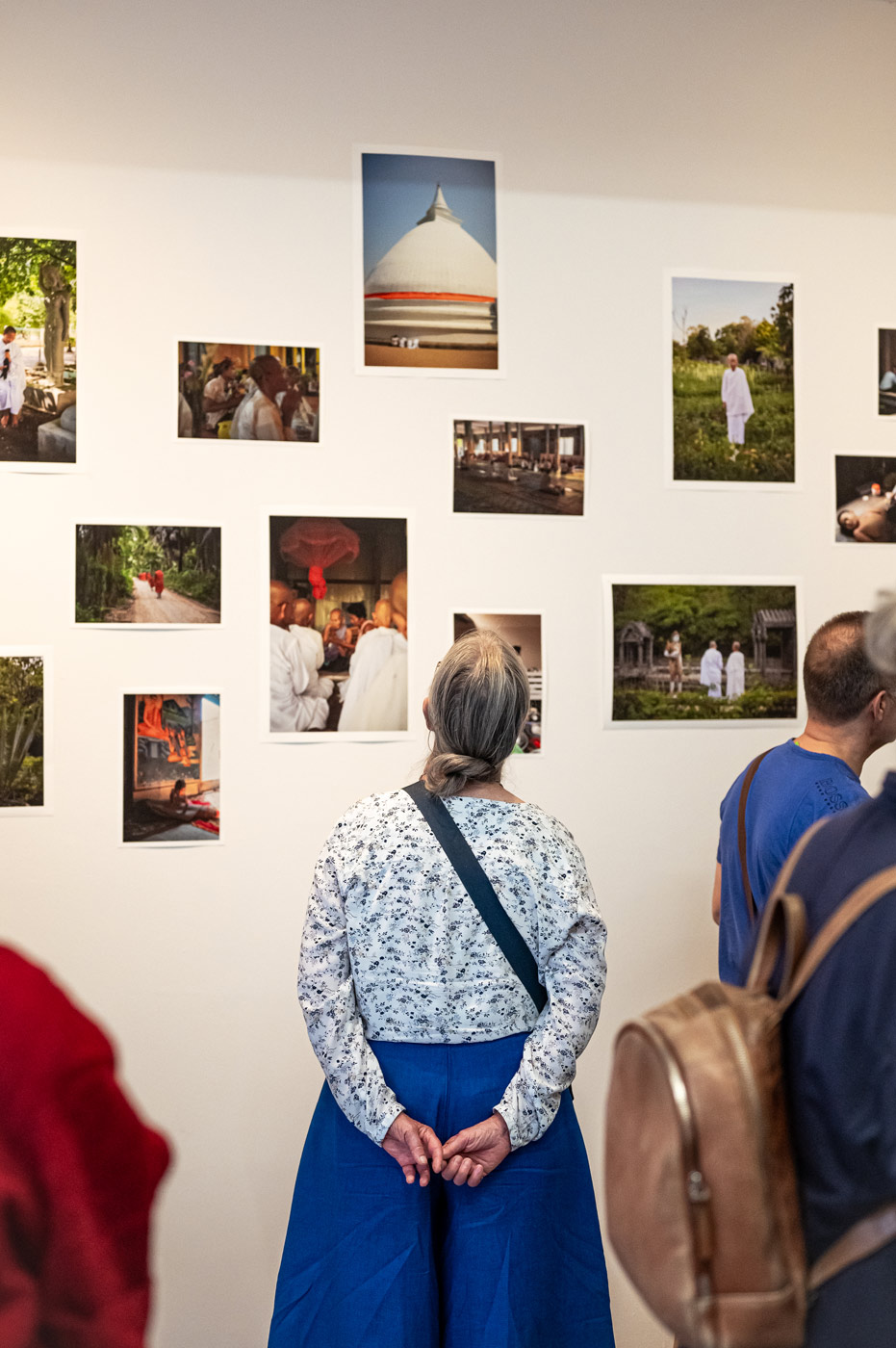
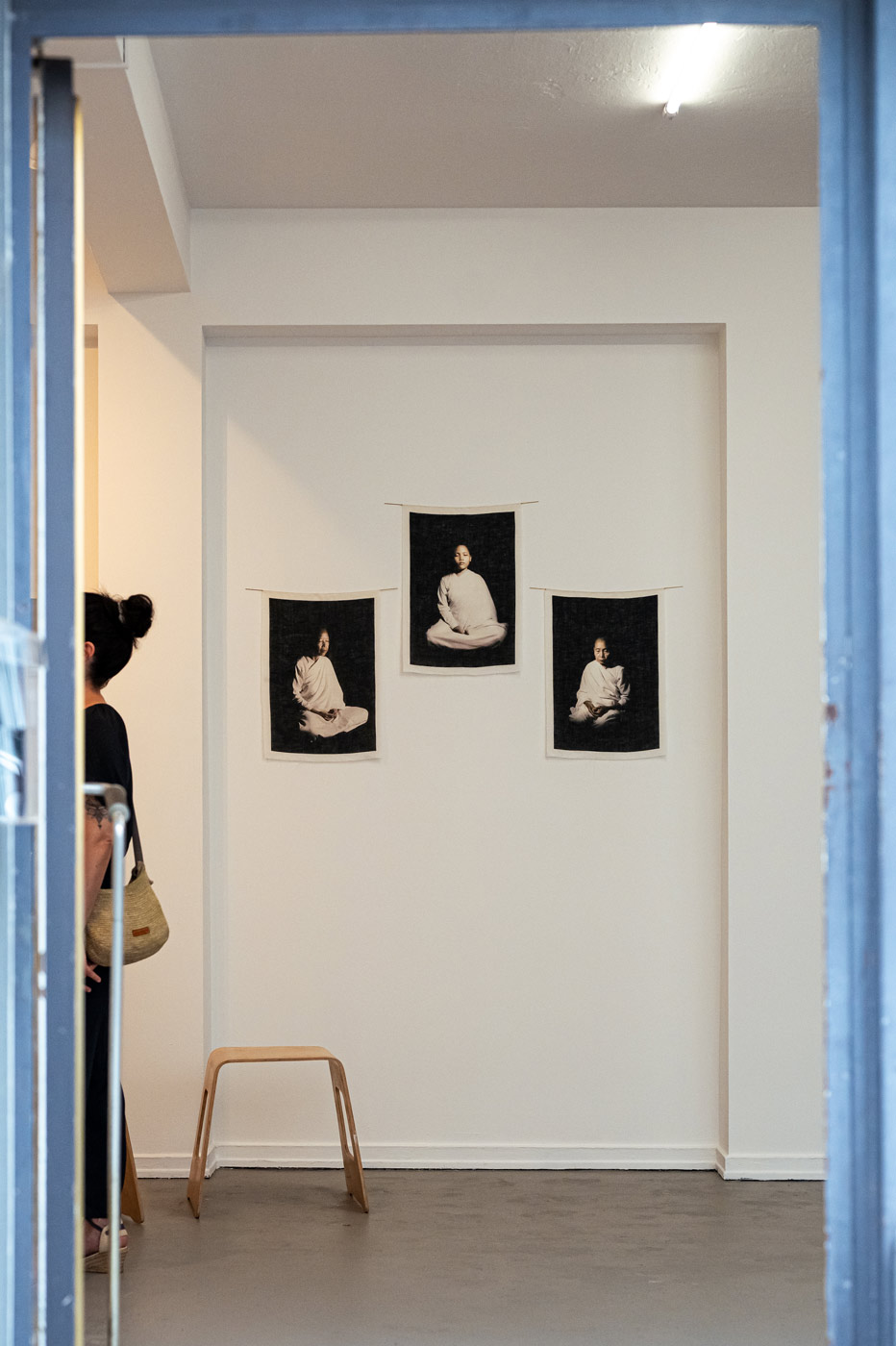
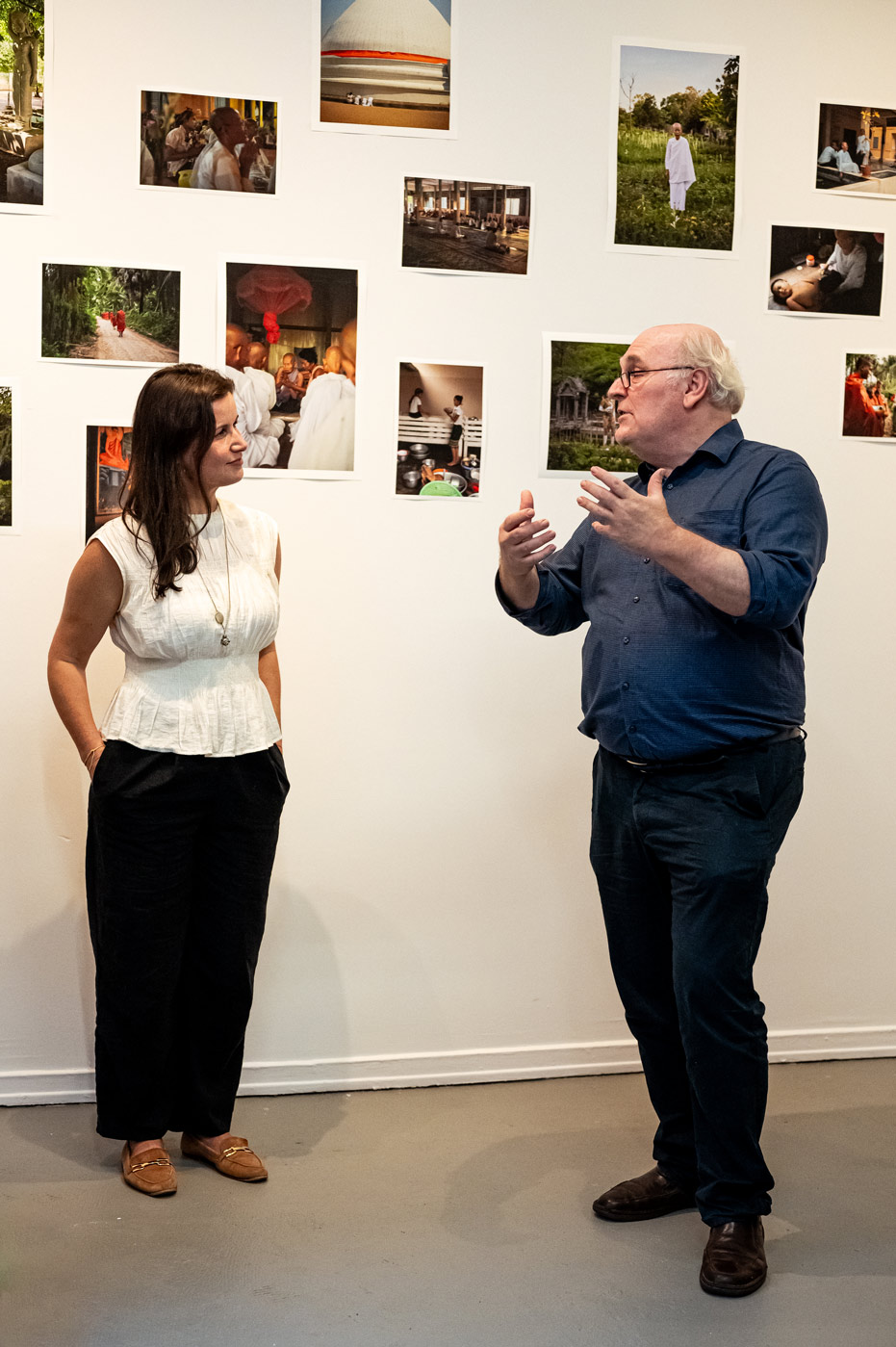
#4 WISDOM
Sept. 23 – Oct. 1, 2023
Experienced | Germany
The Skin Code | International
The exhibition cycle closes with the theme “Wisdom” and a series Mona Simon created in Cologne. Here she met older women in their homes to learn from their experiences. They spoke of their lives, of choices and experiences, of moments that required courage and gave them independence. While doing so, their portraits were taken by Mona Simon. This series is juxtaposed with photographs from the series “The Skin Code” from 2013/2014, in which Mona Simon met women of her own generation. Questions about the path a woman takes, about the image she creates of herself, beneath the codes we have all internalized as the norm, formed the starting point of her portraits. And even though generations and world war experiences separate the two groups of women, parallels can be seen between the women from both photographic projects: Courage, independence and the ways each has dealt with their experiences.
Mona Simon’s multimedia exhibition is the result of a search for female self-confidence, both one’s own with all of its doubts, as well as the communal one that always grows stronger when we value and listen to each other.
EXPERIENCED
The Wisdom theme also includes the stories of women. Listen and be inspired.
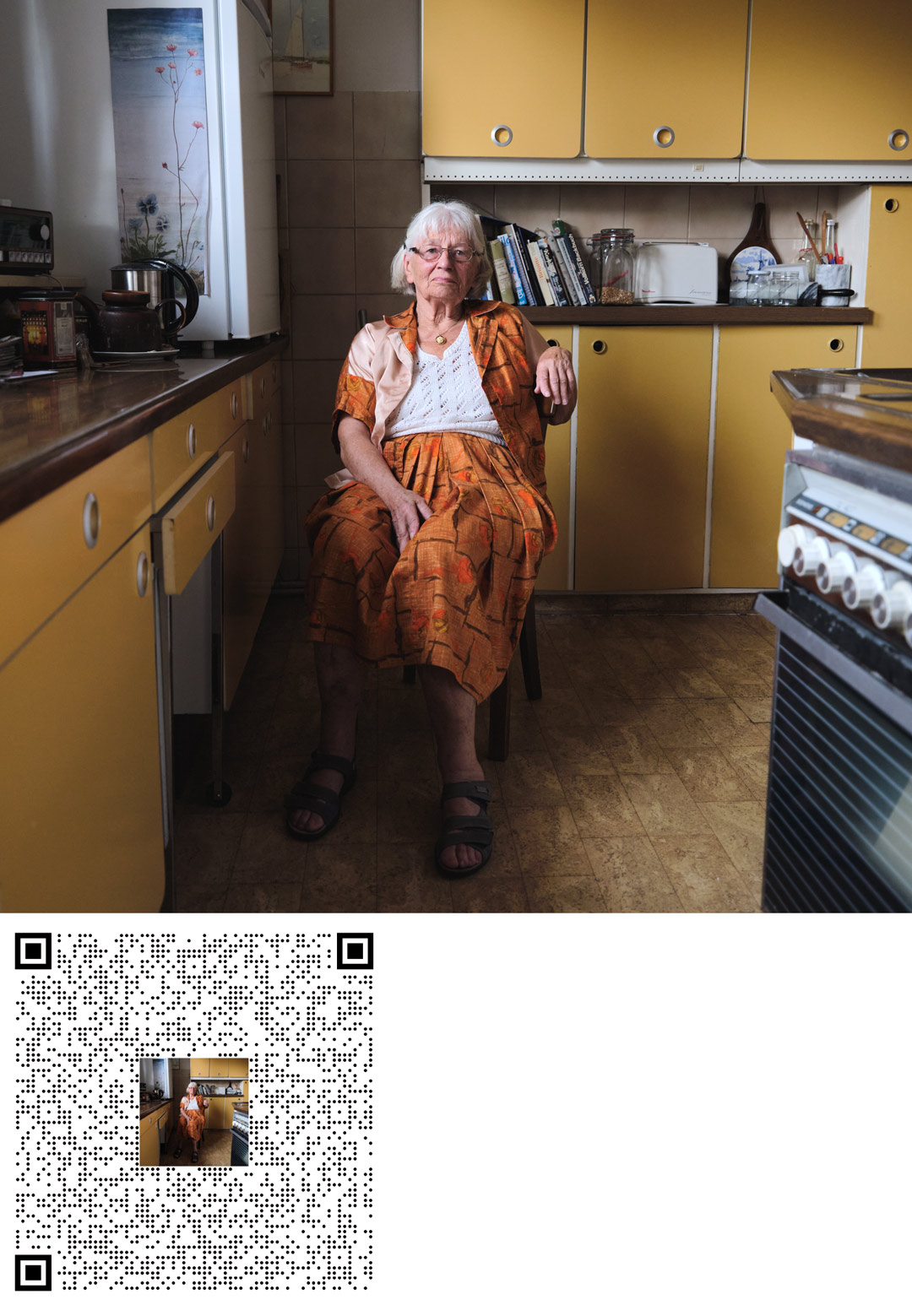
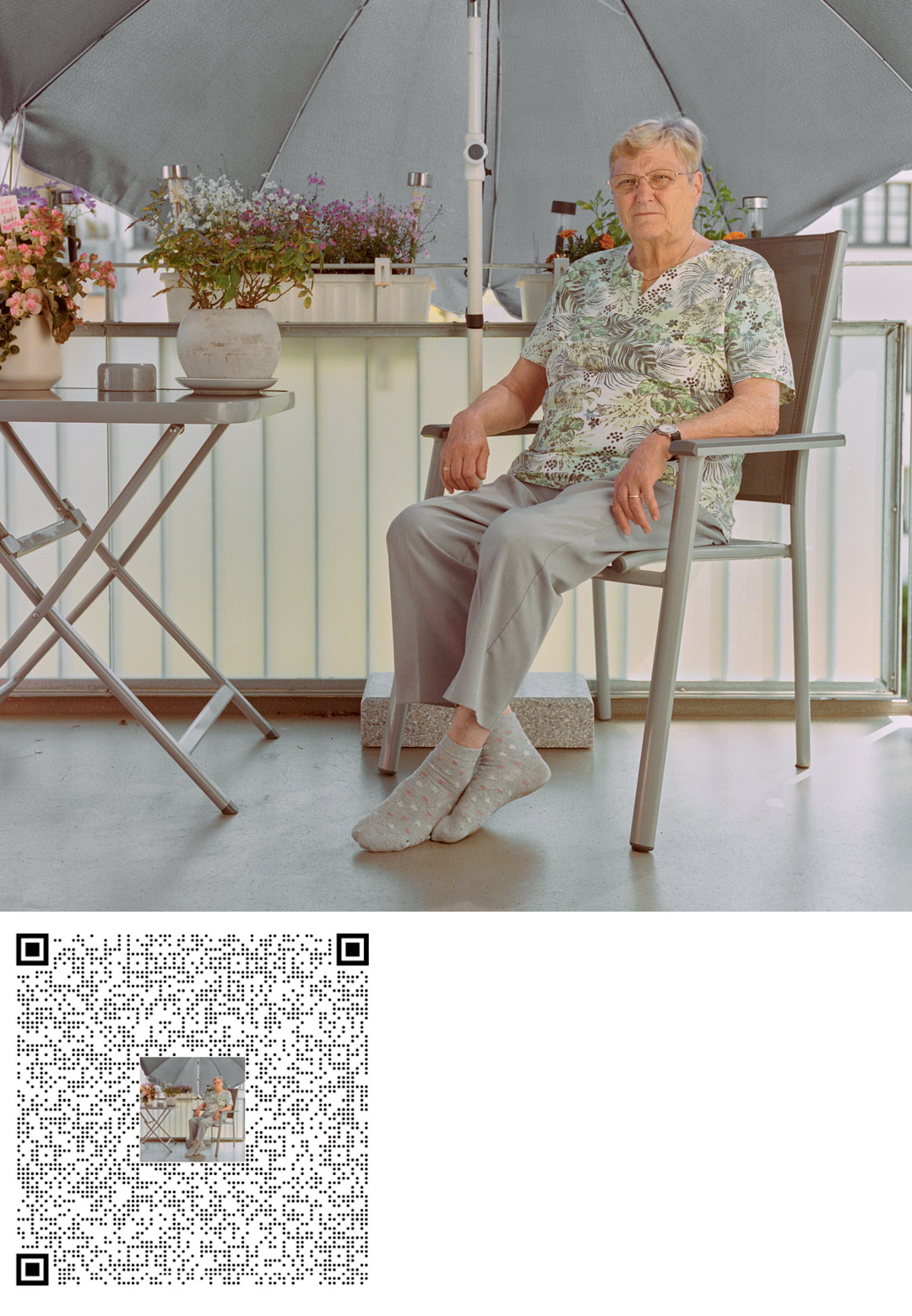


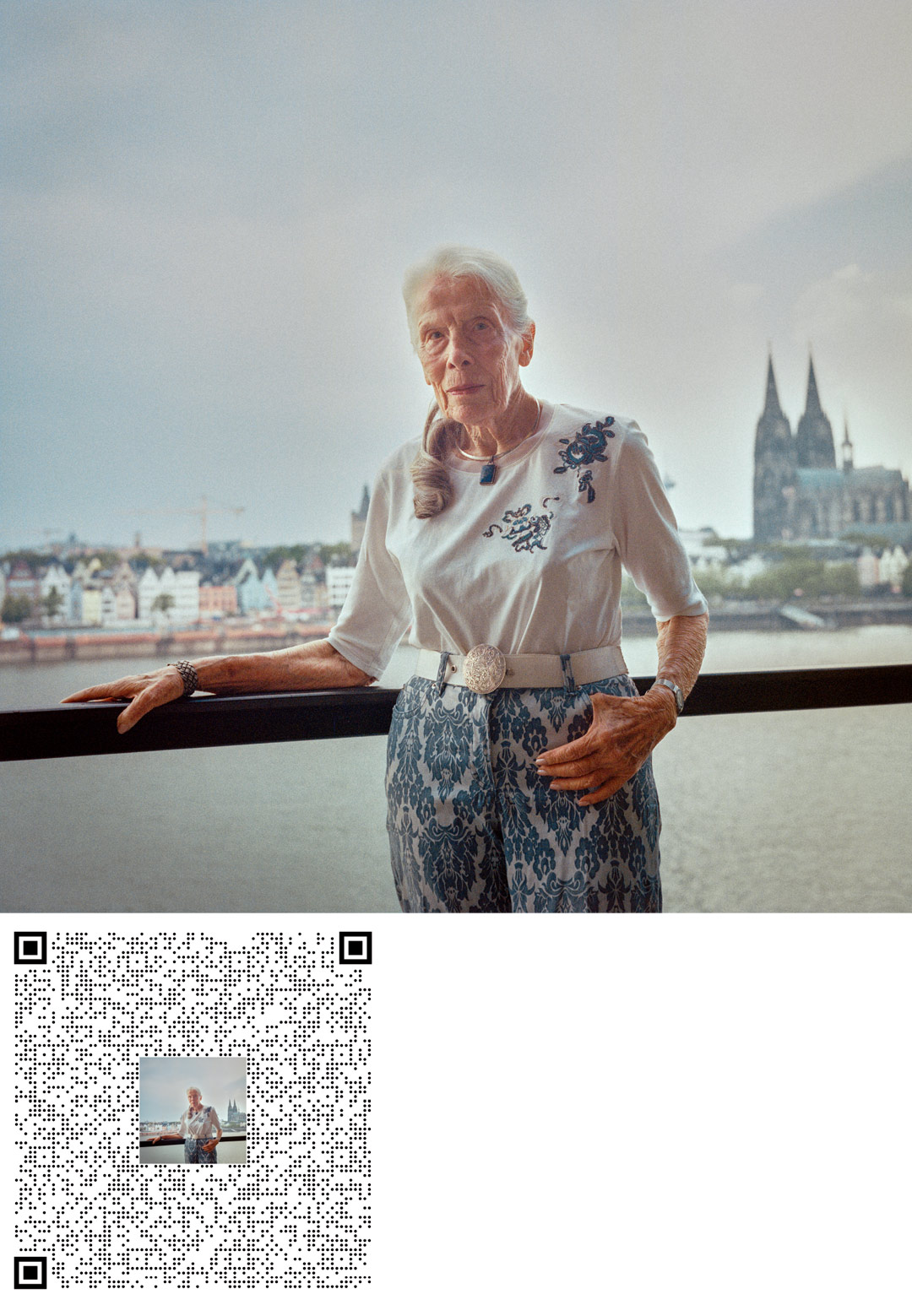


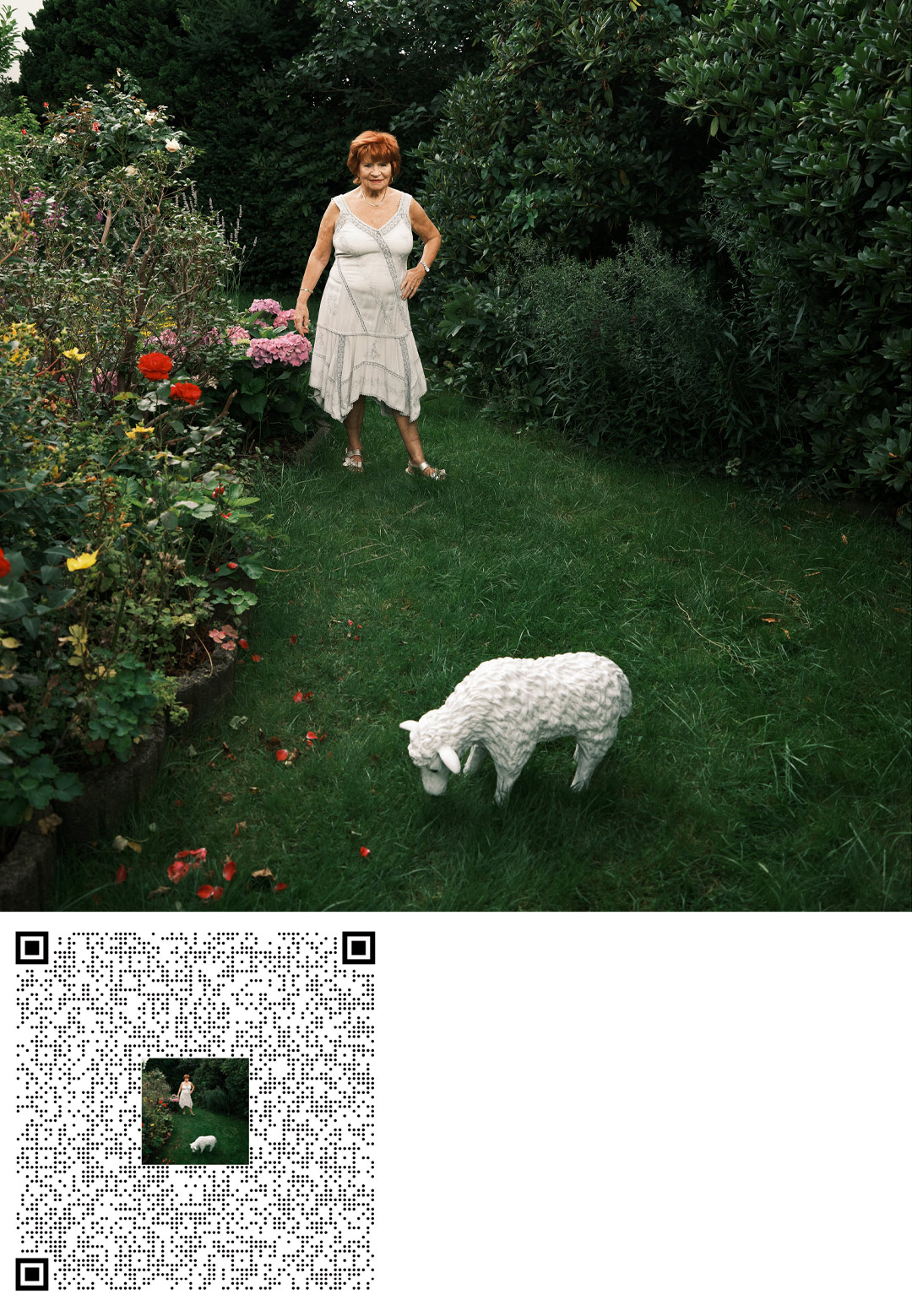
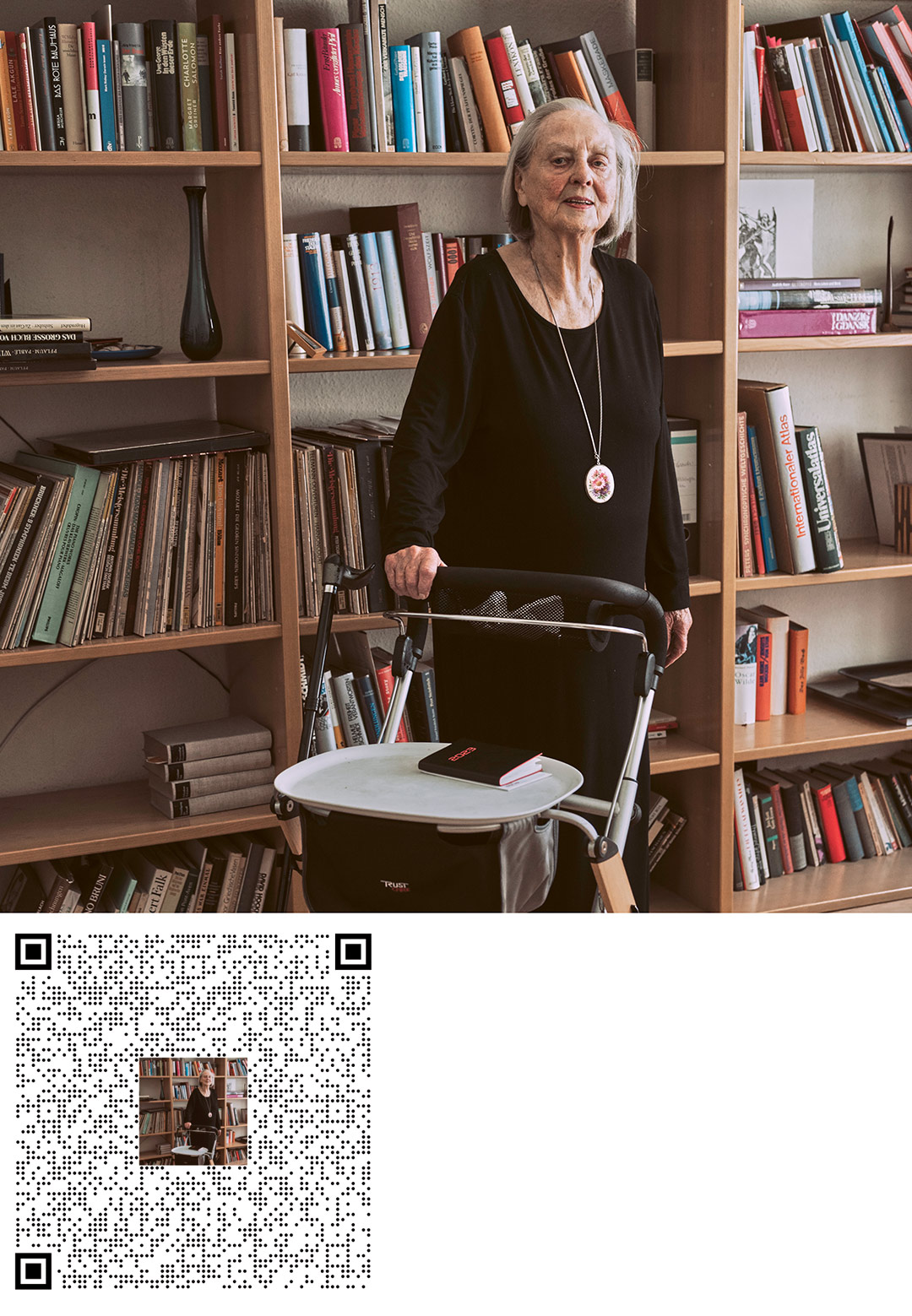
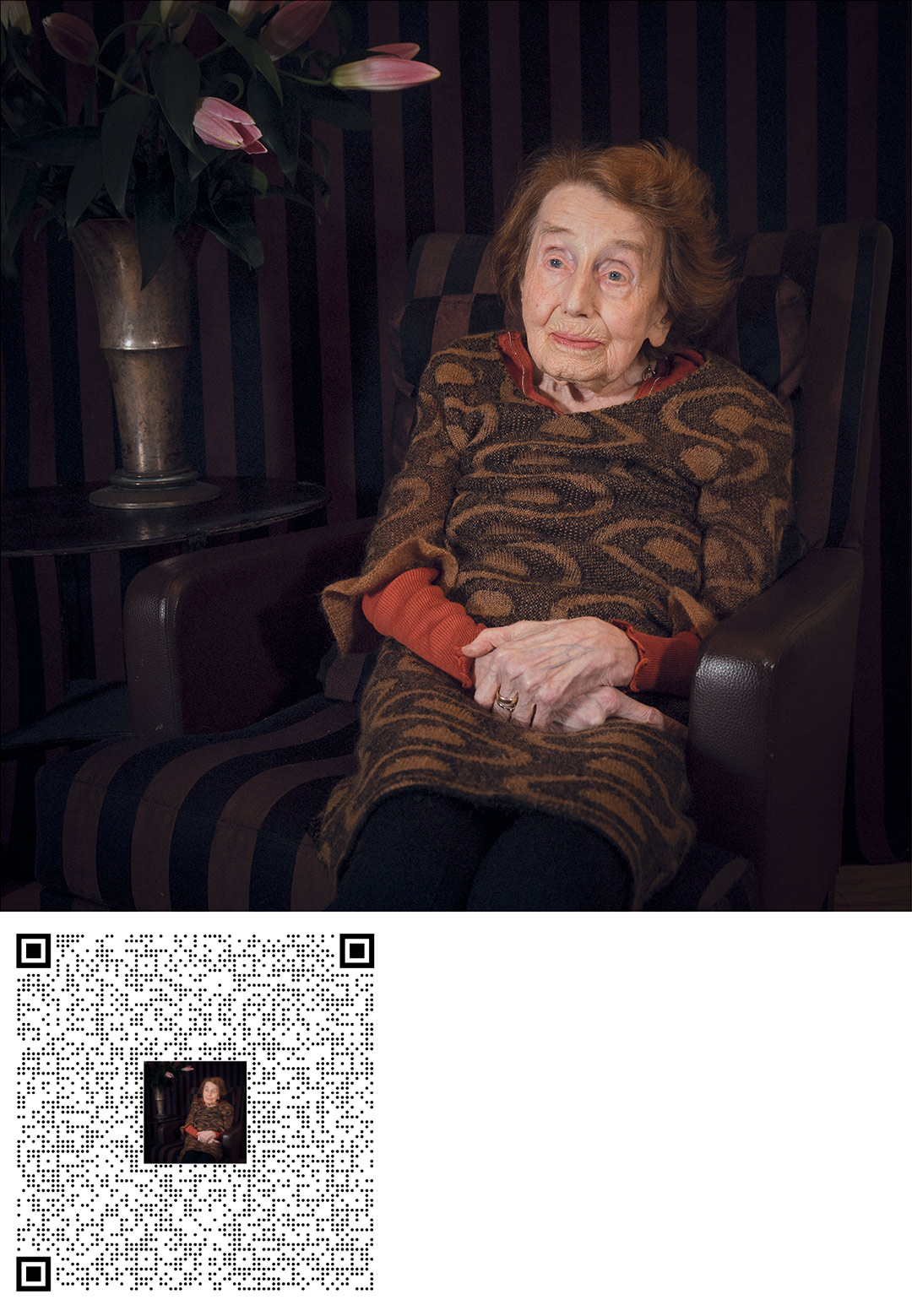
THE SKINCODE
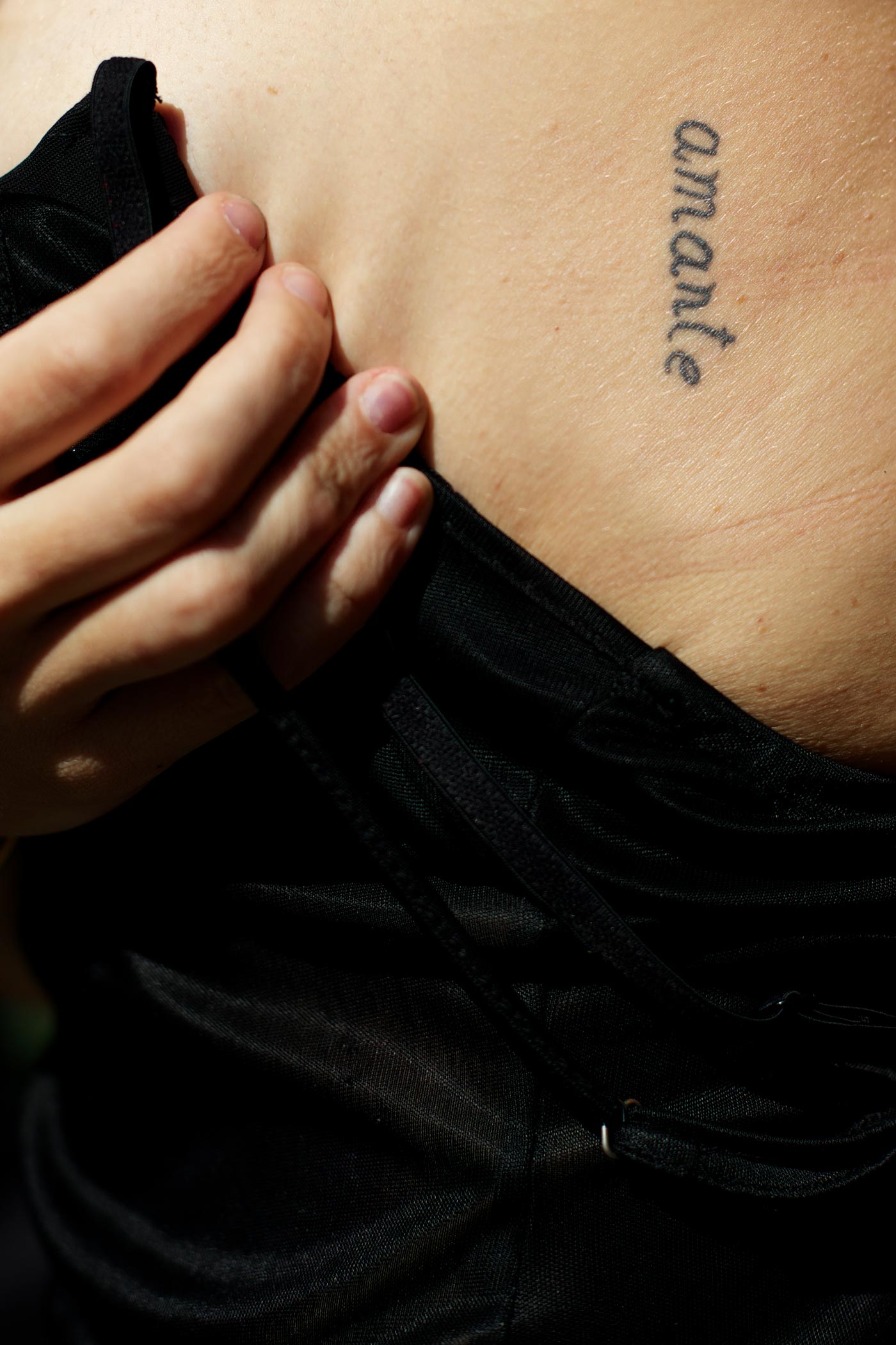
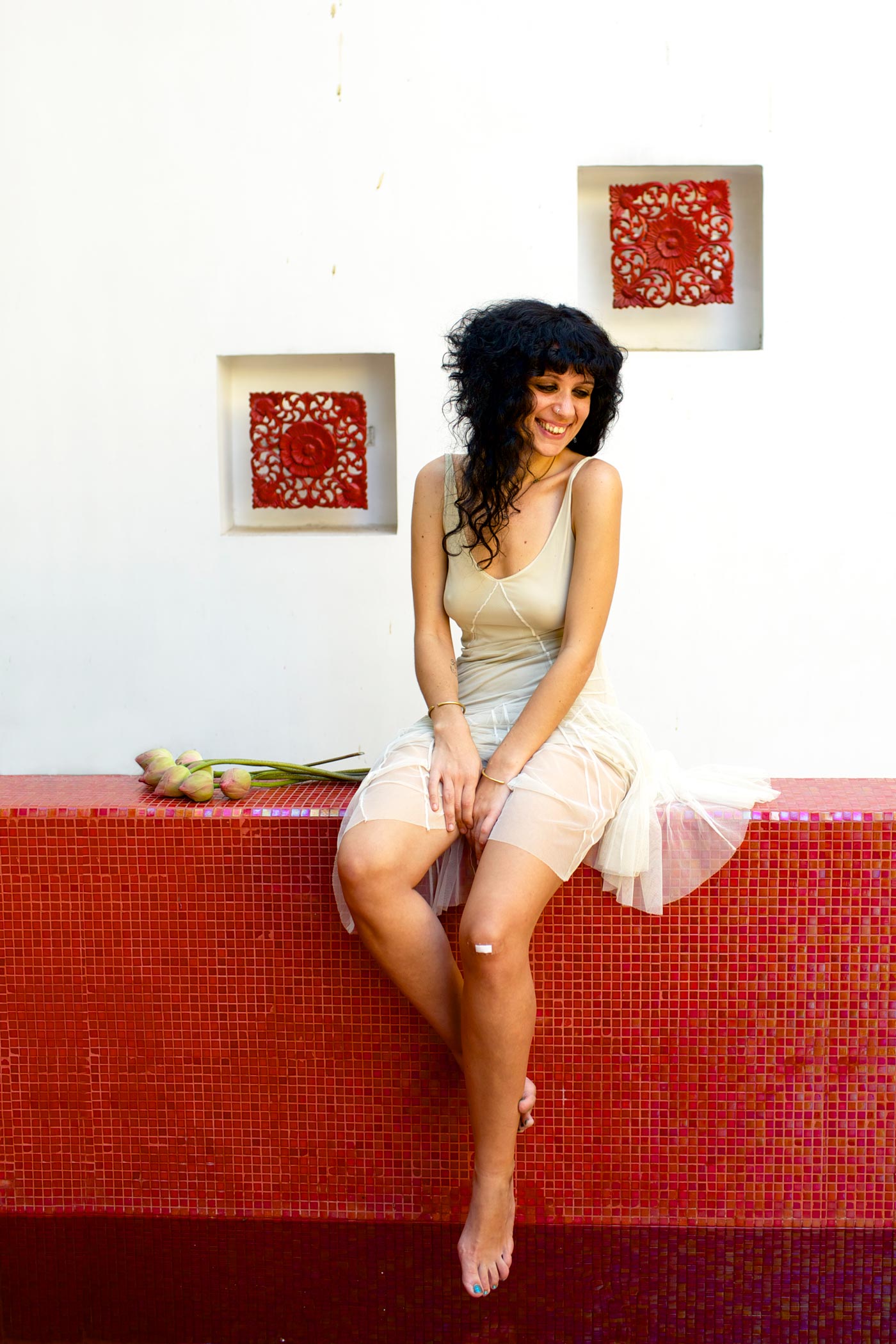
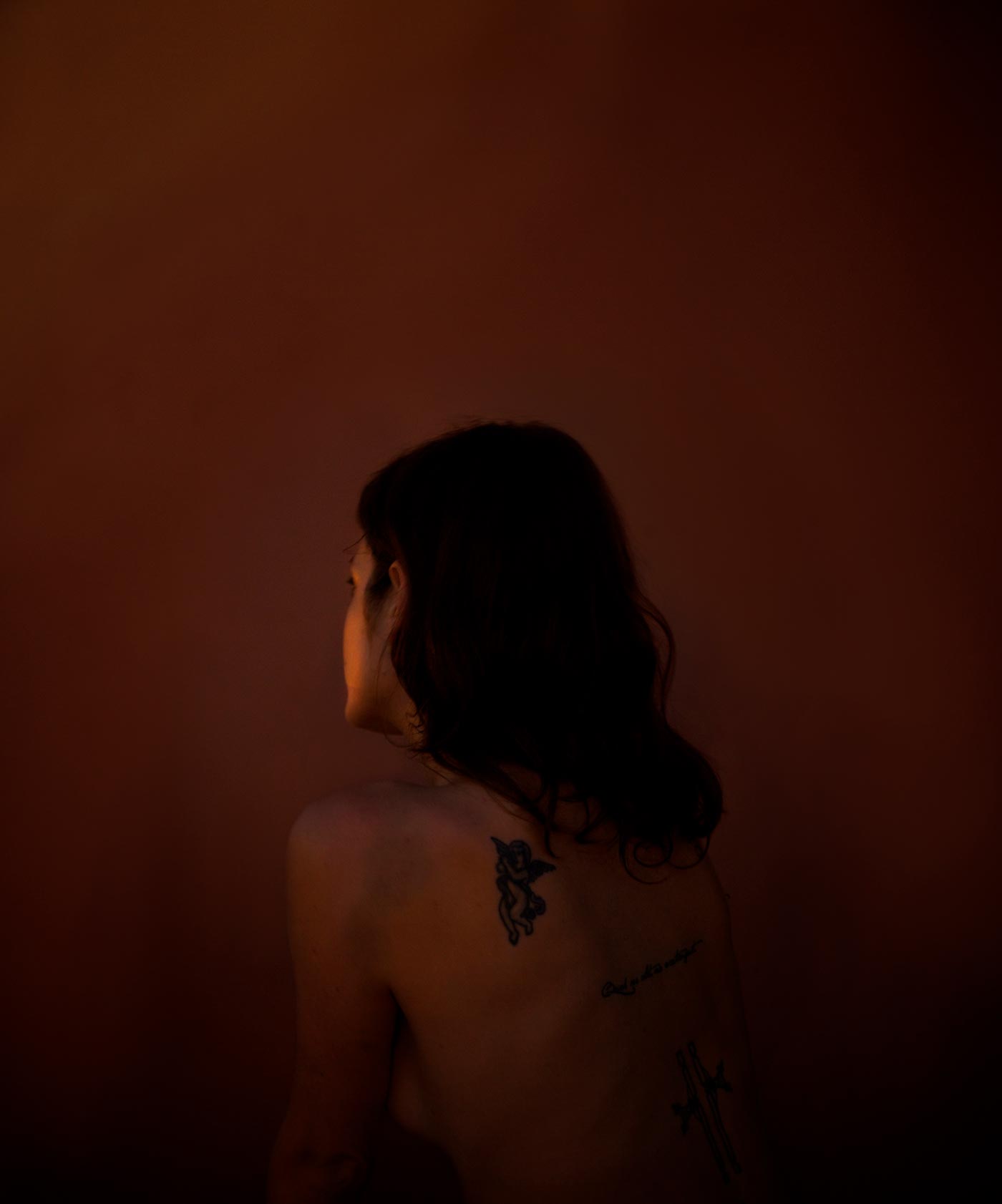

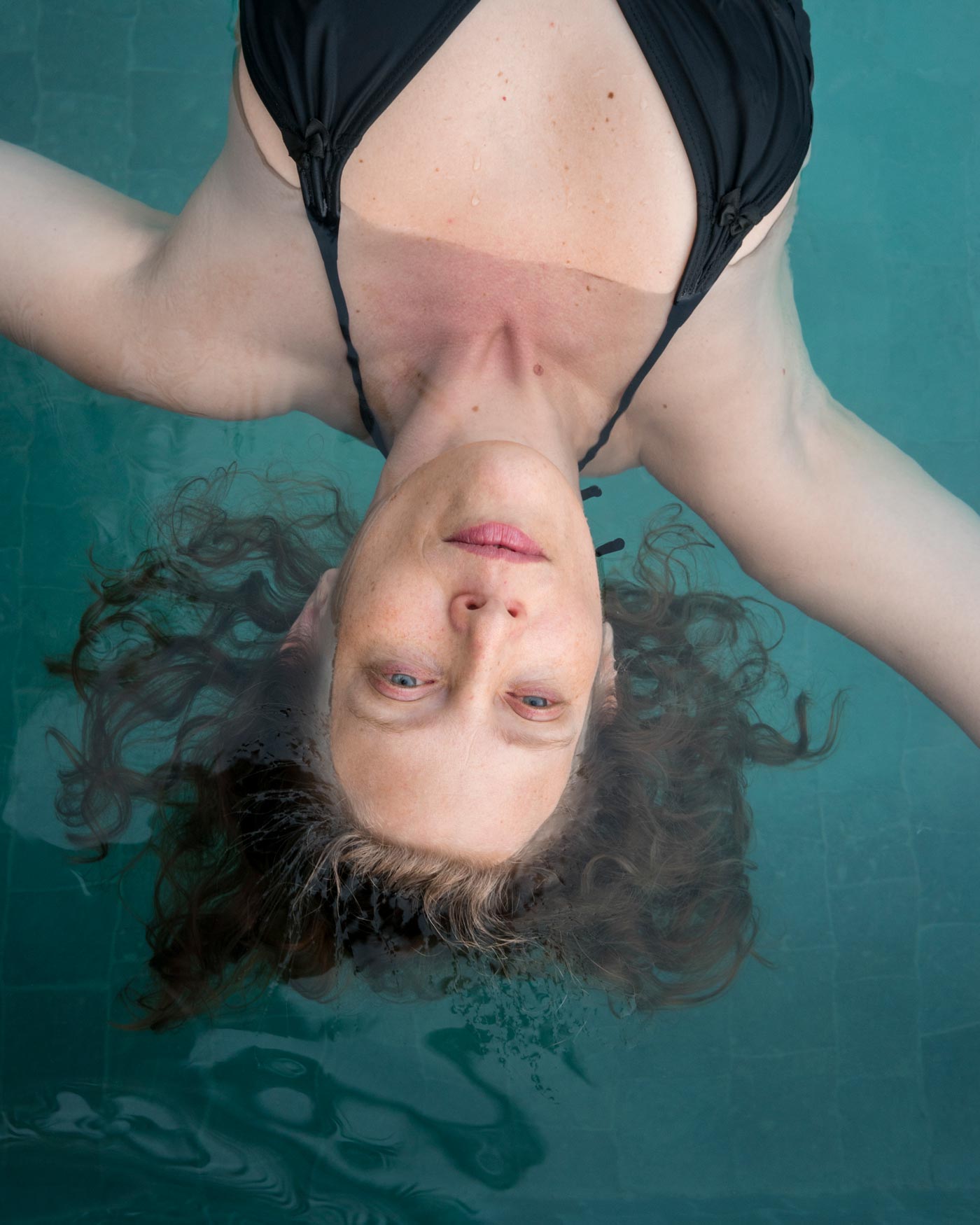
About Strength and Loneliness
Angelina Jolie: The loneliest woman in Hollywood. This or something similar was recently the headline of OK! magazine. They should know, after all, they work strictly according to the no-source rule. Nevertheless, the headline touches me. Can it be that this beautiful strong woman is lonely? I suspect so.
Let’s briefly recap what the Yellow Press has reported about Jolie’s life in recent years – maybe it actually happened. After a wild youth and two marriages between alcohol and drug excess, Jolie snatches another woman’s husband. This man is one of the most popular actors in Hollywood: Brad Pitt. Years of reformation follow. The two donate a lot of money to the underprivileged, adopt children from all over the world. Jolie works very dedicatedly as a UN special ambassador. Then she makes two difficult decisions. First, she has her breasts, ovaries and fallopian tubes removed to minimize her risk of cancer. She speaks publicly about this decision. What is this prototype of female sexiness now for a woman? How is she perceived?
A few years later she separates from her husband because he has problems with alcohol. The image of the perfect family is damaged. Brad Pitt remains the popular star, finally the man is available again. Jolie is just too much with her perfectionism, who can stand it? Of course, Angelina Jolie is the loneliest woman in Hollywood – and too thin.
This story exemplifies the fact that there is a connection between strength and loneliness. At least for us women. Strong men are attractive and courted. Women are more popular when they show their weaknesses, when we women can identify with them in their imperfection. Jolie has made some strong choices. Couldn’t she have just been content with her life? After all, she had everything a woman could ever want.
For me, a strong woman is one who decides something for herself and acts on it because her moral compass won’t let her do otherwise. A woman who fights to keep her backbone, even if there are other, easier ways. A strong woman is a woman who emancipates herself. Emancipation is not a state, it is a lifelong process that must be chosen over and over again. The Latin word emancipatio means: the release of a son from paternal authority or the release of a slave. For the person concerned, these are passive acts, freedom is given to them. Female emancipation consists of active choices that we make and with whose consequences we have to live. I write this in great humility before all the women who fight for their rights, especially in riskier places in the world, endangering their lives and those of their loved ones.
And yet. Sometimes even small decisions are difficult, necessary so that we can continue to look at ourselves standing tall in the mirror. Separating from people who are not good for us – even if a classic family would be better for the children. Standing up for the weak – even if it has negative consequences for ourselves professionally. To keep our backbone every day, not to let ourselves be corrupted by bad things. Emancipation means becoming independent. Doesn’t that also mean being able to stand alone?
But standing alone doesn’t necessarily mean standing lonely. Why does it still feel that way? The psychoanalyst Margarete Mitscherlich provides a satisfying answer to this question in her book “The Radicality of Age”. She finds it understandable that many women are afraid to emancipate themselves. Women break away from behaviors demanded by family and society which many people still see as feminine. “Disappointing male (and female) expectations of this kind is associated with loss of sympathy and love, and can make women outsiders to the society that surrounds them.” So it’s not about the specific decision itself, but always about our immediate environment. Everyone has their own interests in the choices of others: parents, partners, friends.
Thus, a mother who in her youth fought for the right to abortion may come into conflict with her daughter today because she does not want to accept the daughter’s self-chosen childlessness and wants grandchildren. The daughter will feel lonely despite her strong decision. Or for example, an old friend may suddenly break off contact because she does not want her newly-separated friend – someone she advised to separate for years – to meet her own husband- because she does not dare to take this step herself. The girlfriend will feel lonely despite her strong decision.
Mitscherlich describes the consequences in the worst case of self-actualization like this: “You have to adapt your behavior to what your ‘sisters’ expect of you, otherwise you are not a truly emancipated woman and don’t belong to us.” In order to be able to stand alone but not become lonely, I have to make strong choices, but in doing so I must not go beyond the expectations of my sisters in the society immediately surrounding me?
How about accepting that emancipation is a lifelong, individual process that must be chosen again and again? With steps forward and steps backwards. Sometimes we anxiously take a few steps backwards, because even courage is not a permanent state, and we cling to old role models. How would it be if we generously reached out to the other sister even during our own temporary backwards step, so that she doesn’t feel quite so alone in her step forwards in progress and strength? That would be wonderful.
Ines Lutz
#4 WISDOM
EXHIBITION GALLERY

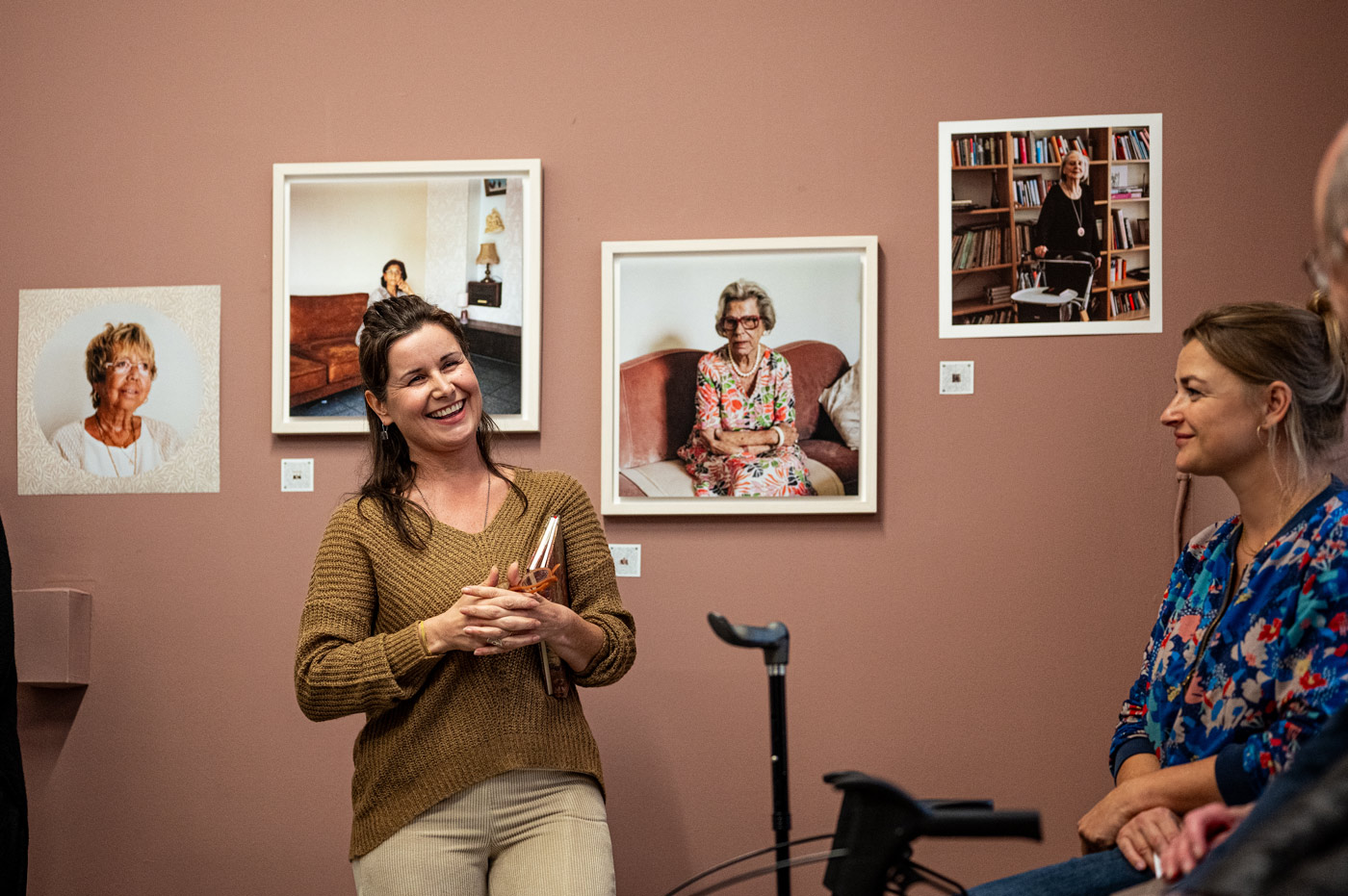
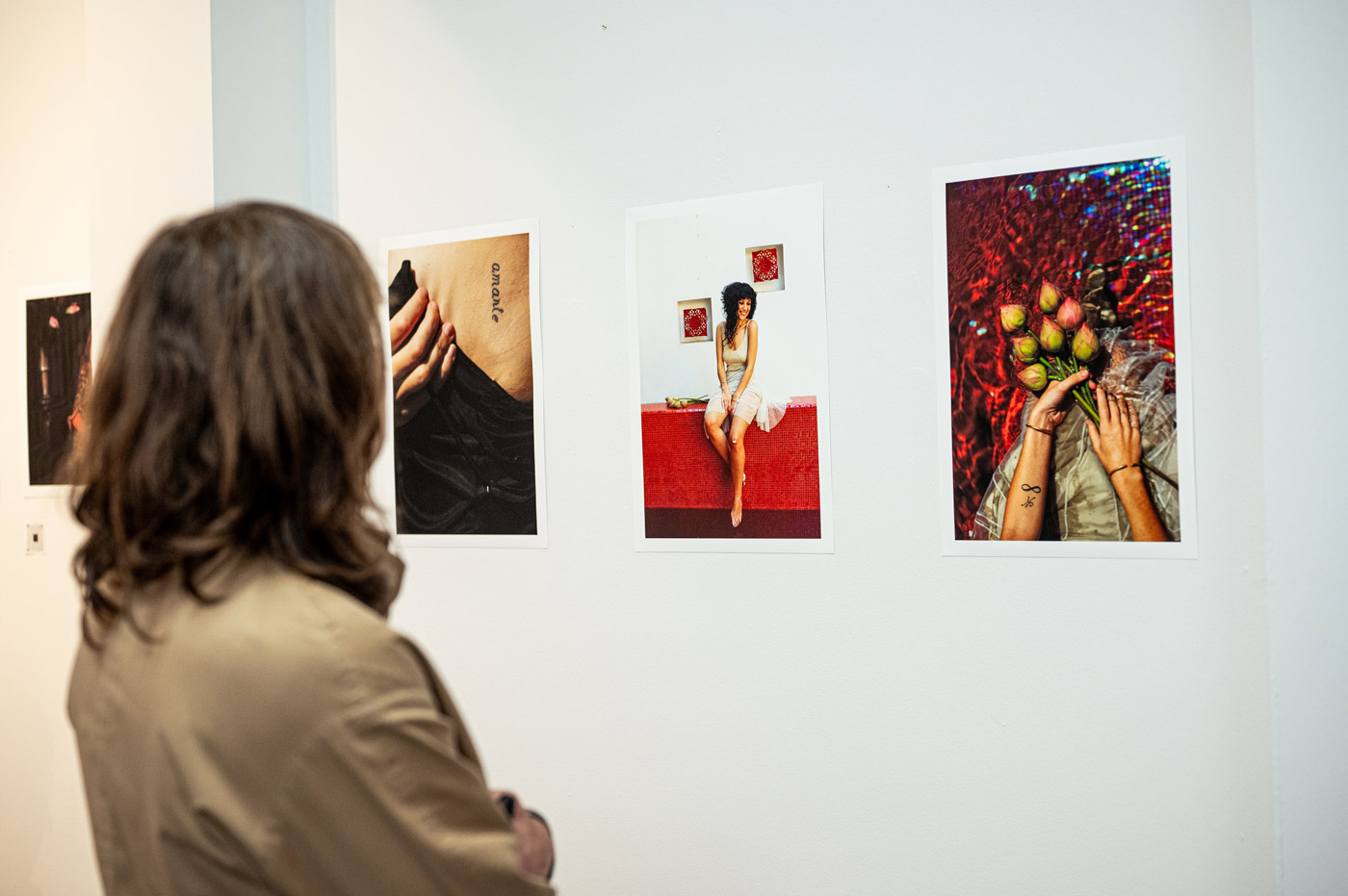

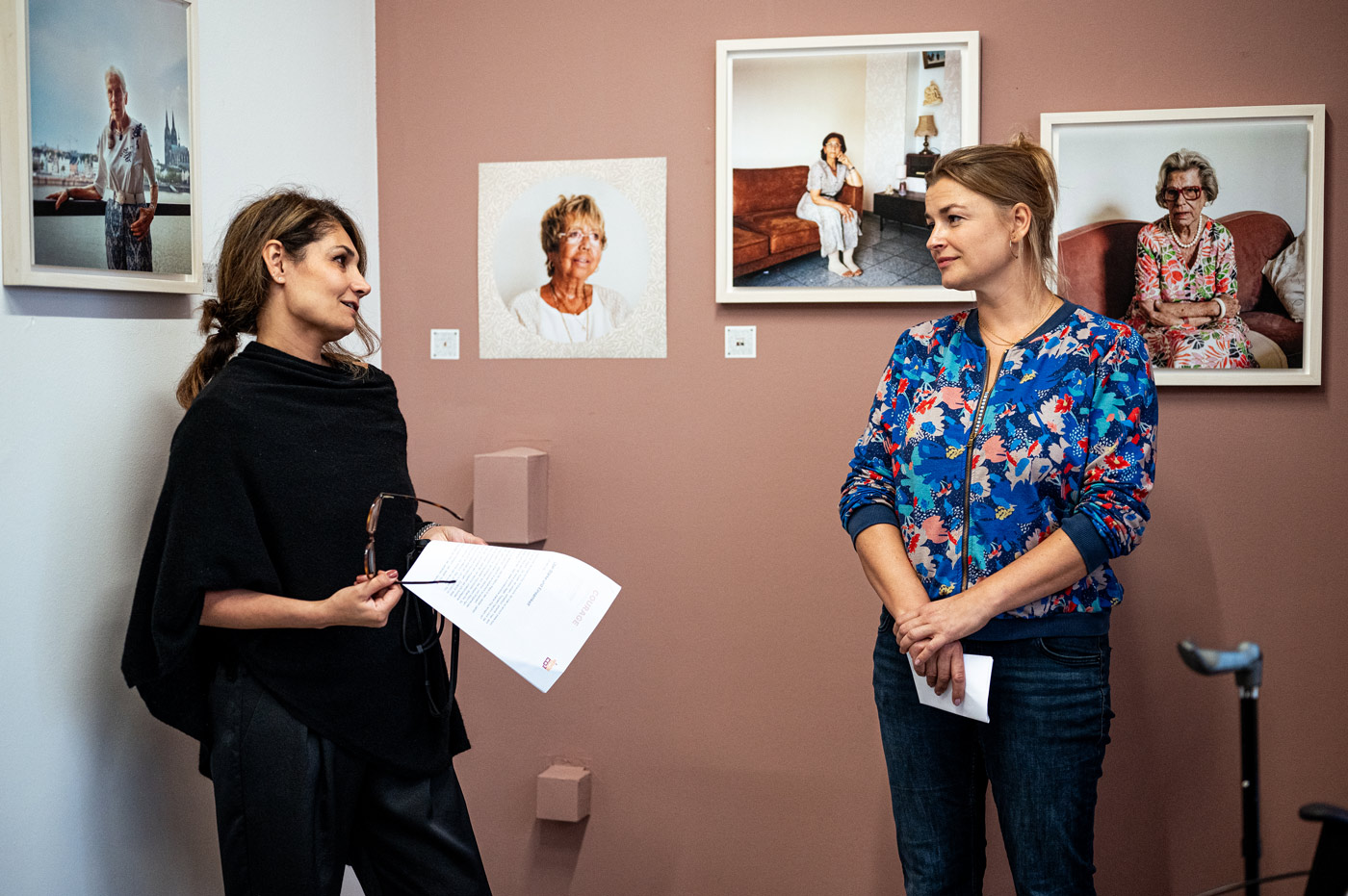
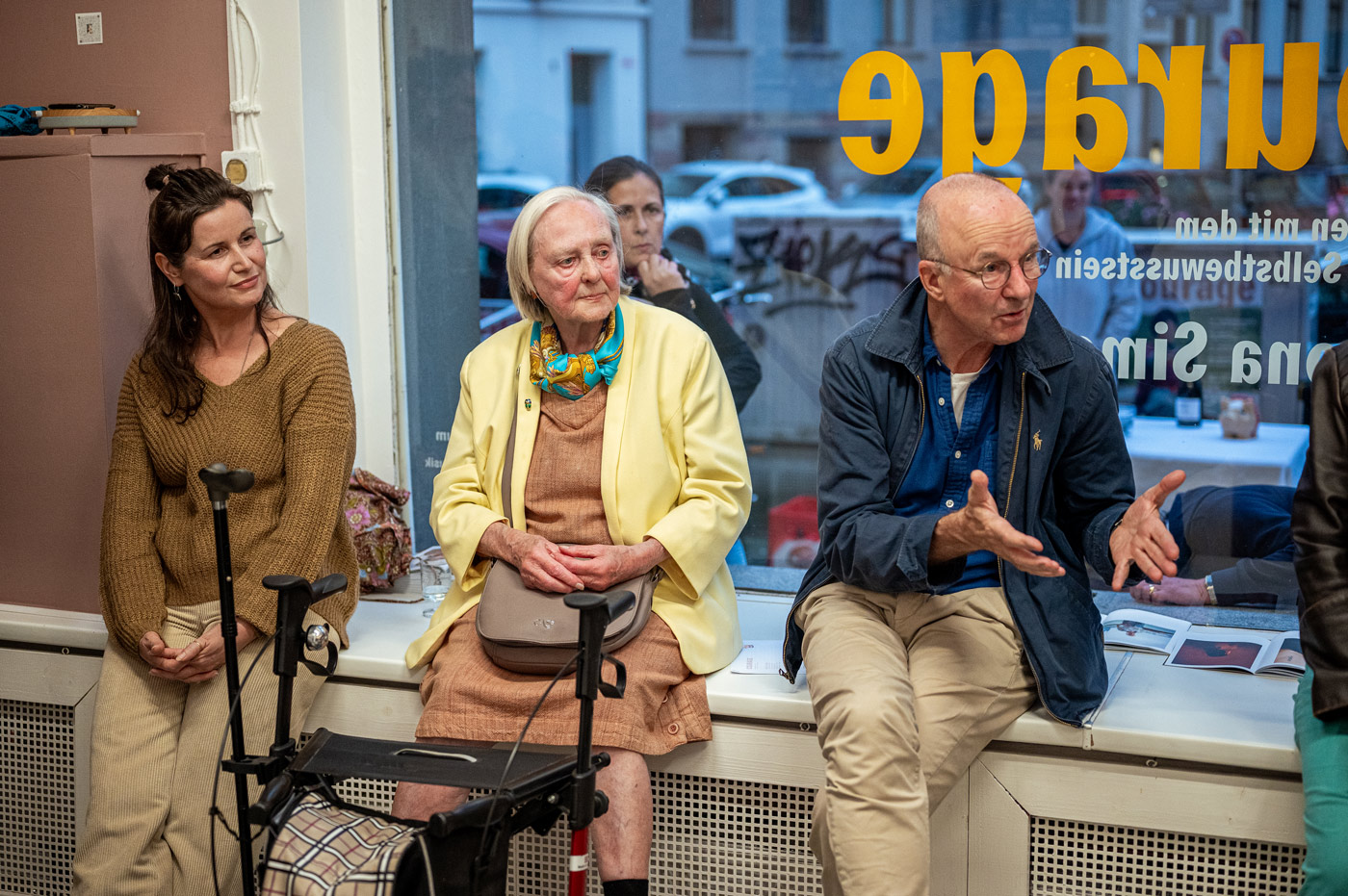

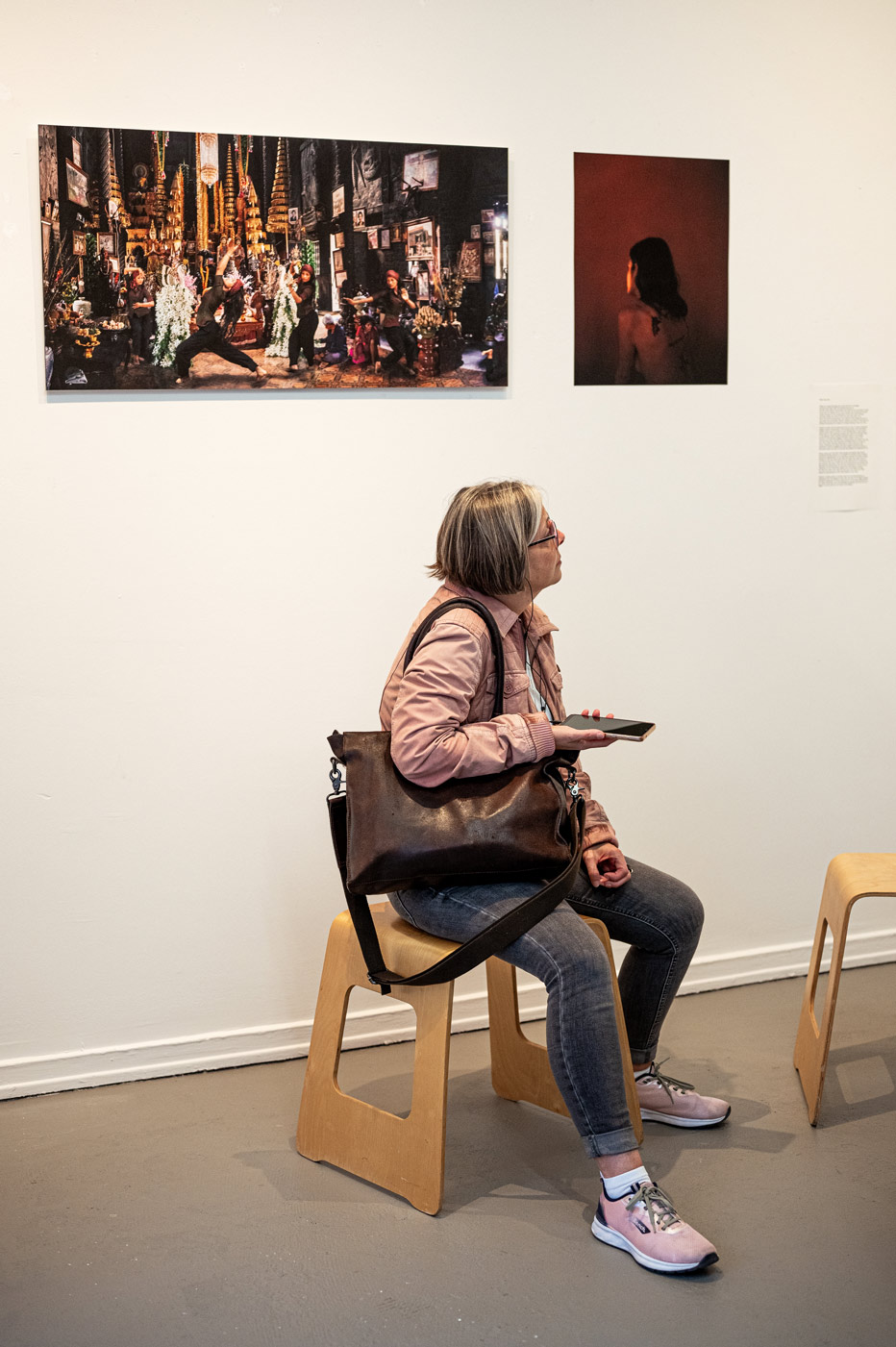
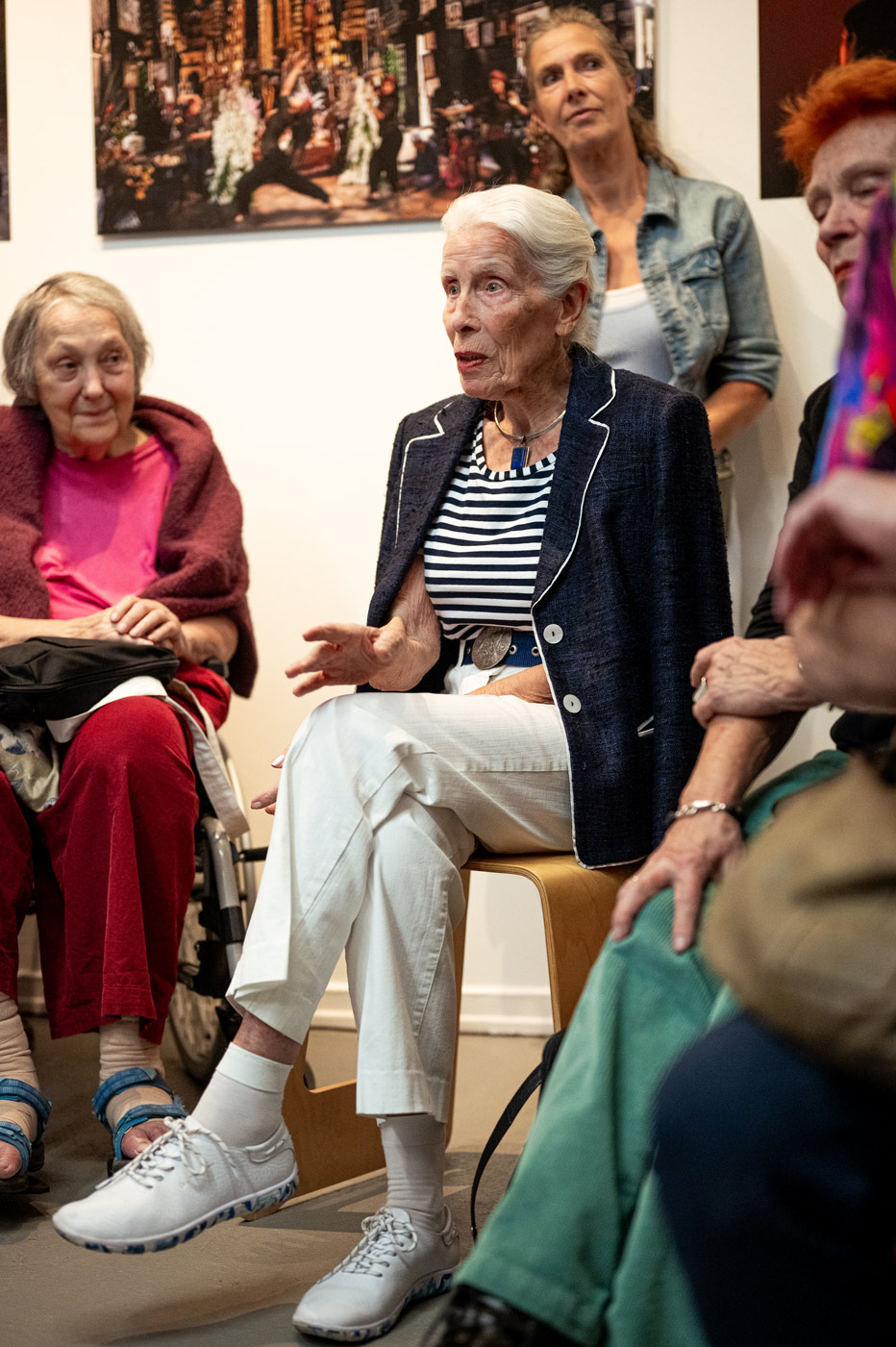
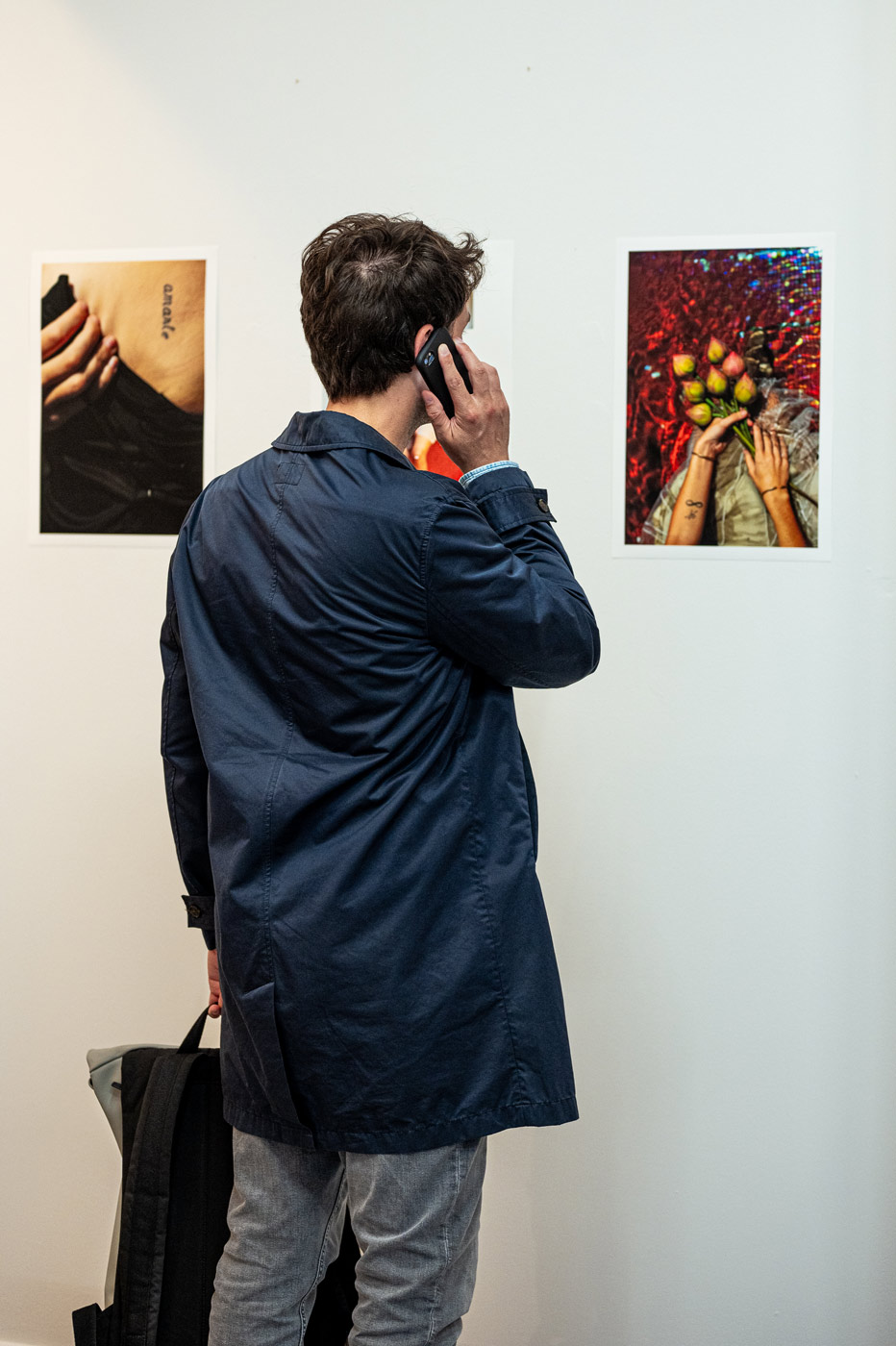
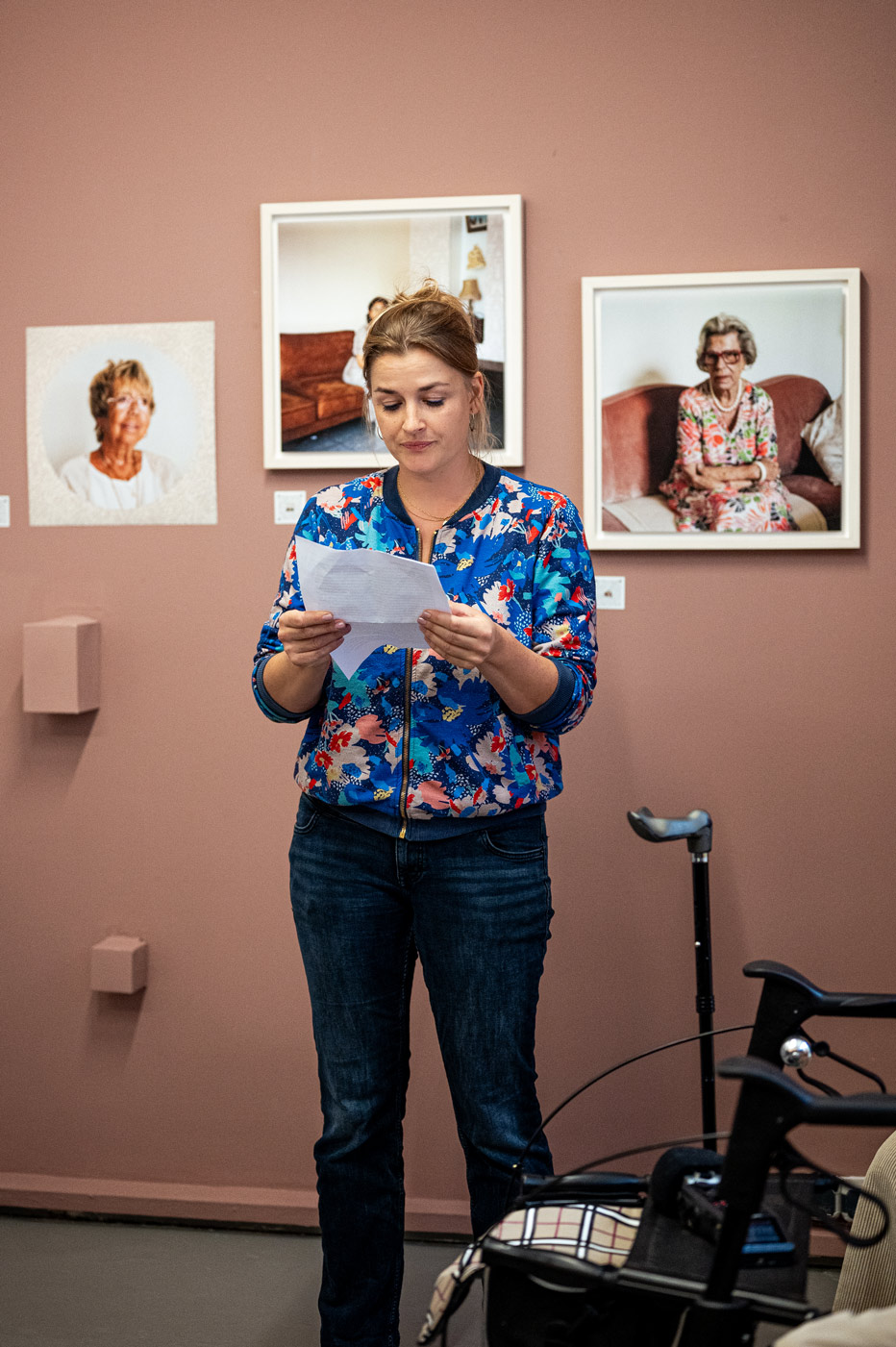
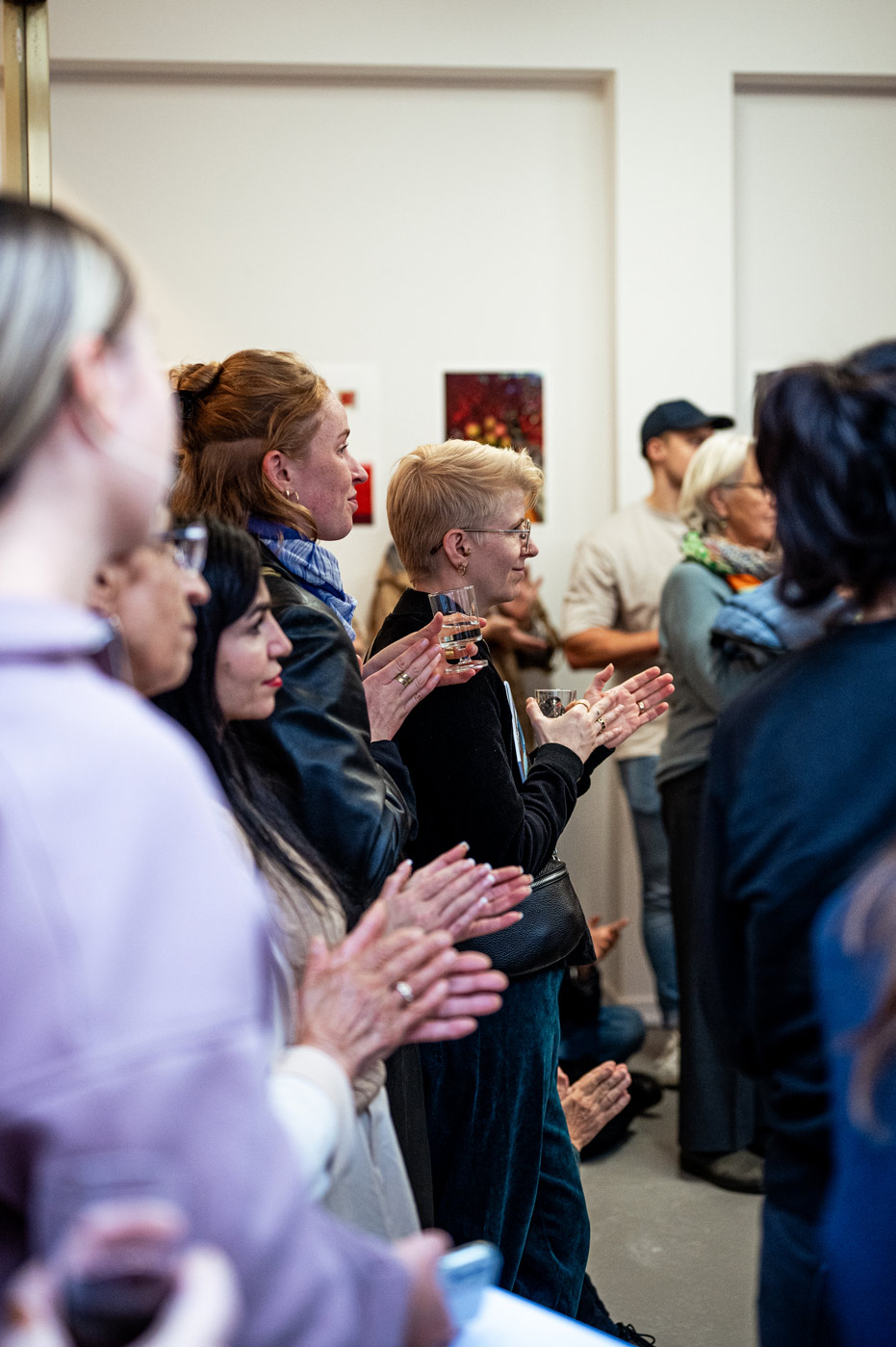

MONA SIMON
Mona Simon, born in Transylvania, Romania,
came to Germany at the age of 10.
She lives and works in various places around the world.
2005 Semester exchange at the ISDI Havana
2006 Bachelor of Arts, HfK Bremen
Mona Simon studied media design at the Hochschule für Künste in Bremen and completed her Bachelor of Arts in 2006 with “La Revolution,” a photography, book and film project that received the Best Project Award from the Hochschule für Künste Bremen. The project is a personal reflection on the connection between “Happiness” and lack of freedom under Cuban communism. To realize this multimedia project, she spends 7 months in Cuba studying design and photography at the Instituto de Diseño Industrial in Havana.
2008 Master of Documentary Photography at the London College of Communication (UK).
At the end of 2008, Mona Simon finishes her Master’s with an award-winning project called ‘Memories of a Beloved Place’, Transylvania, Romania – an internationally exhibited photo project that won the Amnesty International Human Rights Award in 2009, as well as the Canon Profifoto Förderpreis 09 and the Photographers Giving Back Award Portrait Prize, 2010, USA. In the same year, she participates in the Körber Fotopreis, Germany and exhibits her project ‘Lute Stille’ at the Deichtorhallen in Hamburg.
Since completing her studies at the Hochschule der Künste Bremen, Germany, in the mid-2000s and subsequently earning a master’s degree in documentary photography at the London College of Communication, she has held several solo and group exhibitions featuring her photography.
In her work, Simon creates a space of encounter and meeting with others – and with ourselves. As viewers, we are asked to become aware of our personal, as well as our collective, history through the art of observation.
For the artist’s complete list of works, visit: www.monasimon.com
TEXTE
We really don’t need husbands
Fiona MacGregor
Among the Mosuo people of China’s Yunnan Province, tradition dictates that women call the shots, there are no marriages and sexual partners lead separate lives, even if they have children together.
That their birth family is far more reliable than families formed by marriage. ‘We have a saying that explains it,’ says Qi Du back at the wooden farmhouse where she lives with her extended family. She’s stirring up a potent concoction of fermented rice and fried egg in a wok over the open fire that she says will help fend off the bitter, clate-Autumn cold. ‘A man and a woman are like two trees growing side by side: their roots are separate, but their branches overlap. A Mosuo saying goes something like this: ‘If you [a woman] are lying dead by the road and your love-friend walks past, he will keep walking. If your little brother sees you there, he will stop and cry.
Qi Du is a chatty, smiling woman in her early 40s with a passion for gambling on card games. She sees no reason to live with a long-term partner to achieve happiness in love, sex and child-rearing. We really don’t need a husband because in every household, you have a brother and a lama [a male family member who has been educated at the local temple and lives as a monk],’ she says. Marriage, in the conventional Western sense, didn’t exist among the Mosuo until new rules were imposed in the mid-1960s during Mao Zedong’s Cultural Revolution, forcing couples to enter official marriages in the same way as the nation’s Han majority. Until then, if a woman and man wanted to start a sexual relationship, he would start to visit her house at night. When one or both partners wanted to end relations, he would simply stop visiting.
UPHOLDING TRADITION
Today, life around the lake is changing rapidly due to increased exposure to outside cultures. But ‘It’s better for men and women to live apart because there is less conflict. If you and your love-friend live together, it will lead to arguments about lots of small things. It’s 8pm, and the moon is full behind the jagged peaks that encircle Lake Lugu like dragons’ teeth. The white eye of a motorbike headlight approaches and then passes into the blackness. Walking beside me on our return from the market, Gongts Dash Duma, or Qi Du as she is known, looks back along the road the bike rider has taken. ‘Didi – my little brother,’ she says with a grin. ‘He’s going to see his aipengyou.’ A few minutes later, a second bike bumps past on the pock-marked road, then a third. There’s a slow but steady stream of riders now and most are on their way to visit their aipengyous – sexual partners whom they usually only meet at night – travelling to their lovers’ home after sunset and returning to their own houses at first light.
Earlier visitors to this mountainous region of southwest China named such relationships ‘walking marriages’. Now, the men of Yunnan Province’s minority Mosuo people use speedier methods of travel to get to their loved ones. But the principle remains the same: when a man and a woman begin a physical relationship, neither of them has any expectation that they will share daily life or a home – even if they have children together.
SEPARATE LIVES
Here, in one of the world’s last remaining matriarchies, Mosuo men and women usually live in their mothers’ houses their entire lives, believing with the rules less rigidly enforced by the current government, many in the 50,000-strong Mosuo community choose to follow their culture’s traditions. ‘People [lovers] don’t get angry with each other, because we don’t have to get a divorce,’ explains Qi Du. ‘If we don’t get along, we don’t get along and simply stop seeing each other.’
And, she adds, since most Mosuo people remain living with their birth family rather than their spouse, break-ups are less disruptive than in other cultures. ‘The men don’t tell the women what to do, the women just do it,’ she explains. ‘If the women don’t want to do something, we won’t. If we do, we do. Qi Du’s grandmother, Gonts Bima, in common with other Mosuo grannies, is the household’s matriarch and responsible for making all the family’s major decisions. Gonts Bima, whose face is as wrinkled as the plump brown walnuts that are being harvested around the lake, is sitting by the fire cracking up with laughter at her own jokes. She gives a comic performance of charades behind her son’s back. He’s a quiet man in his early 40s with a tolerant smile. Her gestures are funny, but clearly not particularly complimentary. She’s suggesting that he doesn’t bring home enough money for the extended family’s expenses. Yet for all her daft-old-lady antics, Gonts Bima, or Ama as she is known to the family, really does hold the power in this household. The land, property and possessions all belong to her. ‘If we need money for something or want to buy something important, we have to ask Ama,’ explains Qi Du. It’s also Gonts Bima to whom family members turn for advice. ‘When you were younger, didn’t you feel embarrassed speaking to your grandmother about personal matters to do with being a boy or becoming a man?’ I ask LiJia Zuay, 35. ‘Of course not,’ he replies, looking puzzled. ‘I am never embarrassed with Ama.’
A HARD LIFE
Kuma, a bustling grandmother in her early 60s just laughs when asked if the men know that the women are in charge. ‘Of course they know. They know we are too important,’ she says. ‘Our culture is a good one, because women are free to make choices in love. The women have high status.’ But power brings responsibilities, and Kuma, in common with other Mosuo women to whom I speak, believes that a woman’s life is much harder than a man’s. ‘The women do everything, it can be very hard,’ she says with a sigh. ‘The men say they are full [after dinner] and don’t want to do anything.’ Modern life is also bringing changes to how Mosuo women feel about their power. Traditionally, men have taken little responsibility for raising their own children. In general, this hasn’t been seen as a negative. ‘Mosuo men are a lot less selfish than Han men because Han men only care about themselves and their immediate families, but Mosuo men care about everyone,’ says Kuma. Male role models are traditionally provided by the children’s maternal uncles, who live in the family home. But the traditional system means that the burden for providing most of a child’s physical and material needs lies with its mother, and the cost of raising a child alone is the most frequen tcomplaint raised by Mosuo women when discussing their matriarchal lifestyle. ‘It can be very difficult,’ explains Qi Du. ‘The men have labouring jobs, but often they won’t give money for the children.’ In the past, when the Mosuo lived a more subsistence existence, a child’s material needs were relatively basic. Now, with more exposure to the outside world through tourism, television, commerce and schools, women here say that they feel pressure to buy things for their children. This is one of the main reasons many women now prefer to have longer-term relationships with the father of their children and encourage them to be more involved in parenting. Older Mosuo women understand why the change is happening.
MOVE TO MONOGOMY
Ja Shima, a remarkably sprightly woman of 86 with a distinct fondness for baiju (the local rice spirit), had six husbands and six children by different fathers. Each relationship lasted between one and four years. ‘Three of them left me, and I left the other three,’ she says of her former husbands. ‘It was a hard life, because we never had enough food in those days and often the men didn’t contribute to the children’s upbringing. But if a man was no good in that way, I would just get another one.’ However, she thinks that it’s better now for women to stick with one man, at least while the are growing up. ‘Children were easier in the past. They didn’t need so many things and you could just make things for them,’ she says. ‘Now it’s harder for mothers if the men don’t contribute.’ Her neighbour, Li Hua, an efficient, handsome woman in her early 30s, agrees. She’s the only woman in the village who lives full time with her husband, the pair running a small guesthouse for the few Chinese tourists prepared to venture this far into the Yunnan–Schezchuan border region. ‘People think I am odd,’ she says with a sigh. ‘But it’s much better if you live with your partner. Many of the women with love-friends don’t get enough help to get things for the children.’ As if on cue, her husband arrives home from the market bearing several tiny pairs of socks and other clothes for their ten-month-old baby boy, who sits on the earth floor playing with sticks from the fire. The Chinese government’s one-child policy doesn’t apply to many of the country’s minority peoples, who generally live in less-populated rural areas. Mosuo women are allowed two or three children depending on which province they live in. Unlike the Han, who generally value boys above girls, Mosuo are happy to have daughters.
DESTINED FOR DIVORCE
Most Mosuo women still prefer to live apart from their lovers, even if they’re in a long-term relationship. One morning, as Qi Du prepares breakfast of black pudding and fried flat-bread, there’s an old man sitting beside Gonts Bima at the fire. I ask who he is, and Gonts Bima giggles like a schoolgirl, quickly makes a cross sign with her fingers to indicate that he is her love-friend, and then gestures that it should be a secret, although clearly everyone in the room knows exactly who he is. The pair have been together for decades, but generally it isn’t considered polite to discuss personal relationships in front of the men. Later, Gonts Bima explains that during the Cultural Revolution, she and her love-friend were told they had to live together as man and wife, but as soon as it was over, they went back to living apart. ‘We prefer it this way,’ she says, grinning. ‘We get on better. ’And younger Mosuo woman can also find it difficult to settle into sharing their home with a husband. Kuma tells me that, quite often, Mosuo women who travel to the nearest city, Lijiang, for work will marry a man they meet there, but such relationships often end in divorce. ‘I wasn’t happy living with him, we weren’t getting along,’ says 19-year-old Xiao-Juan, who married and had a baby with a Tibetan man she met there 18 months ago. Her baby still spends time with his father, but Xiao-Juan has returned to her village and already has a new love-friend. ‘I am happier now,’ she says. The intrusion of the wider world is also changing attitudes. There are still a few Mosuo villages without electricity, but in the majority, television has taken over from local dances as the evening entertainment of choice. With it has come the ubiquitous Han-Chinese soap operas – implausible dramas in which submissive female characters seek lifetime happiness with their hero of choice. It may be a coincidence, but Mosuo women, self-reliant for so long, now also speak about how nice it would be to have one man there to look after them during difficult times, but the pace of change is slow and most prefer the old ways.

I am trying to love myself in a world where I am not enough
But in the next breath I am told I’m actually just too much
A world where it seems insincere when I’m positive and sunny
A world where if I’m being quiet, I’m asked why aren’t you being funny
A world where I had my first kiss at 12 which I stopped when he touched my boob
A world where 12-year-old me apologised to him for ruining the mood
A world where I’m called a bitch when I’m humorous and witty
A world where I am often told if I lost some weight, I’d actually be quite pretty
A world where it seems a safe space is impossible to find
A world where you can trust no one, not even your own mind
A world where self-worth and confidence seem like something to fear
A world where I make resolutions and break them at the start of the new year
A world where I feel exhausted and run down and always on the go
A world where I constantly say sorry and feel bad for saying no
So I have decided to just be who I am, exist and try my best
And give my weary mind, body and my bruised heart some very much needed rest.

Dounji Muon,
Born 1938
Cambodia, 2014
It is still dark when Dounji Muon wakes up. Like the other nuns, she starts her day at 4 a.m. with meditation and prayers, then helps clean and prepare meals. Dounji Muon, however, spends the bulk of her day tending to the garden. Here, she says, she has found peace and tranquility, in part by giving her vegetables and fruits to the monks.
After her husband was killed and her 1,000 orange trees destroyed, Srey Moan, along with her mother and then young daughter, were captured by the Kmehr Rouge and held as laborers in the jungle for several years. In 1982, after the death of her mother, she and her daughter, then in her early 20s, came to Battambang and found a peaceful life in this monastery where they left behind the torment they had endured in their turbulent lives. Mother and daughter have since shared a small hut, and spend their lives together with the other nuns in the daily rhythm of the pagoda.
I understand that the monks remind us of the greatness of Buddha. In a way, serving them is like serving Buddha, says Dounji Muon.

Dharma
Kosorl, Born 1996
Cambodia, 2014
Kosorl, whose name means “virtue” in Pali, knew even as a child that she wanted to become a nun. After her parents separated, her mother decided to live in the pagoda, taking her young son with her, but her daughter stayed with her grandmother and was not allowed to follow the rest of her family into the monastery until she was 13. Kosorl remembers her first encounter with little monks well, who awakened in her the desire to be a child-monk as well. However, she was denied this wish because she was a girl. Despite this experience, or perhaps because of it, she held on to her desire to become a nun, but not like her mother, who, after separating from her father, decided to dedicate her life to monastic life and monks.
“Being a nun in Cambodia is not easy,” Kosorl says. Unlike the monks, the nuns here are hardly appreciated by society, although the nuns devote their time and dedication to them. Kosorl, like the monks, wants to follow her own path of knowledge, not the servant’s path.
She is the first Cambodian nun to go to Sri Lanka and study Pali and Buddhism at the university in Colombo. She also decided there to change the color of her robe from Cambodian white to Sri Lankan sapphire red. There she experienced a new form of equality. In the meantime, she is back in Cambodia, where she teaches and considers the lives of Cambodian nuns through her master’s thesis.

Mae,
Nat Nari, Born. 1953
Cambodia, 2014
Nun Superior Nat Nari, known as Mae (Khmer for “mother”), is the leader of the nuns at Andeuk Pagoda in Battambang, Cambodia.
After her family died in the war, she found refuge here as a nun. This was a life-decision that the then 27- year-old made, although the monks she served were not very happy about having a young woman in the pagoda for they feared she would be harmed by being there, especially by the Vietnamese soldiers who occupied the area at the time. The monks eventually agreed to share what little food and shelter they had while Nat Nari, along with five elderly women who were living in the pagoda at the time, would care for them.
Now, in addition to the 50 monks, the Turtle Pagoda also houses 40 nuns who are allowed to devote time to their spiritual development in addition to their daily chores. They owe this to Mae, who has led this pagoda to be one of the very few in Cambodia to offer nuns space for meditation and Dharma instruction.
Mae, who never wanted to be a wife and mother, imagines such a life to be far too exhausting because it is exclusively dedicated to the welfare of the family and offers no room for self-development. No “wonder women have never become Buddhas, she says, women simply have far too much to do and no time f
About Strength and Loneliness
Angelina Jolie: The loneliest woman in Hollywood. This or something similar was recently the headline of OK! magazine. They should know, after all, they work strictly according to the no-source rule. Nevertheless, the headline touches me. Can it be that this beautiful strong woman is lonely? I suspect so.
Let’s briefly recap what the Yellow Press has reported about Jolie’s life in recent years – maybe it actually happened. After a wild youth and two marriages between alcohol and drug excess, Jolie snatches another woman’s husband. This man is one of the most popular actors in Hollywood: Brad Pitt. Years of reformation follow. The two donate a lot of money to the underprivileged, adopt children from all over the world. Jolie works very dedicatedly as a UN special ambassador. Then she makes two difficult decisions. First, she has her breasts, ovaries and fallopian tubes removed to minimize her risk of cancer. She speaks publicly about this decision. What is this prototype of female sexiness now for a woman? How is she perceived?
A few years later she separates from her husband because he has problems with alcohol. The image of the perfect family is damaged. Brad Pitt remains the popular star, finally the man is available again. Jolie is just too much with her perfectionism, who can stand it? Of course, Angelina Jolie is the loneliest woman in Hollywood – and too thin.
This story exemplifies the fact that there is a connection between strength and loneliness. At least for us women. Strong men are attractive and courted. Women are more popular when they show their weaknesses, when we women can identify with them in their imperfection. Jolie has made some strong choices. Couldn’t she have just been content with her life? After all, she had everything a woman could ever want.
For me, a strong woman is one who decides something for herself and acts on it because her moral compass won’t let her do otherwise. A woman who fights to keep her backbone, even if there are other, easier ways. A strong woman is a woman who emancipates herself. Emancipation is not a state, it is a lifelong process that must be chosen over and over again. The Latin word emancipatio means: the release of a son from paternal authority or the release of a slave. For the person concerned, these are passive acts, freedom is given to them. Female emancipation consists of active choices that we make and with whose consequences we have to live. I write this in great humility before all the women who fight for their rights, especially in riskier places in the world, endangering their lives and those of their loved ones.
And yet. Sometimes even small decisions are difficult, necessary so that we can continue to look at ourselves standing tall in the mirror. Separating from people who are not good for us – even if a classic family would be better for the children. Standing up for the weak – even if it has negative consequences for ourselves professionally. To keep our backbone every day, not to let ourselves be corrupted by bad things. Emancipation means becoming independent. Doesn’t that also mean being able to stand alone?
But standing alone doesn’t necessarily mean standing lonely. Why does it still feel that way? The psychoanalyst Margarete Mitscherlich provides a satisfying answer to this question in her book “The Radicality of Age”. She finds it understandable that many women are afraid to emancipate themselves. Women break away from behaviors demanded by family and society which many people still see as feminine. “Disappointing male (and female) expectations of this kind is associated with loss of sympathy and love, and can make women outsiders to the society that surrounds them.” So it’s not about the specific decision itself, but always about our immediate environment. Everyone has their own interests in the choices of others: parents, partners, friends.
Thus, a mother who in her youth fought for the right to abortion may come into conflict with her daughter today because she does not want to accept the daughter’s self-chosen childlessness and wants grandchildren. The daughter will feel lonely despite her strong decision. Or for example, an old friend may suddenly break off contact because she does not want her newly-separated friend – someone she advised to separate for years – to meet her own husband- because she does not dare to take this step herself. The girlfriend will feel lonely despite her strong decision.
Mitscherlich describes the consequences in the worst case of self-actualization like this: “You have to adapt your behavior to what your ‘sisters’ expect of you, otherwise you are not a truly emancipated woman and don’t belong to us.” In order to be able to stand alone but not become lonely, I have to make strong choices, but in doing so I must not go beyond the expectations of my sisters in the society immediately surrounding me?
How about accepting that emancipation is a lifelong, individual process that must be chosen again and again? With steps forward and steps backwards. Sometimes we anxiously take a few steps backwards, because even courage is not a permanent state, and we cling to old role models. How would it be if we generously reached out to the other sister even during our own temporary backwards step, so that she doesn’t feel quite so alone in her step forwards in progress and strength? That would be wonderful.
Ines Lutz
PRESS
WDR2 FERNSEHBEITRAG
LOKALZEIT KÖLN
STARKE UND STOLZE
FRAUEN AUS ALLER WELT
KÖLNER STADTANZEIGER
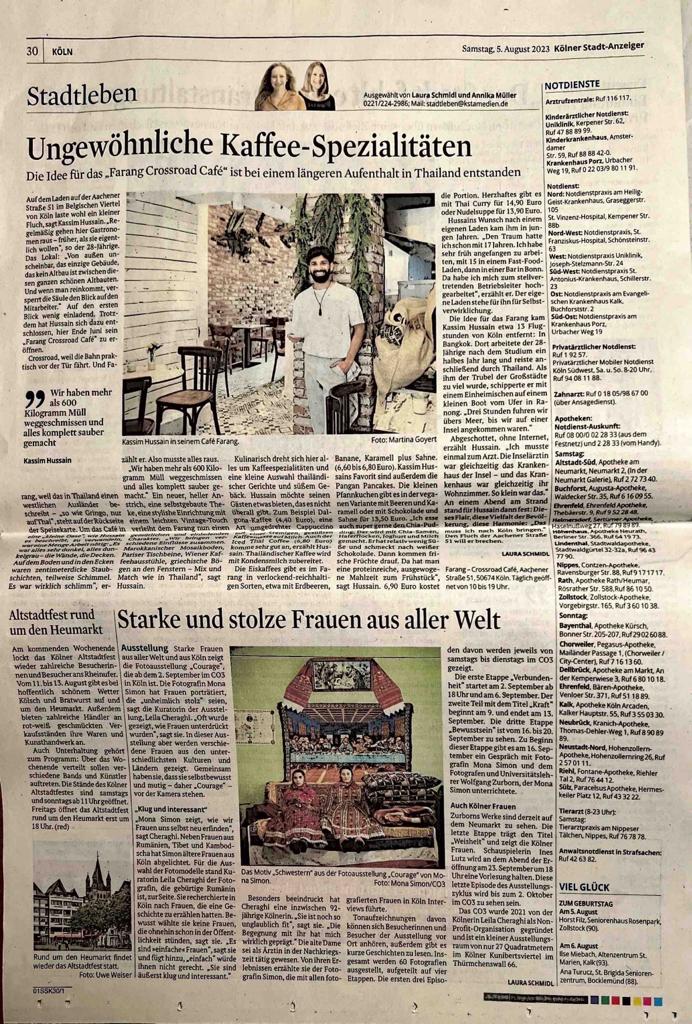
COURAGE
EXHIBITION FLYER
IMPRINT
COURAGE
Encounters with female
self-confidence
Photographic works
by Mona Simon
September 2 – October 1, 2023
We would like to thank Mona Simon and all the above-mentioned individuals whose commitment made the creation of the exhibition, the program booklet and the website possible. We would also like to thank the Cultural Office of the City of Cologne and the Ministry of Culture and Science of the State of North Rhine-Westphalia for their generous support.
©2023 CO³
cologne | contemporary | concept

Herausgeber
CO³ cologne | contemporary | concept
Thürmchenswall 66, 50668 Cologne
www.co3art.com
Curation
Leila Cheraghi
Consultation
Nina Lindlahr
Program Graphic Design
Jan van der Most
Texts
Leonie Pfennig, Fiona MacGregor, Blaise, Ines Lutz
Editing
Willi Reinecke
Website
studiokoly.com
Documentation Photographer
T Hollweck



